Enjoying the book? Leave us a review! If not, contact us at info@infiniteinkpress.org"
Master key road signs and their meanings with our comprehensive collection of flashcards designed to help you succeed in your driving test.
.jpg)


When practicing with flashcards, be consistent and use repetition. Set daily review times, shuffle the cards, and use spaced repetition to reinforce your memory. Stay patient and persistent to build a strong foundation for your exam success.

A divided highway ends ahead sign is a warning sign that indicates the end of a divided highway, where traffic will soon travel in both directions on the same road. Drivers should keep to the right and be cautious of oncoming traffic as the lanes merge.
Key points to remember:
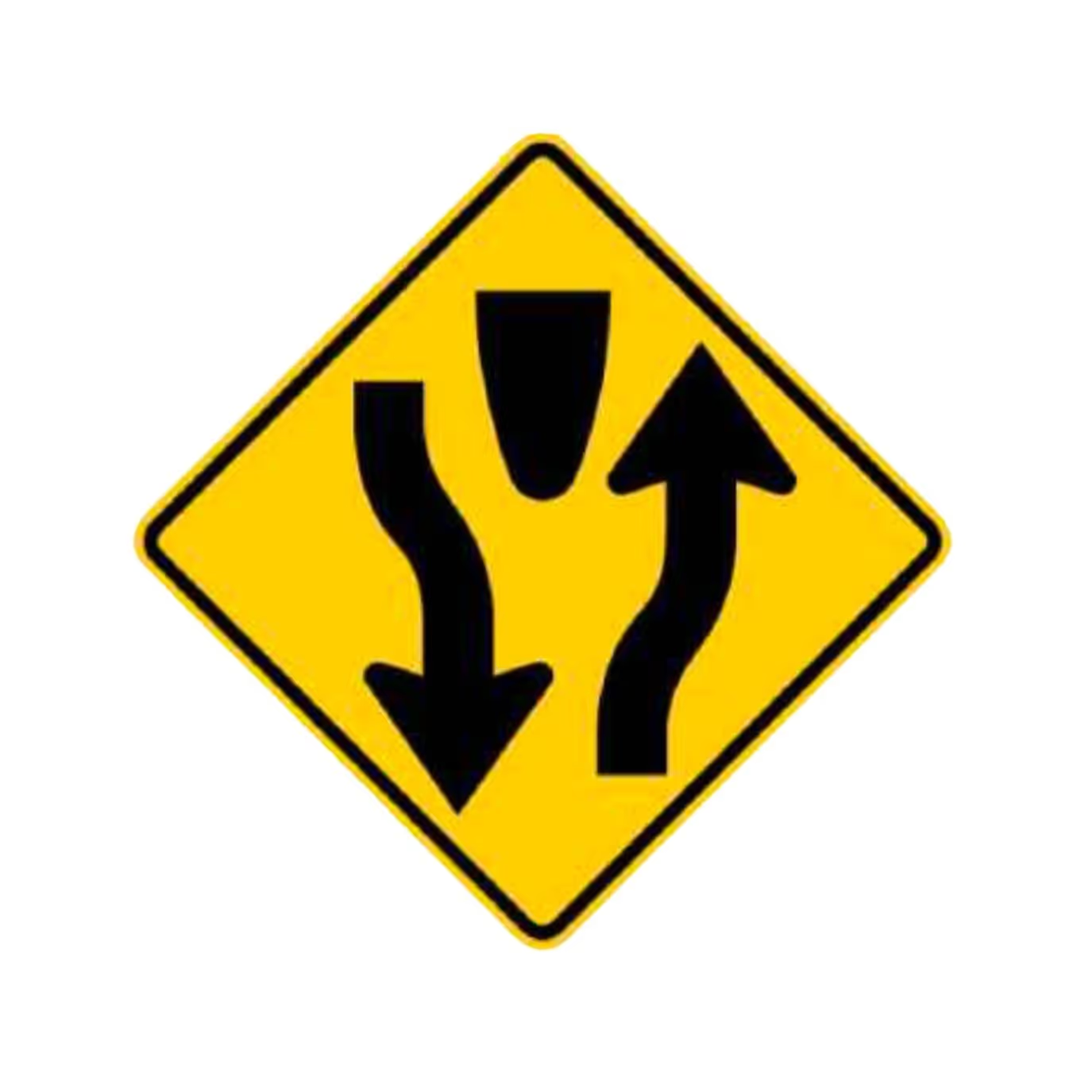
A median ahead sign warns drivers that the road ahead will split into a divided highway with a median or barrier separating traffic moving in opposite directions. Drivers should prepare for this change and proceed with caution.
Key points to remember:
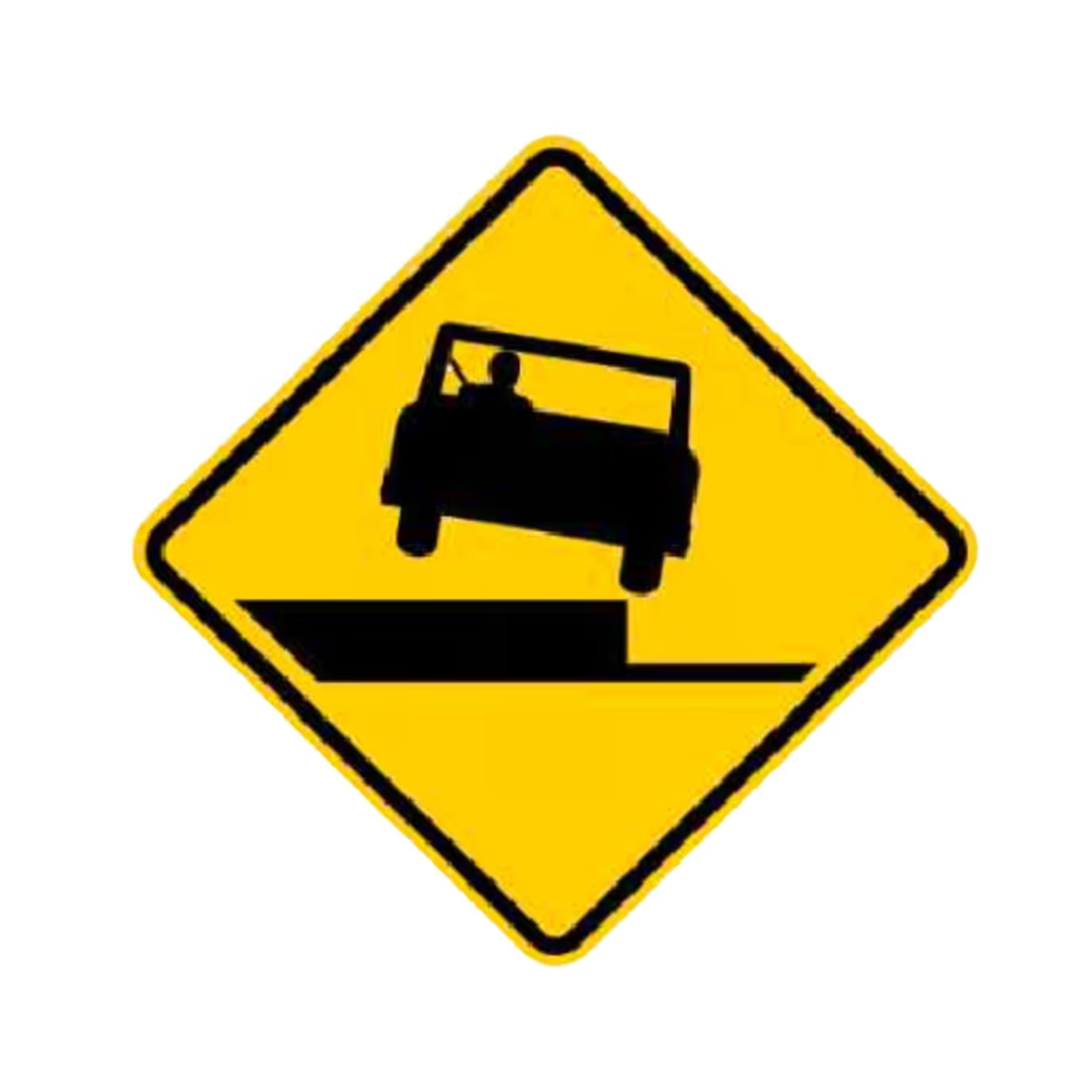
This warning sign indicates that the road shoulder is much lower than the road surface, which could pose a risk if a vehicle leaves the pavement. Drivers should avoid leaving the pavement except in an emergency.
Key points to remember:
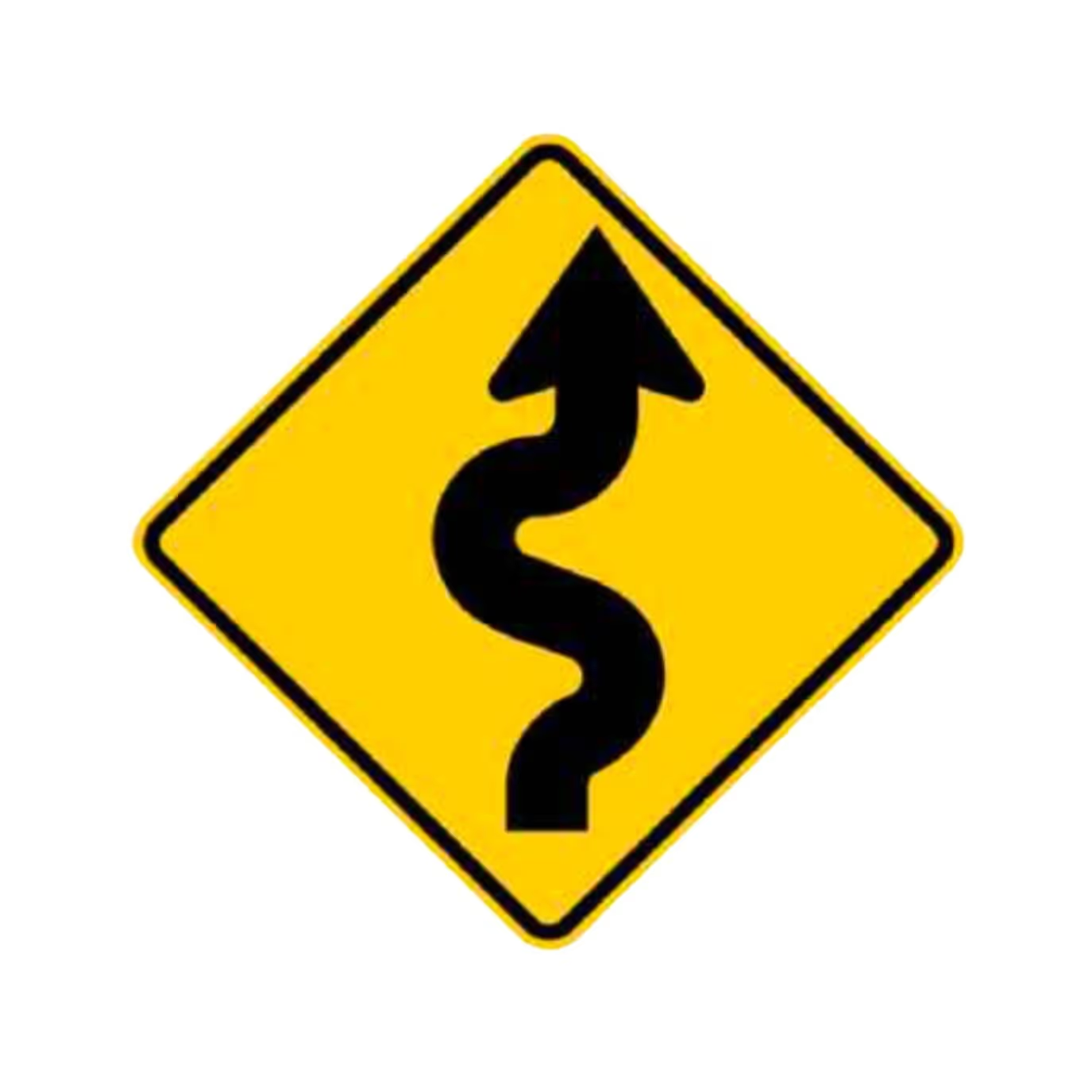
A winding road sign is a warning sign indicating that the road ahead has several curves. Drivers should reduce their speed and keep to the right to safely navigate the winding path.
Key points to remember:
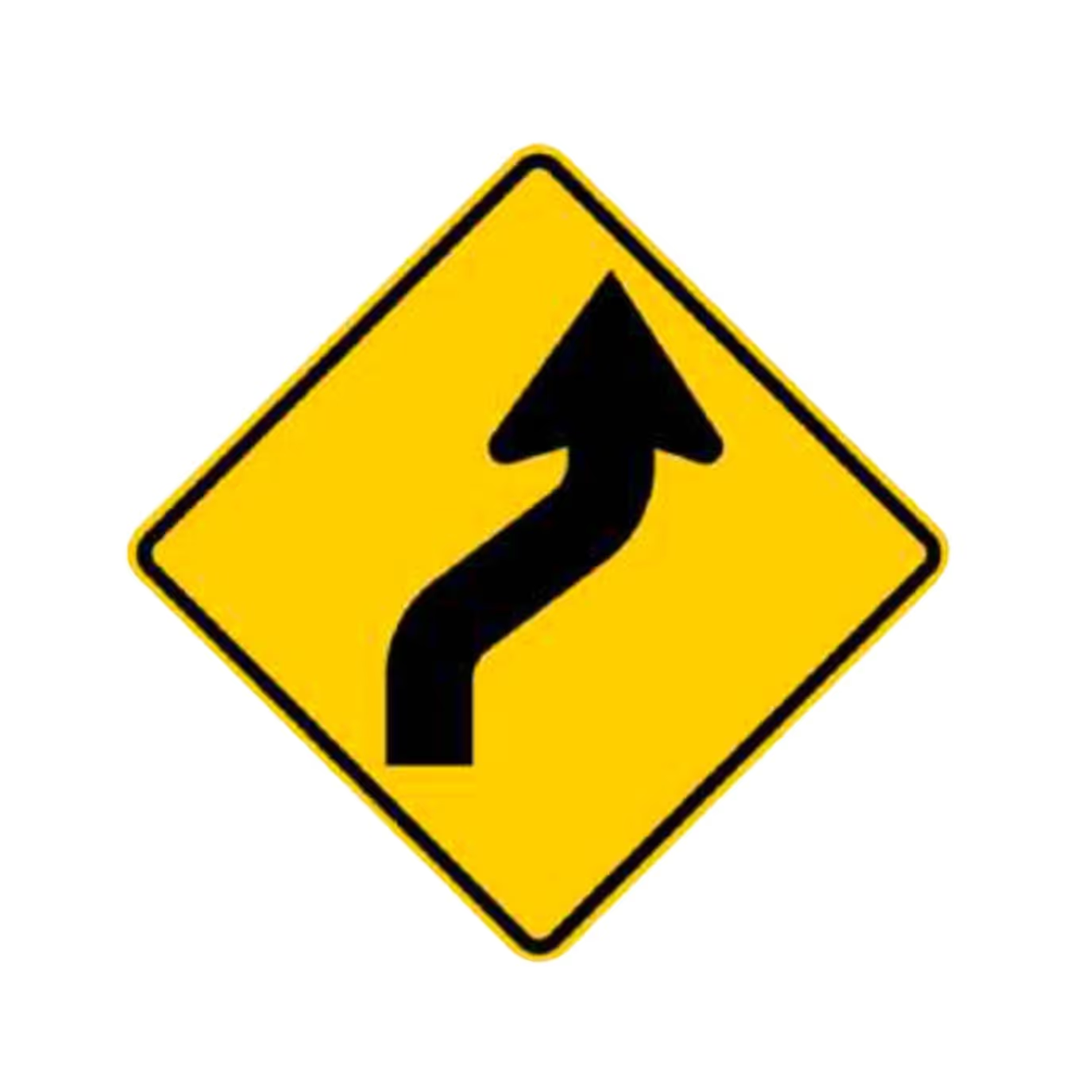
This warning sign indicates that the road ahead will curve first to the right and then to the left. Drivers should slow down and be prepared to navigate the curves.
Key points to remember:
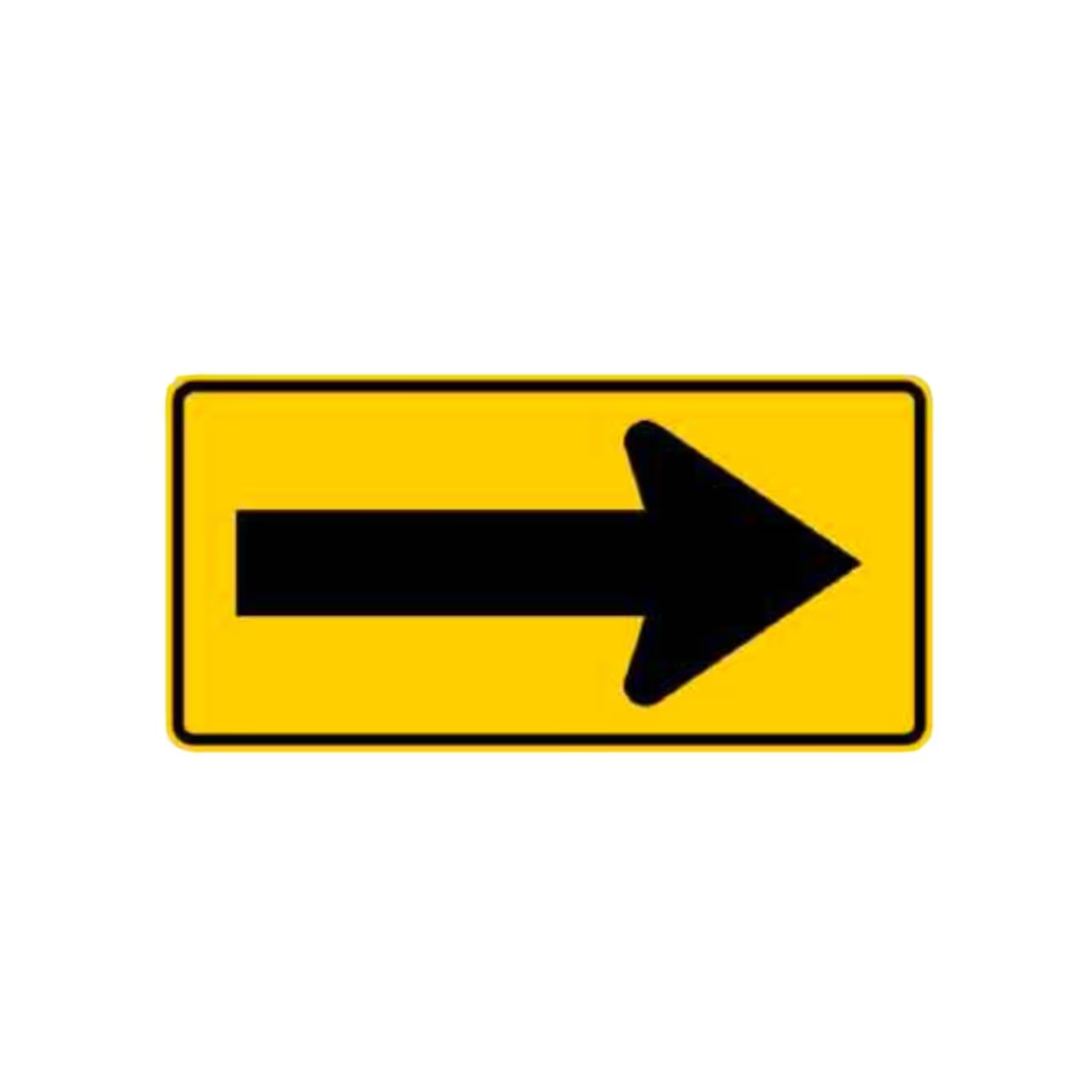
A directional arrow sign indicates the direction of travel that drivers must follow. This sign is commonly used to guide drivers at intersections or along curved roads.
Key points to remember:
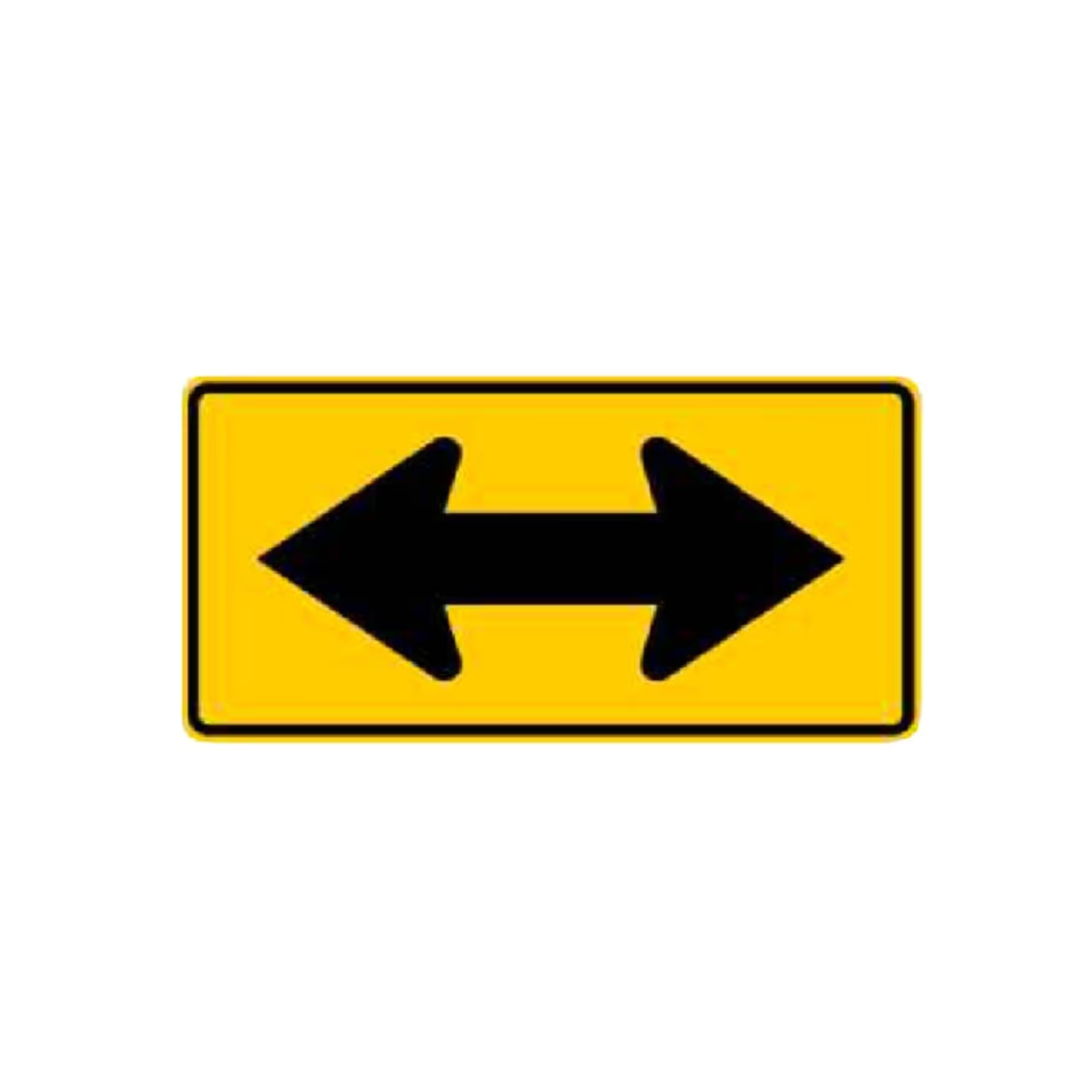
This sign, typically found at T-intersections, indicates that drivers must yield the right-of-way or stop before turning onto the main road. It helps prevent collisions by ensuring that entering traffic yields to vehicles on the main road.
Key points to remember:
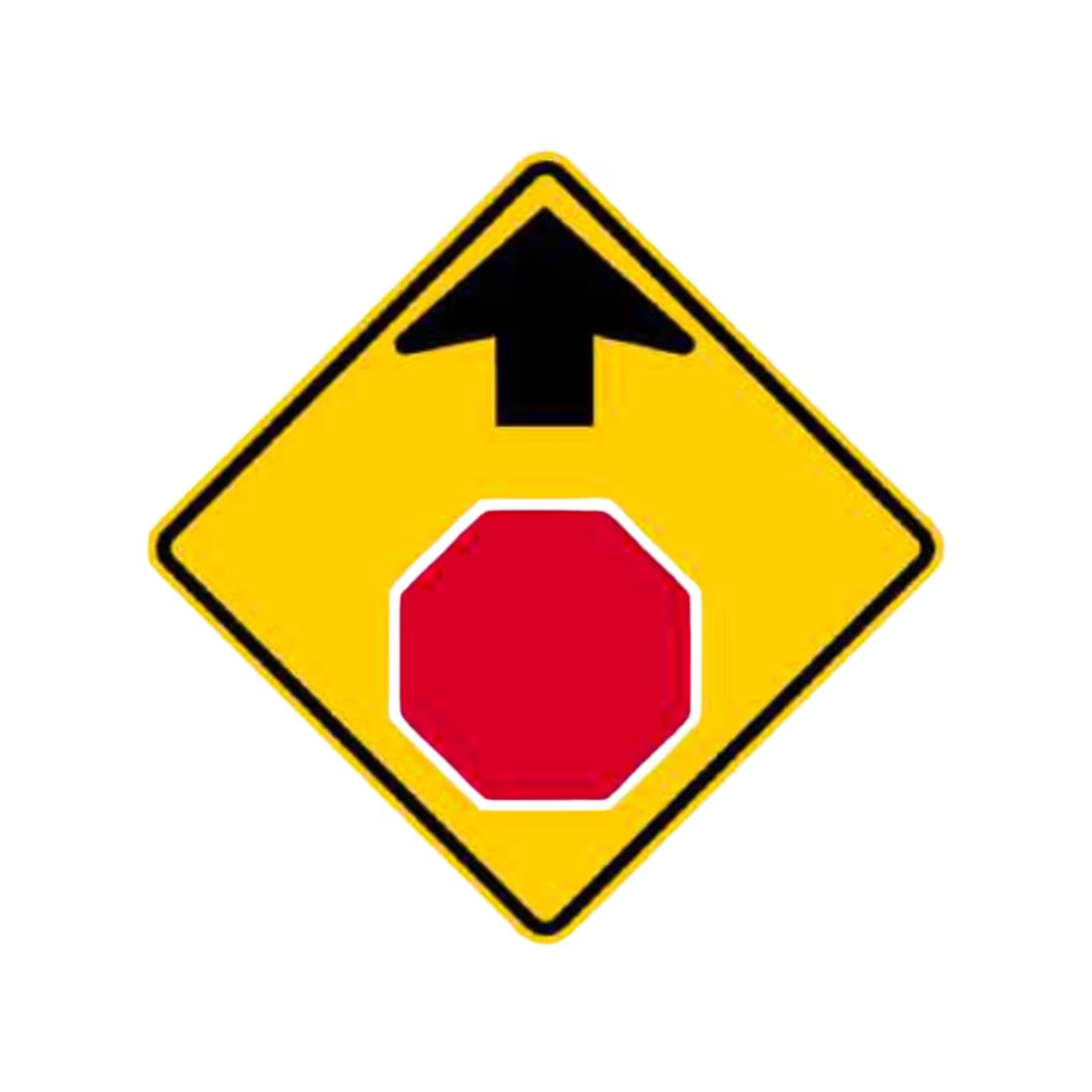
A stop sign ahead warning sign alerts drivers to prepare for a stop sign coming up. Drivers should be ready to come to a complete stop before proceeding further.
Key points to remember:
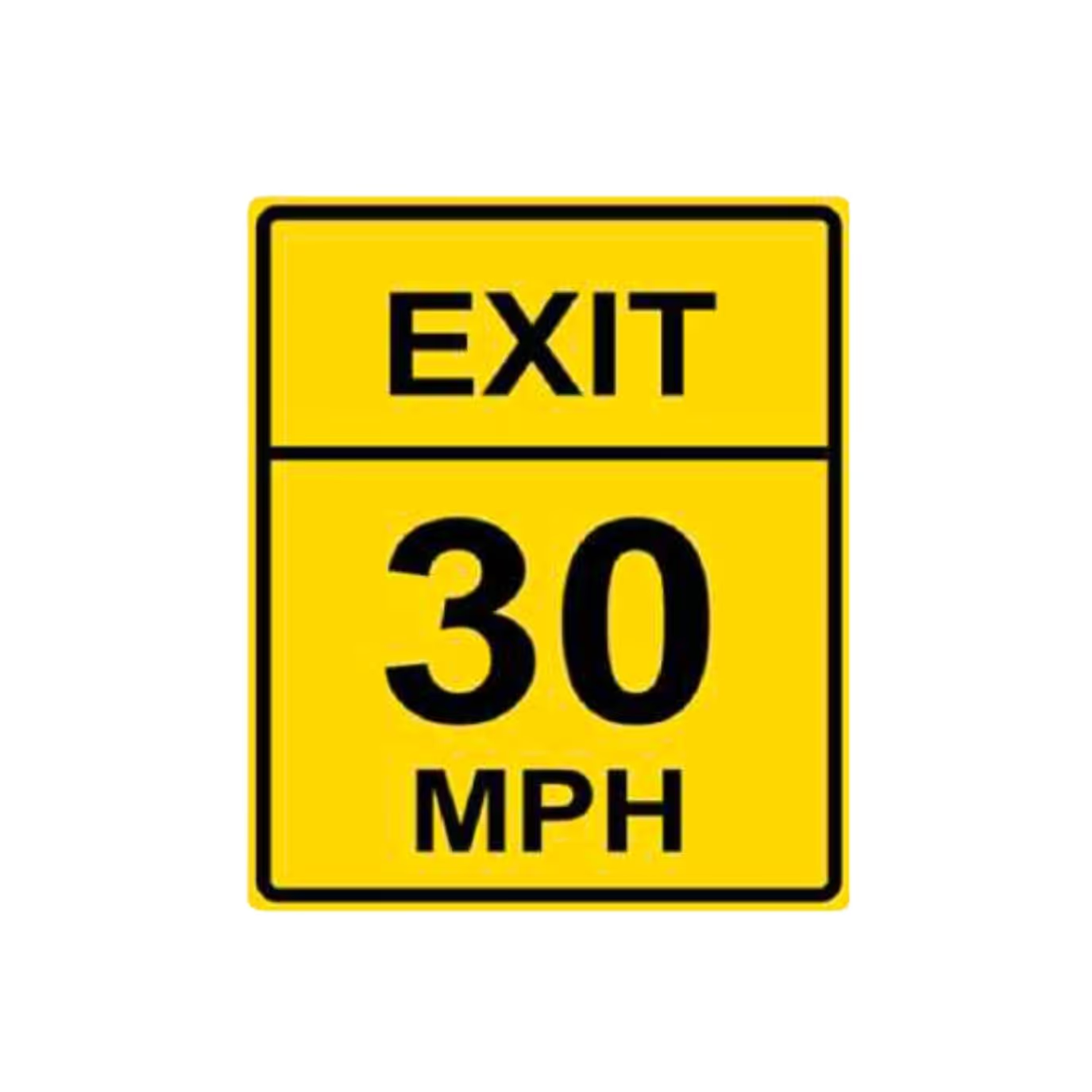
This warning sign indicates the maximum recommended safe speed for entering or exiting a particular section of the road, such as an expressway. Drivers should slow down to the speed shown to maintain control and safety.
Key points to remember:

A soft shoulder sign warns drivers that the shoulder of the road is not paved and may be unstable. Drivers should avoid leaving the pavement unless necessary.
Key points to remember:

This warning sign indicates that a narrow bridge is ahead. The bridge may be only wide enough to accommodate two lanes of traffic with minimal clearance. Drivers should slow down and be cautious of oncoming vehicles.
Key points to remember:
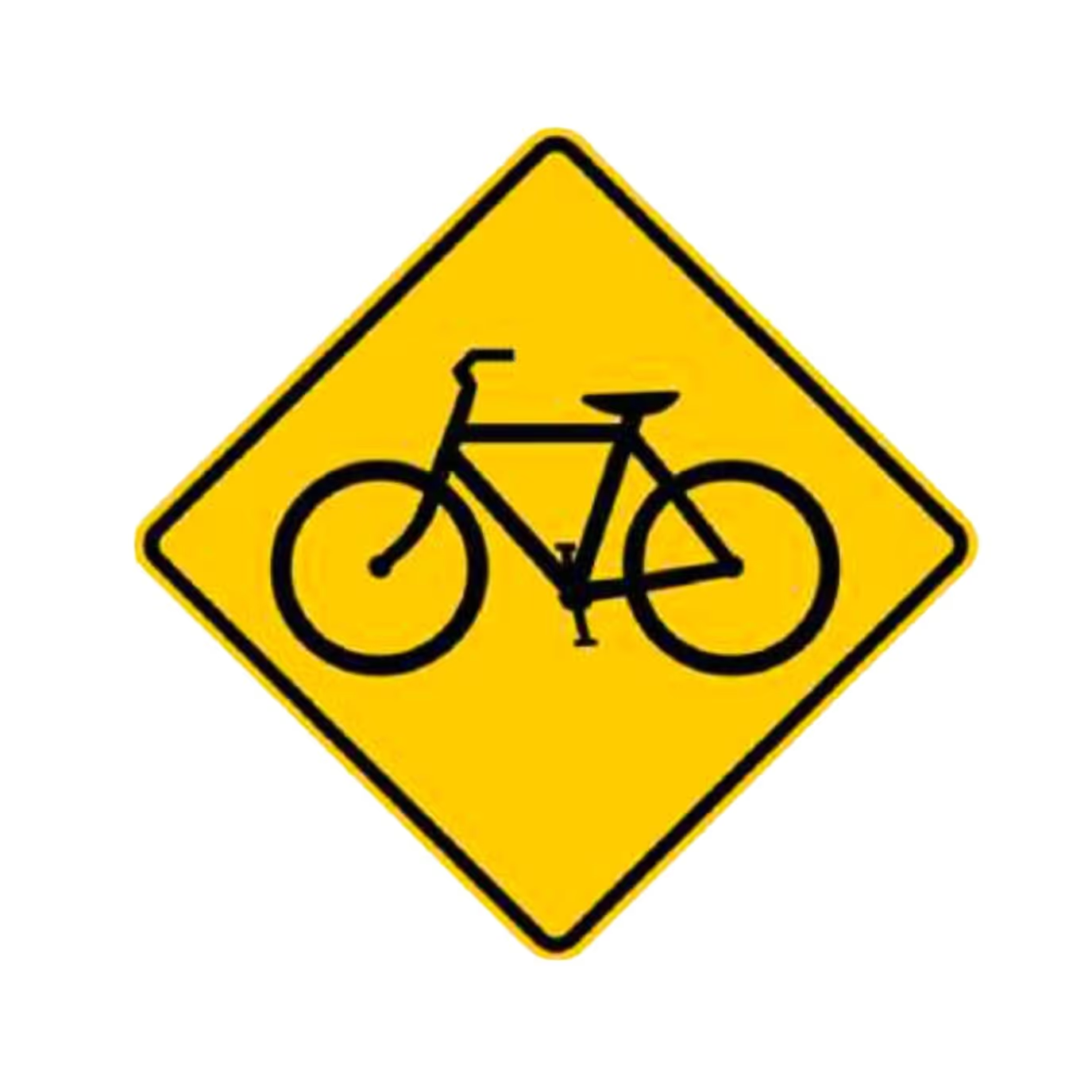
A bicycle crossing sign warns drivers of a bikeway that crosses the road ahead. Drivers should slow down and be prepared to yield to cyclists.
Key points to remember:
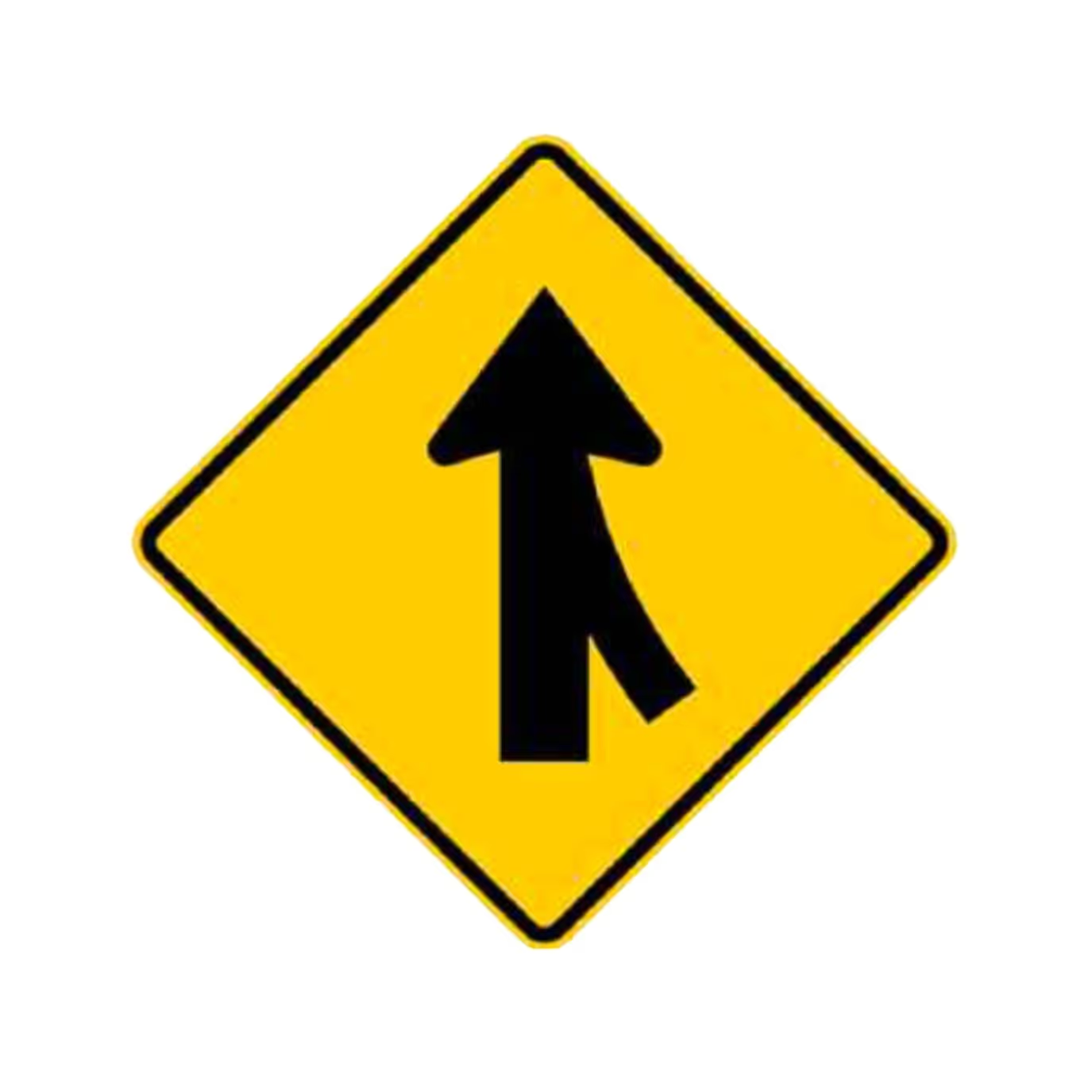
This warning sign indicates that traffic from another road or lane will be merging into your lane. Drivers should be prepared for merging vehicles and adjust their speed accordingly.
Key points to remember:
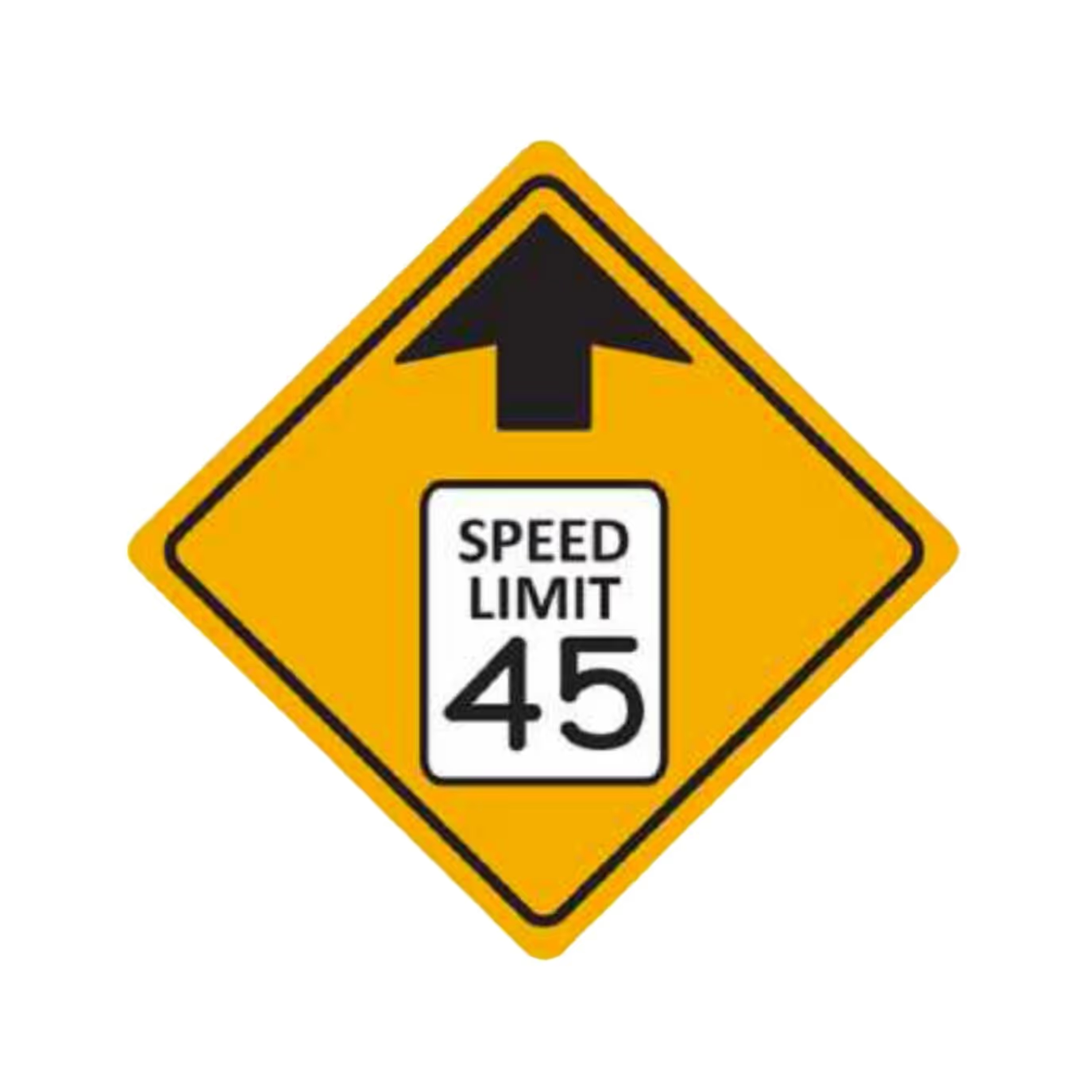
A speed zone ahead sign warns drivers that a reduced speed limit zone is coming up. Drivers should be ready to slow down to the indicated speed limit.
Key points to remember:

This sign warns that the road ahead will have traffic moving in both directions, which might restrict passing and require more cautious driving.
Key points to remember:
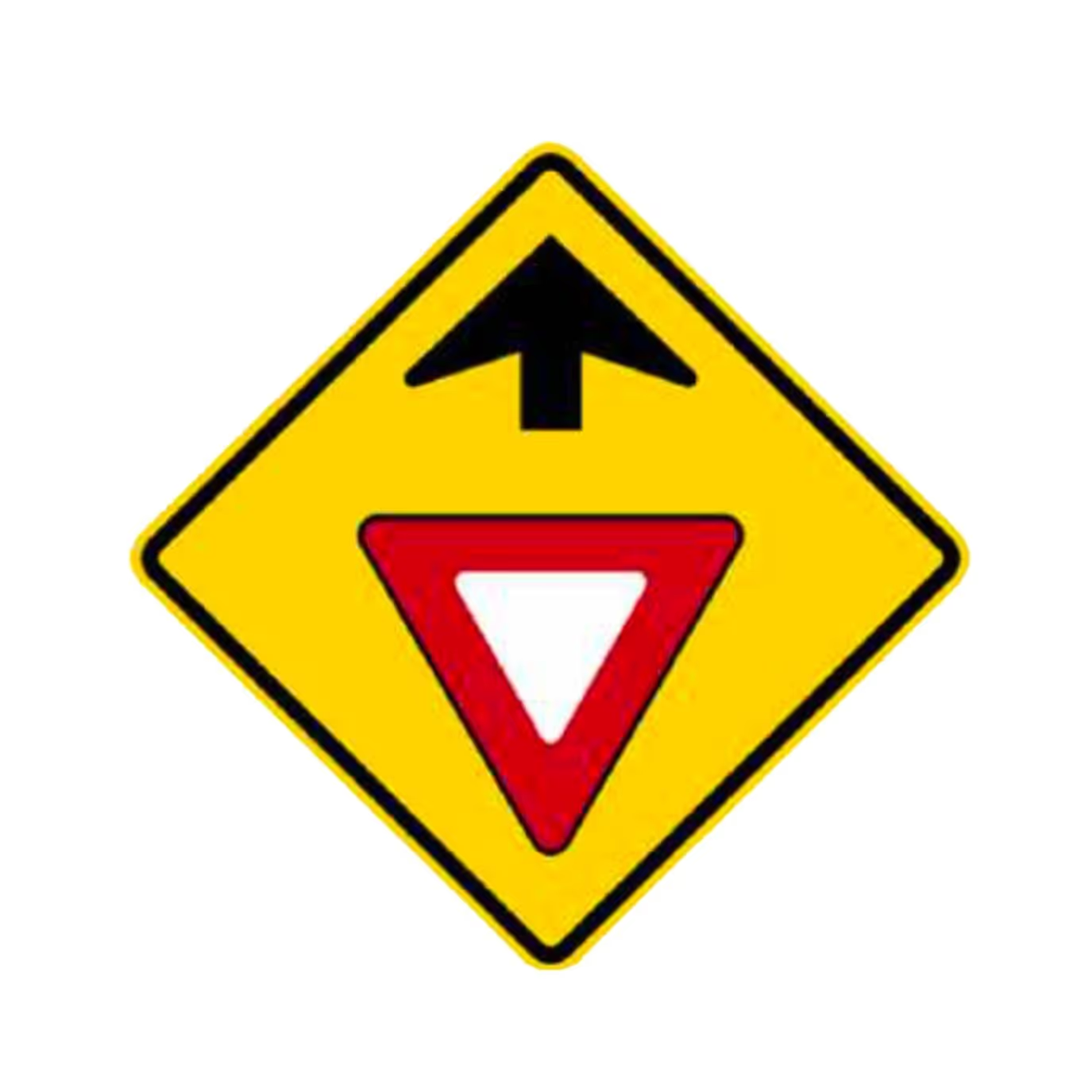
A yield sign ahead warning sign alerts drivers to prepare to yield to other vehicles at the upcoming yield sign.
Key points to remember:
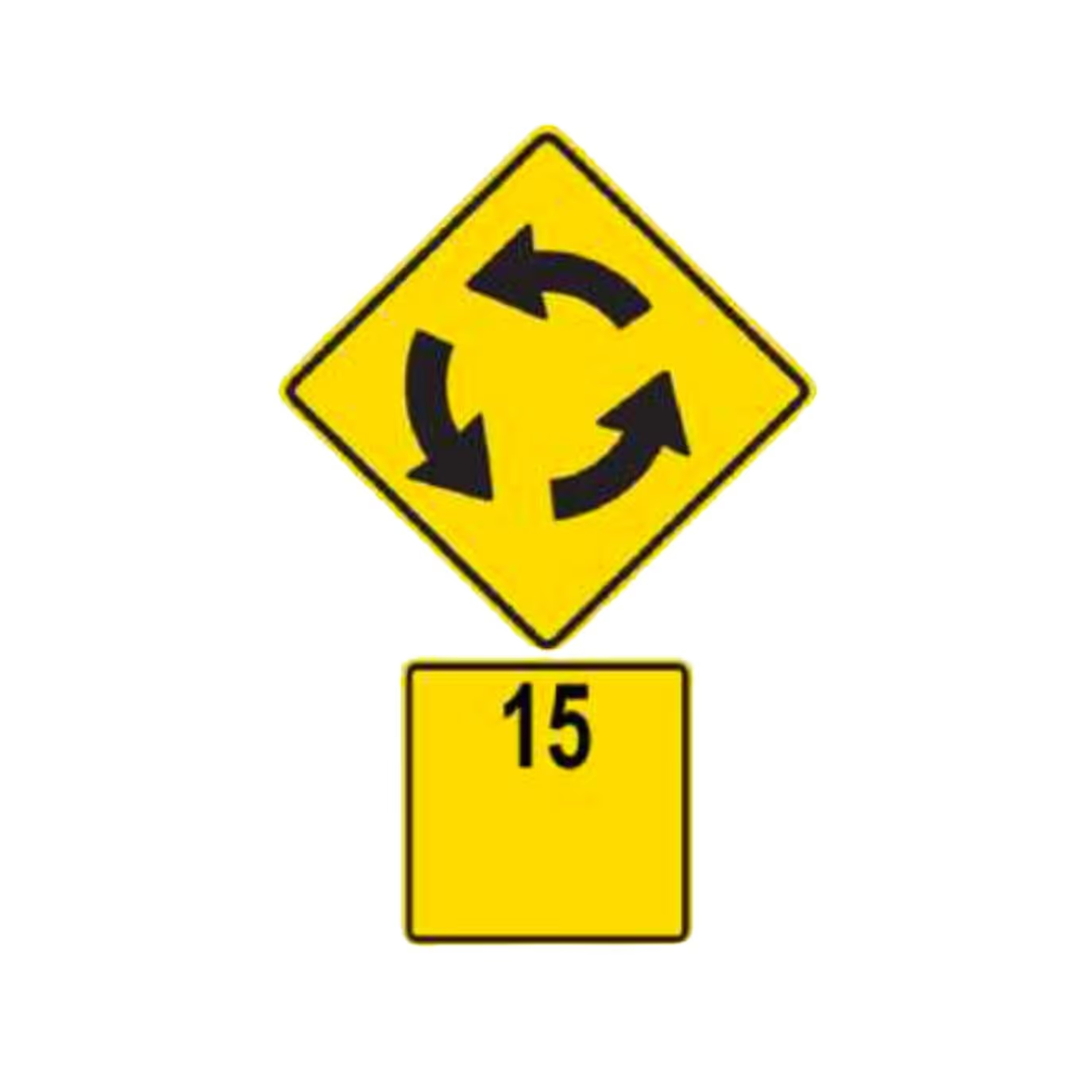
This sign provides a recommended speed for navigating a roundabout. Drivers should slow down to the indicated speed for safe passage through the roundabout.
Key points to remember:
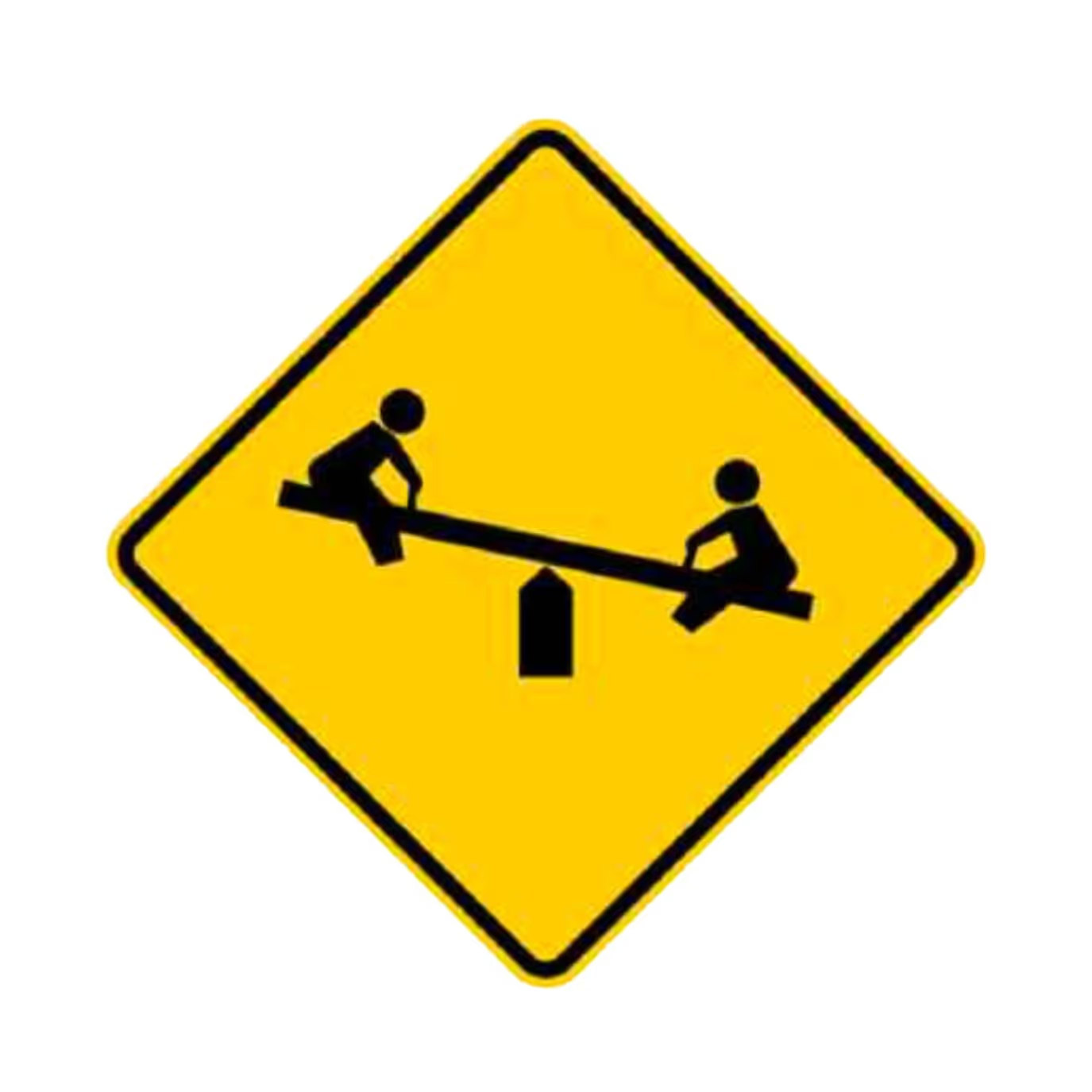
A playground ahead sign warns drivers that they are approaching an area where children may be playing near or on the road. Drivers should slow down and be extra cautious.
Key points to remember:
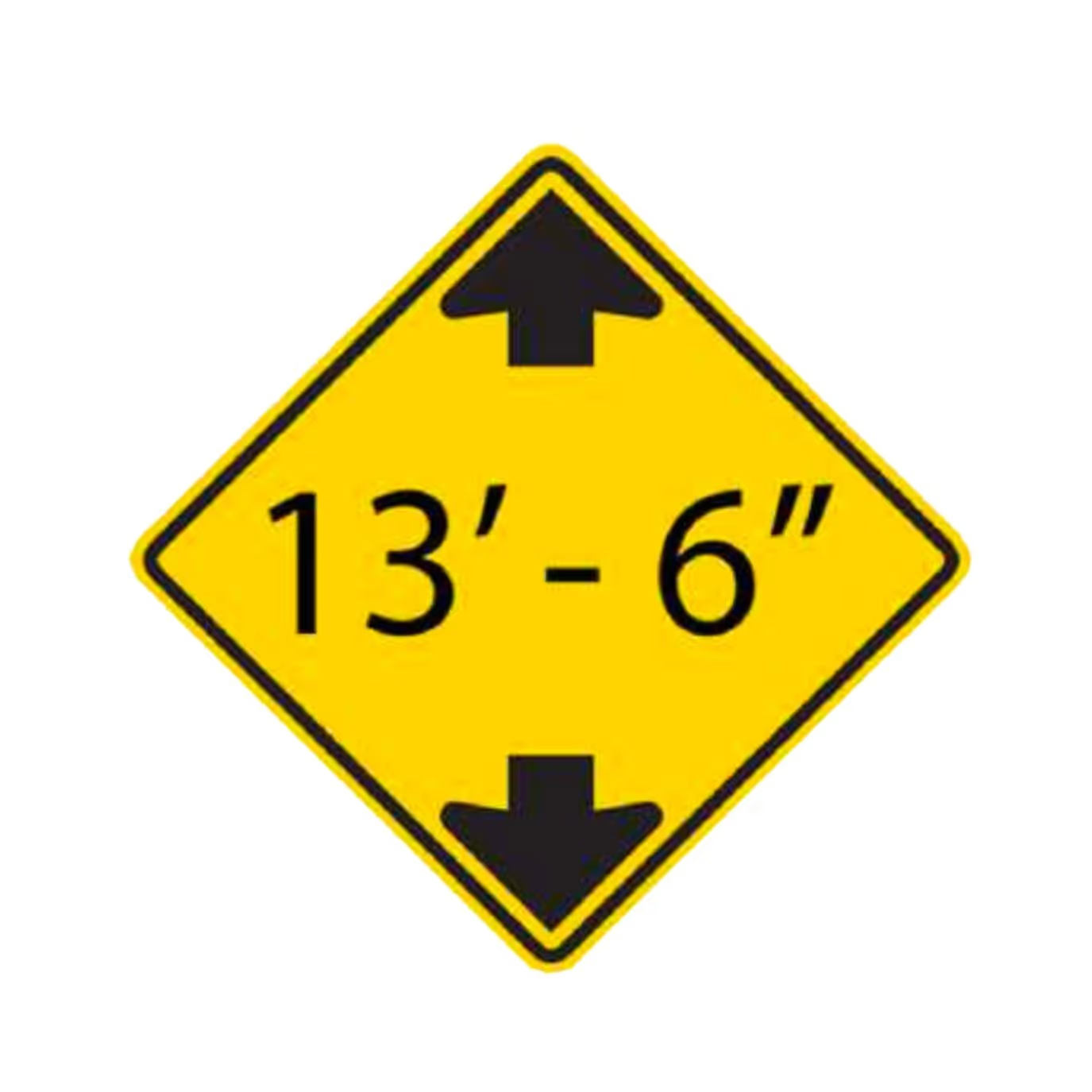
This sign indicates the clearance height of an overpass ahead. Drivers of tall vehicles should ensure their vehicle can pass safely underneath.
Key points to remember:

A handicapped crossing sign warns drivers that a crosswalk ahead is commonly used by individuals with disabilities. Drivers should reduce speed and proceed with caution.
Key points to remember:
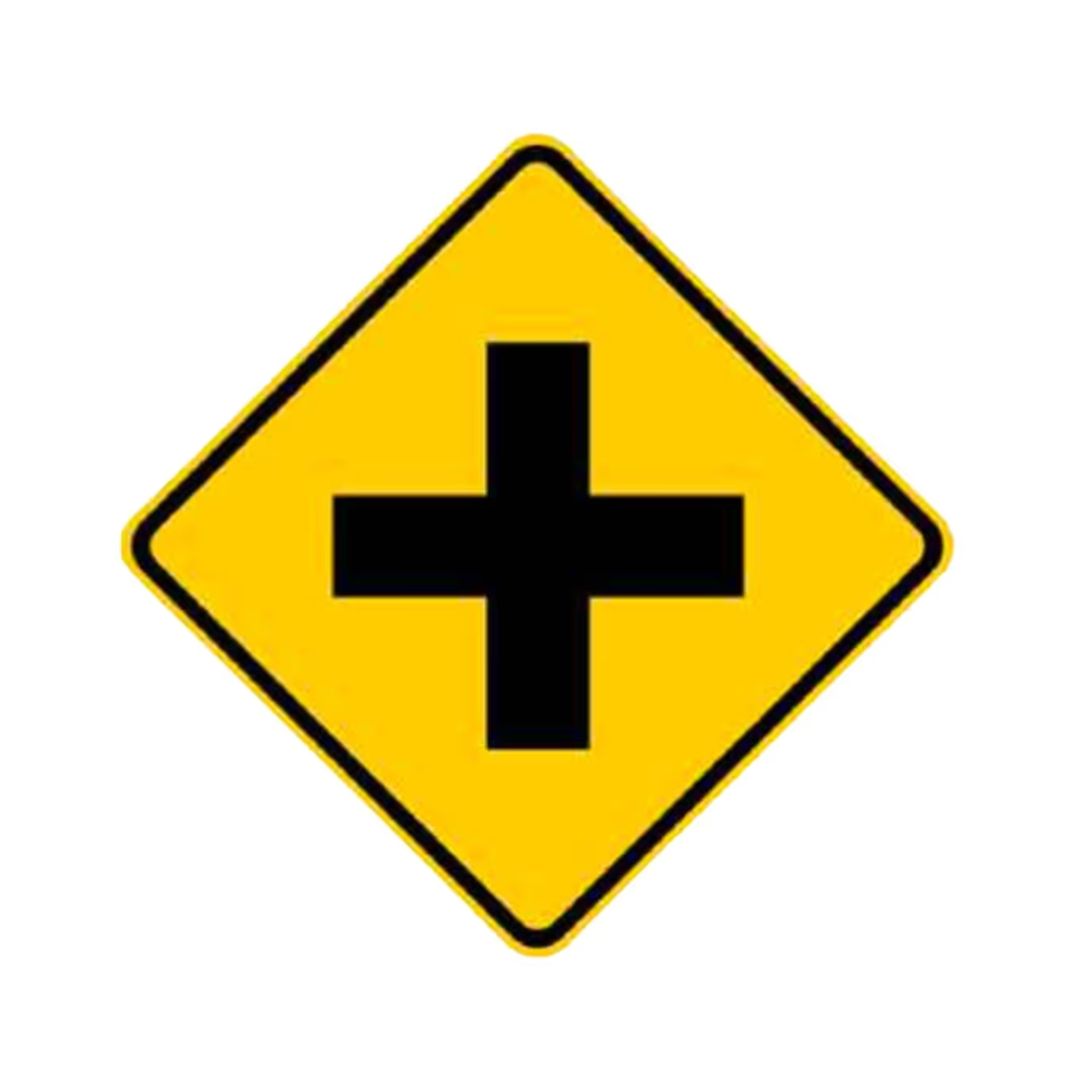
A cross traffic ahead sign warns drivers that there is a crossroad ahead where vehicles may be entering or crossing the road. Drivers should slow down and be prepared to yield to cross traffic.
Key points to remember:
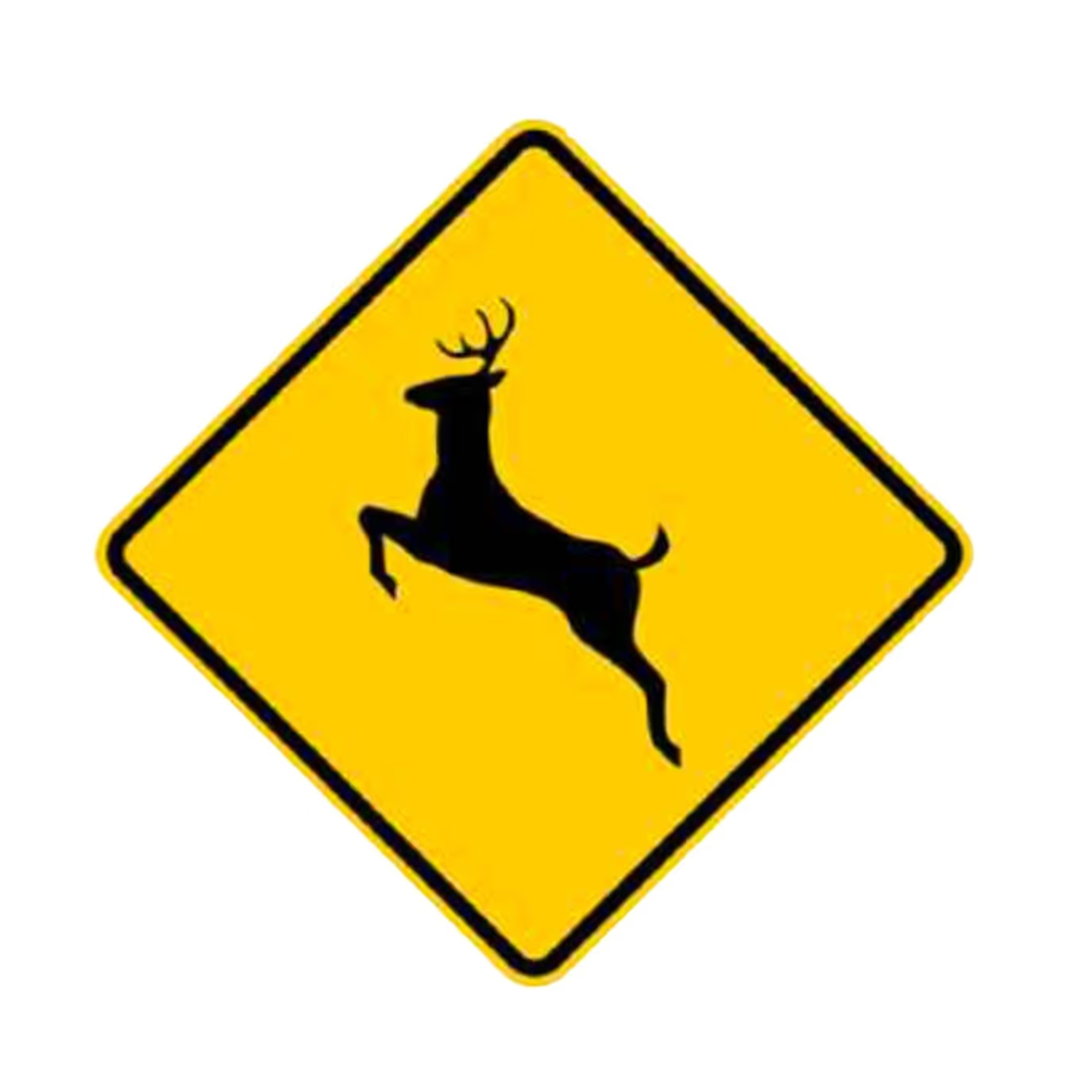
A deer crossing ahead sign warns drivers that deer frequently cross the roadway in this area. Drivers should slow down, stay alert, and be prepared to stop if necessary.
Key points to remember:

This warning sign indicates that farm equipment or other slow-moving vehicles may cross the road. Drivers should be ready to slow down and yield as needed.
Key points to remember:

A pedestrian crossing ahead sign alerts drivers to an upcoming pedestrian crosswalk. Drivers must slow down, watch for pedestrians, and yield the right-of-way.
Key points to remember:

This pennant-shaped sign indicates that passing is prohibited on this section of the roadway. Drivers must remain in their lane and avoid overtaking other vehicles.
Key points to remember:
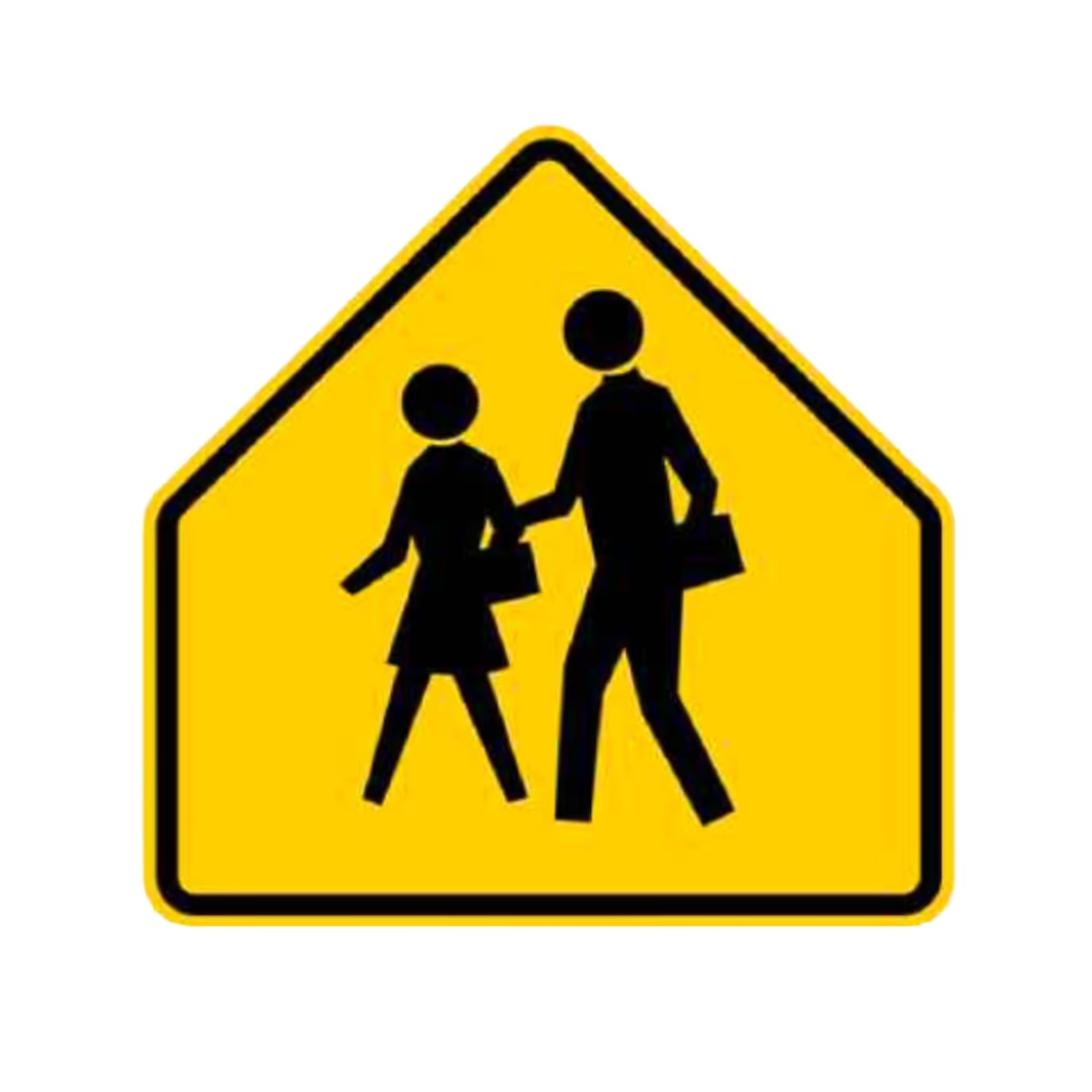
A school zone ahead sign warns drivers that they are approaching a school zone where the speed limit is reduced. Drivers should slow down, watch for children, and obey the posted speed limit.
Key points to remember:

This sign indicates that traffic on the road ahead may flow on both sides of the sign, often used in situations where there is a median or barrier.
Key points to remember:
.avif)
A railroad crossing ahead sign warns drivers of an upcoming railroad crossing. Drivers should slow down, look and listen for approaching trains, and be prepared to stop.
Key points to remember:

A T-intersection ahead sign indicates that the road you are traveling on will end soon, and you will need to turn either right or left. Drivers should prepare to yield to cross traffic.
Key points to remember:
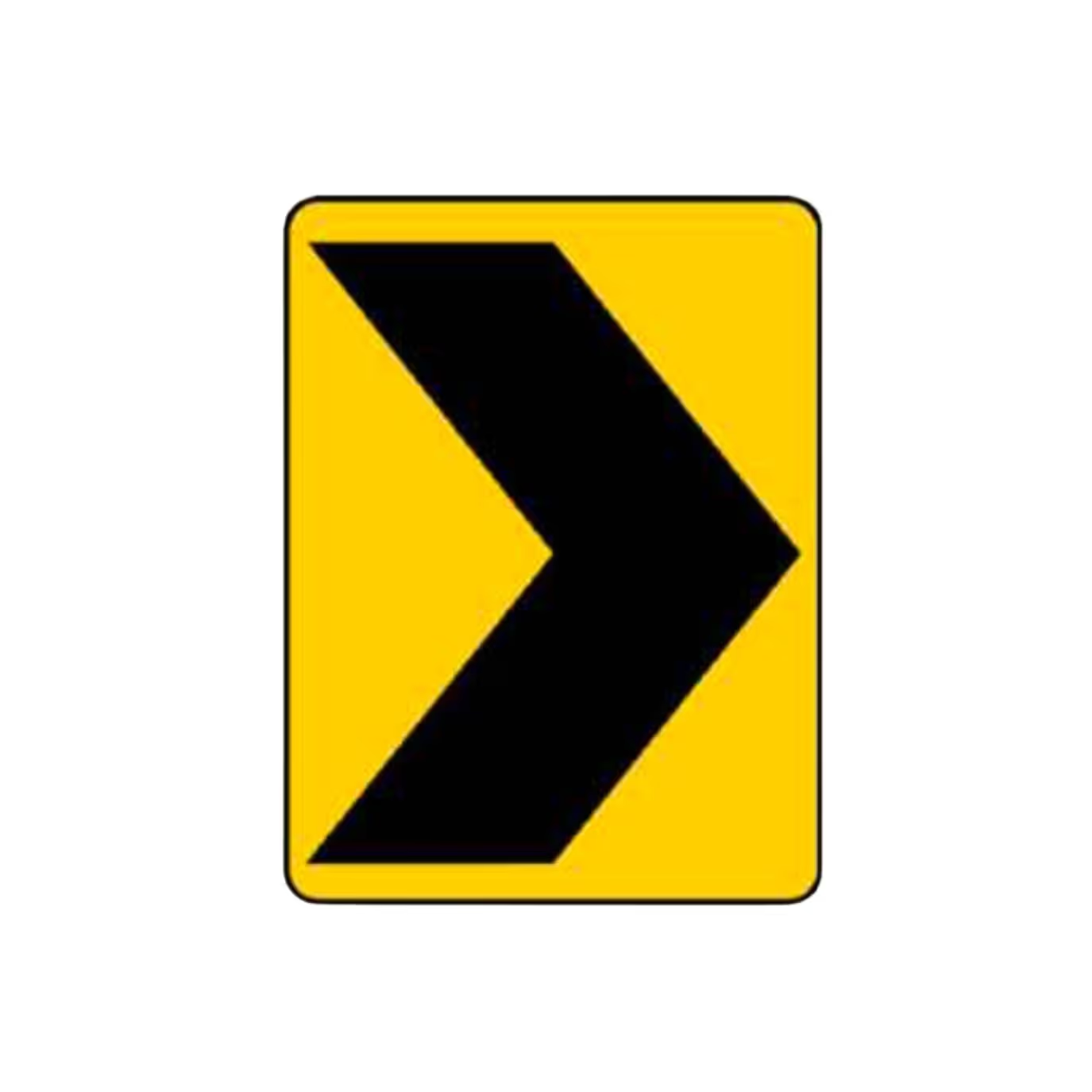
This warning sign indicates that the road ahead changes direction sharply. Drivers should reduce speed and prepare to navigate the turn safely.
Key points to remember:
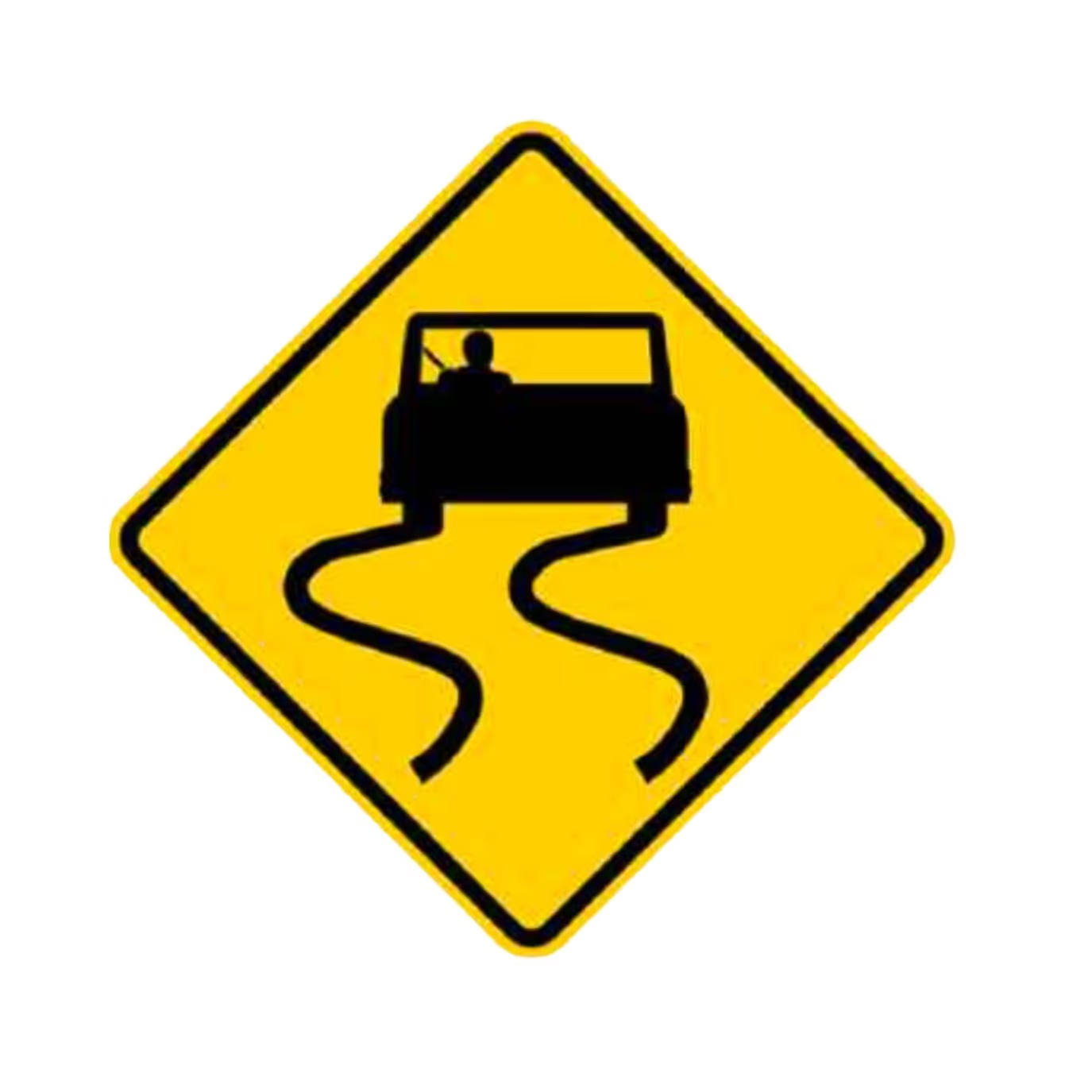
A slippery road ahead sign warns drivers that the road surface may be slippery when wet. Drivers should slow down, avoid sudden maneuvers, and drive cautiously.
Key points to remember:
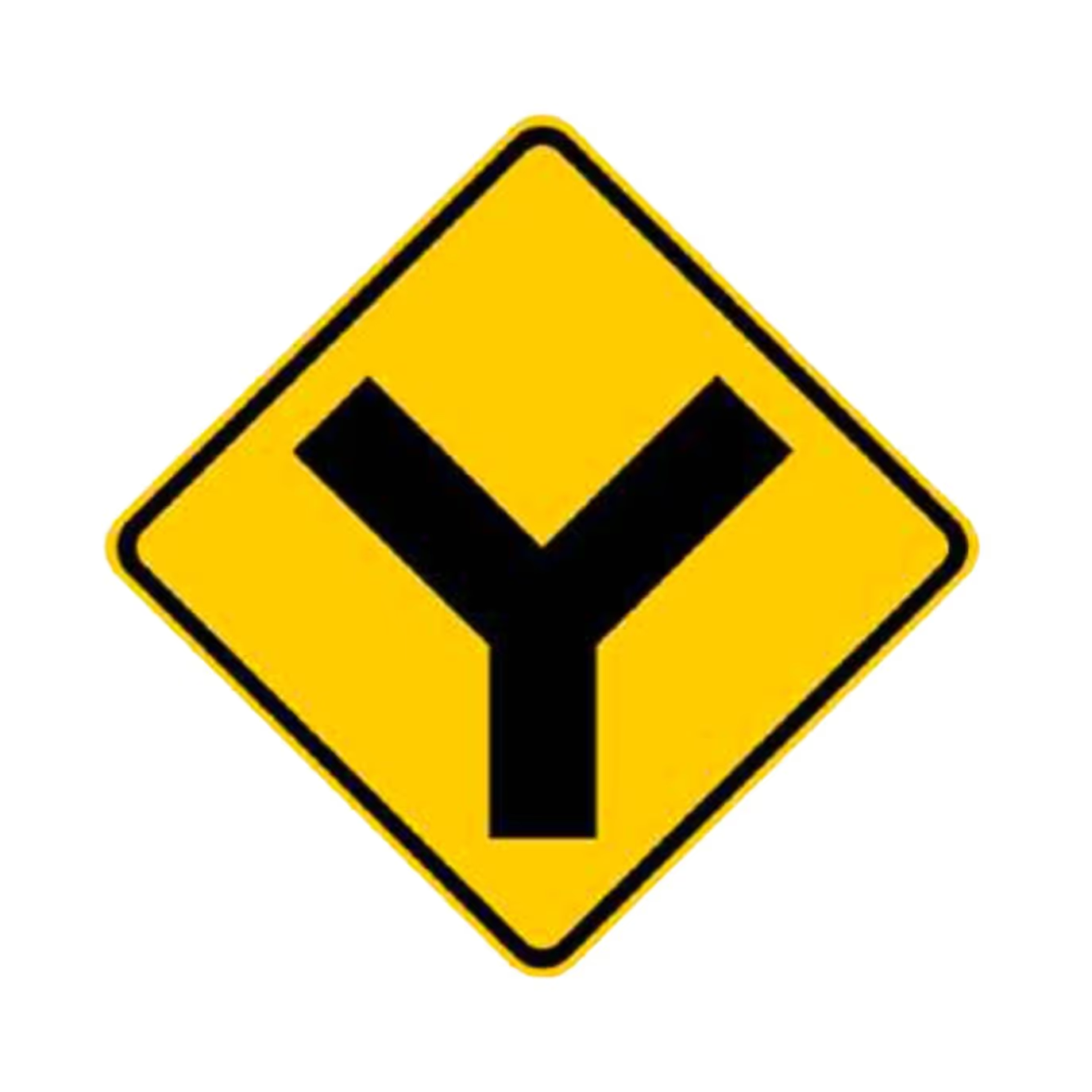
A Y-intersection ahead sign indicates that the road ahead splits into two different directions. Drivers should be prepared to choose a direction and be cautious of merging or turning vehicles.
Key points to remember:
.avif)
Similar to other railroad crossing signs, this warning sign alerts drivers to an upcoming railroad crossing. Drivers should slow down, look, and listen for trains, and be prepared to stop.
Key points to remember:

This sign warns drivers of a steep downgrade ahead. Drivers should reduce speed and consider downshifting into a lower gear to maintain control of the vehicle.
Key points to remember:

A traffic control signal ahead sign alerts drivers that a traffic light is coming up. Drivers should prepare to stop if the light is red or yellow.
Key points to remember:

This warning sign indicates that a side road is ahead, usually at a T-intersection. Drivers should be alert for vehicles entering from the side road.
Key points to remember:
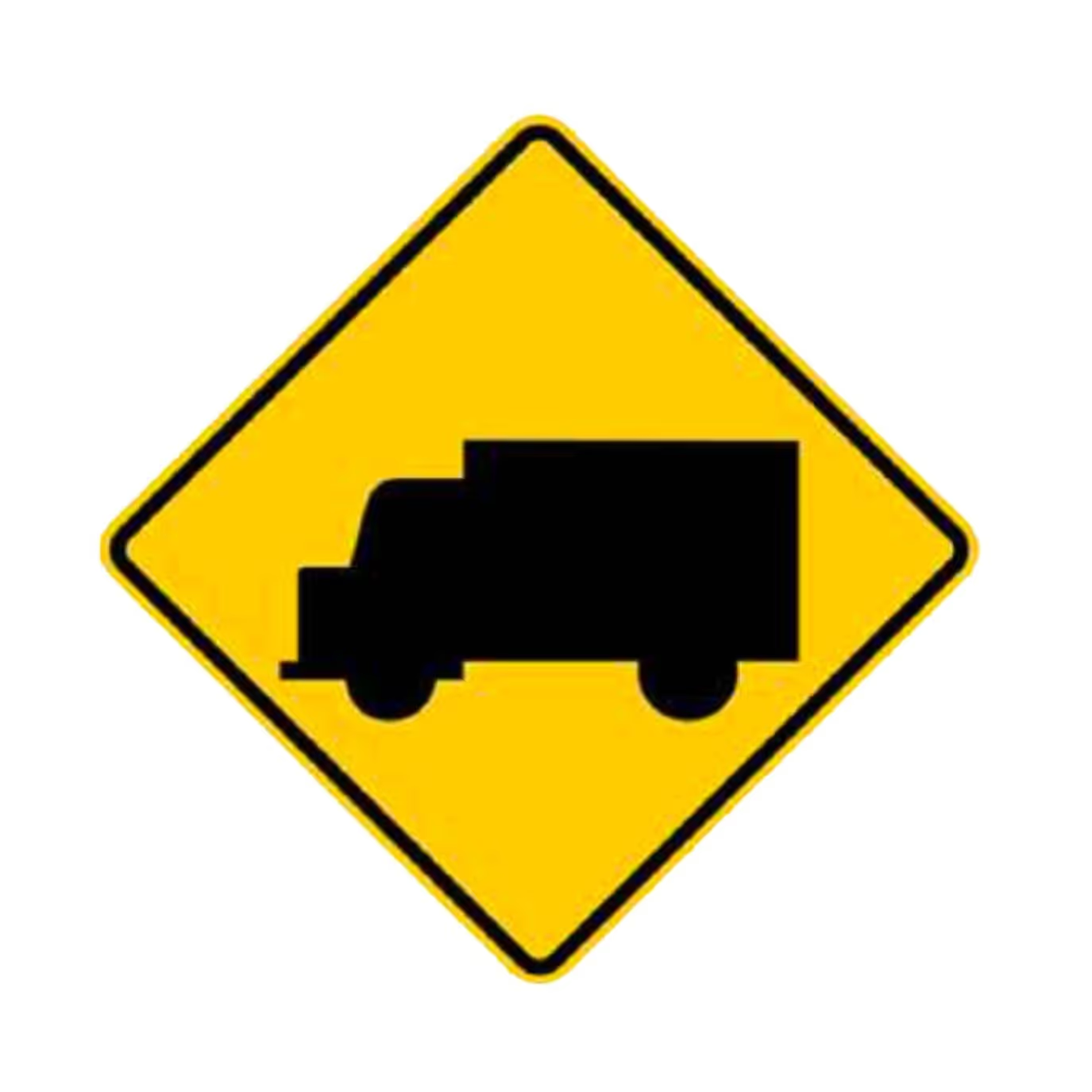
This sign indicates that trucks may enter or cross the roadway ahead. Drivers should slow down, stay alert, and be prepared for large vehicles.
Key points to remember:
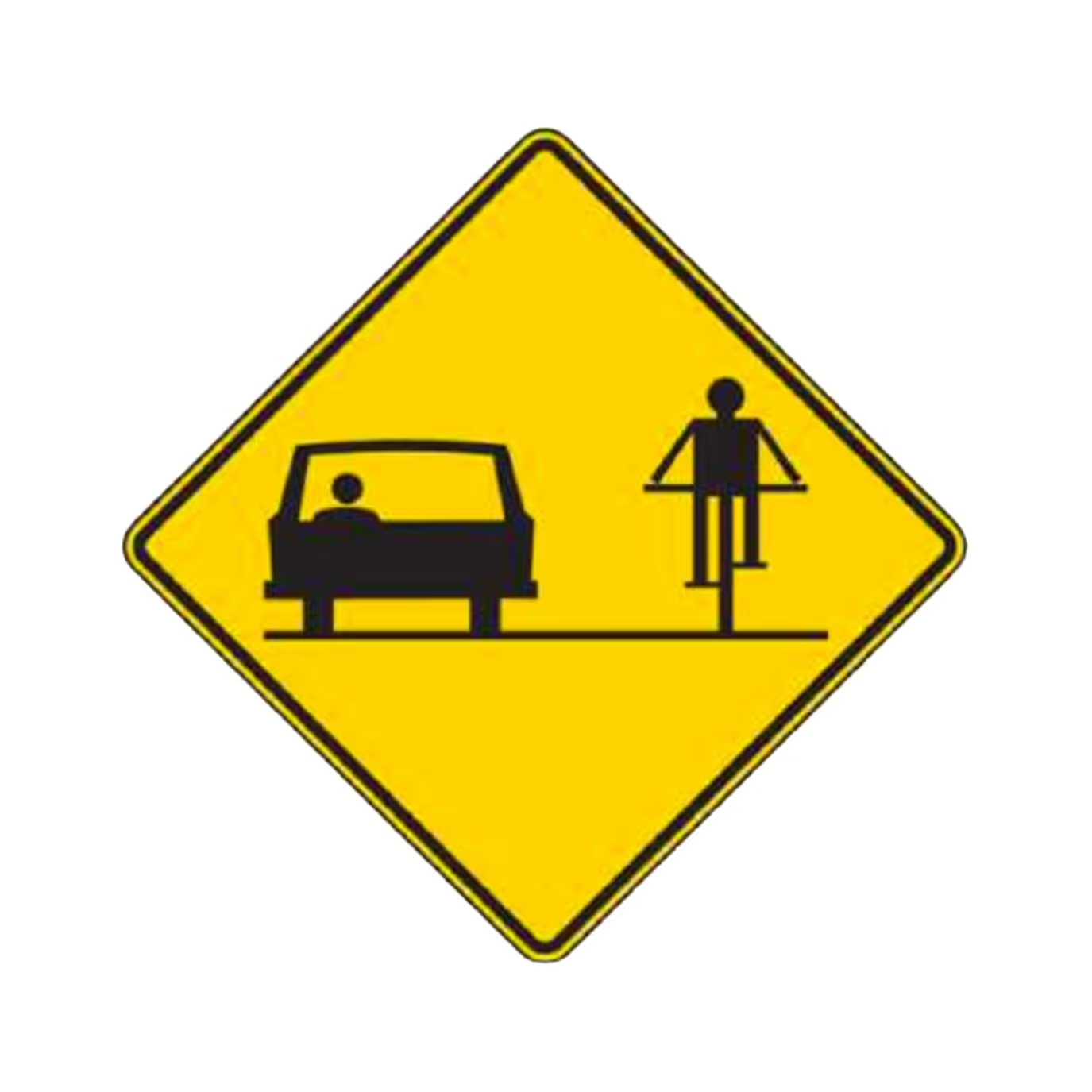
A multi-use path crossing sign indicates that bicyclists and pedestrians frequently cross the road in this area. Drivers should slow down, be cautious, and be ready to stop.
Key points to remember:

This sign provides advisory speeds for freeway exits and entrance ramps. Drivers should slow down to the recommended speed to navigate the ramp safely.
Key points to remember:
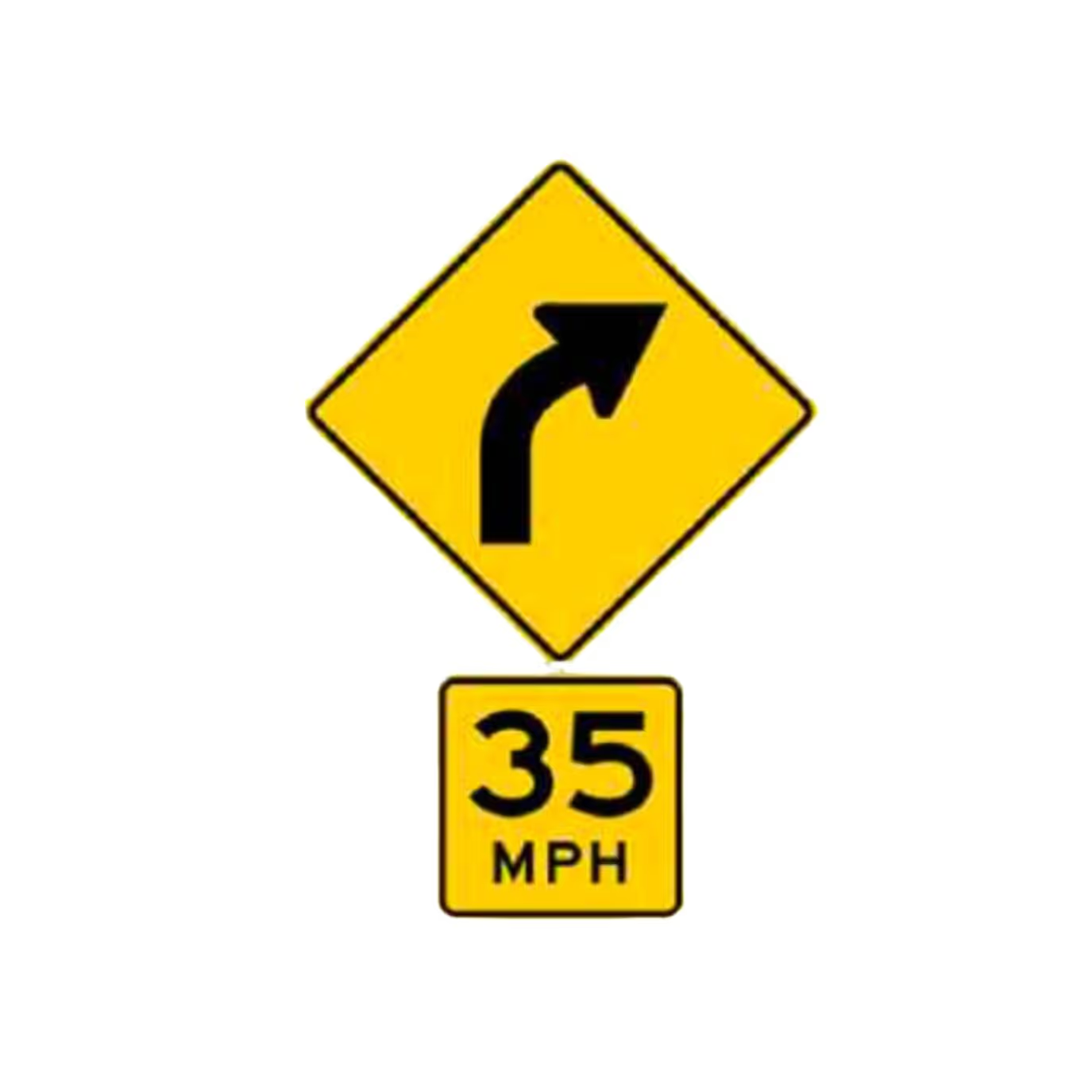
A curve to the right ahead sign warns drivers of an upcoming curve in the road. Drivers should reduce speed and prepare to safely navigate the curve.
Key points to remember:
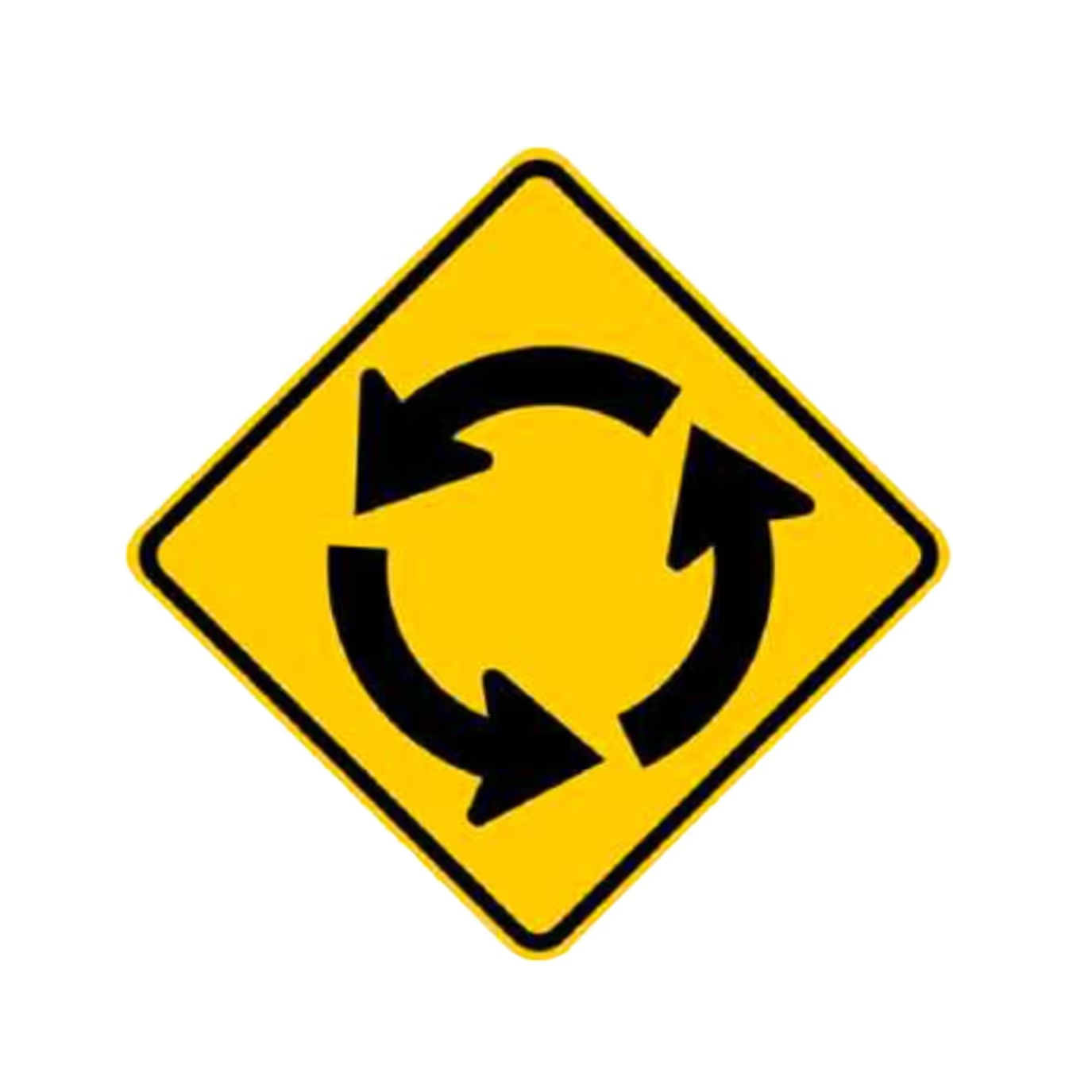
This sign indicates that a roundabout or circular intersection is ahead. Drivers should slow down, yield to traffic already in the roundabout, and proceed cautiously.
Key points to remember:

A bump on the road ahead sign warns drivers of an upcoming bump on the road surface. Drivers should reduce speed to avoid discomfort or loss of control.
Key points to remember:

This sign indicates that the main road ahead curves to the left, often with a side road entering from the right. Drivers should approach with extra caution.
Key points to remember:
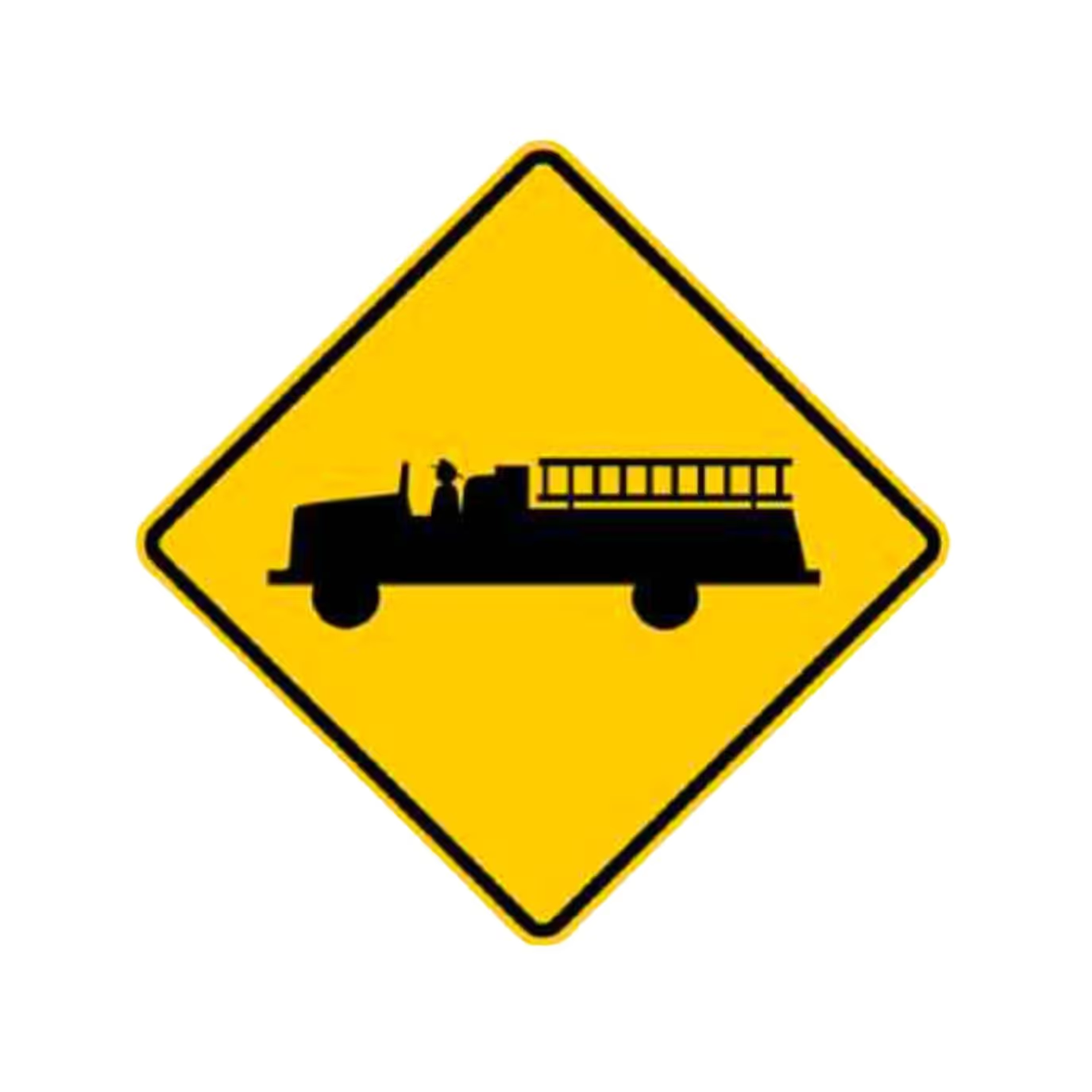
A fire station nearby sign alerts drivers to the presence of a fire station in the vicinity. Drivers should be prepared for emergency vehicles entering or exiting the station.
Key points to remember:

This sign warns that a side road crosses a railroad track ahead. Drivers should use caution if turning onto the side road and be prepared to stop for trains.
Key points to remember:
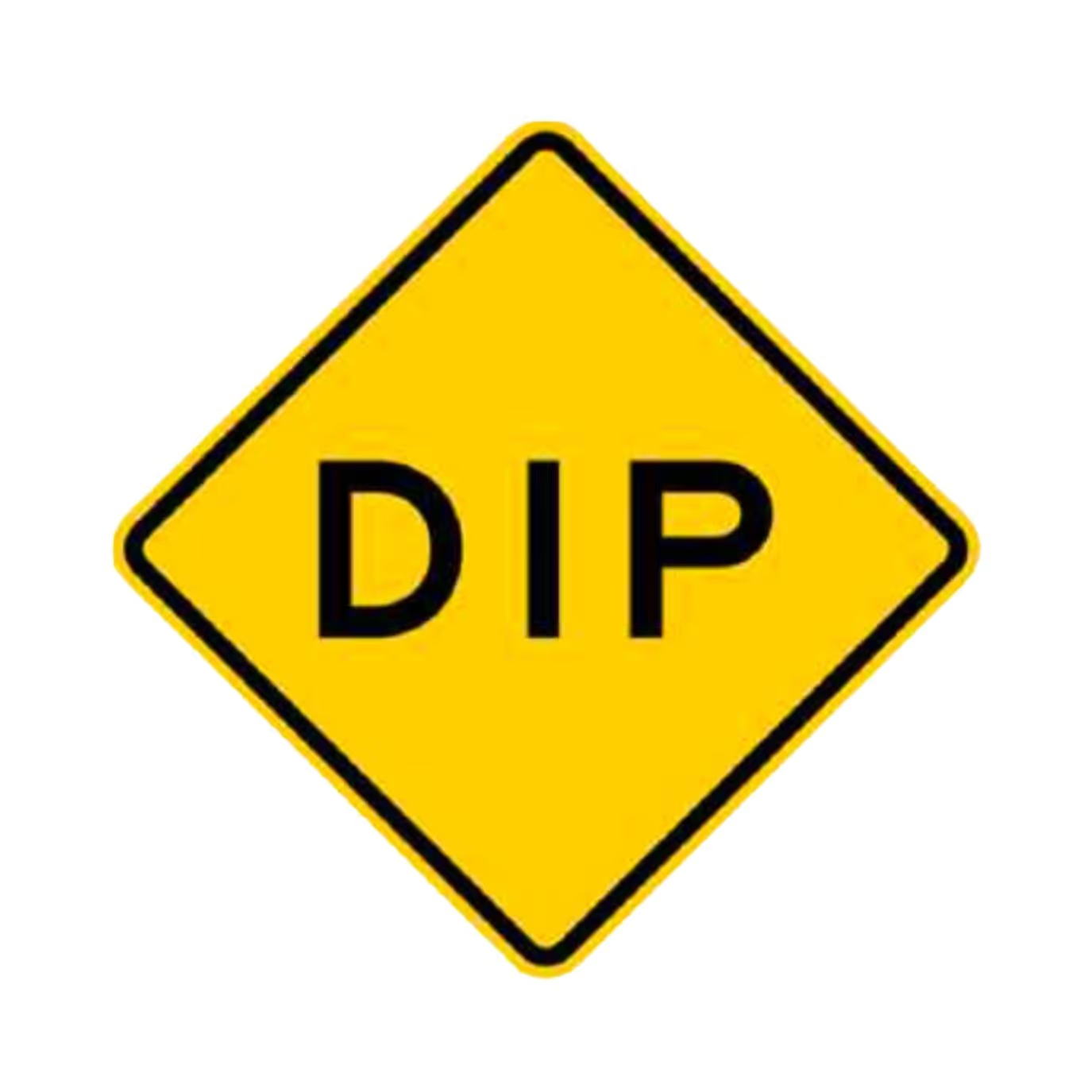
A dip on the road ahead sign indicates a low place in the road. Drivers should slow down to avoid an uncomfortable jolt and maintain control of the vehicle.
Key points to remember:
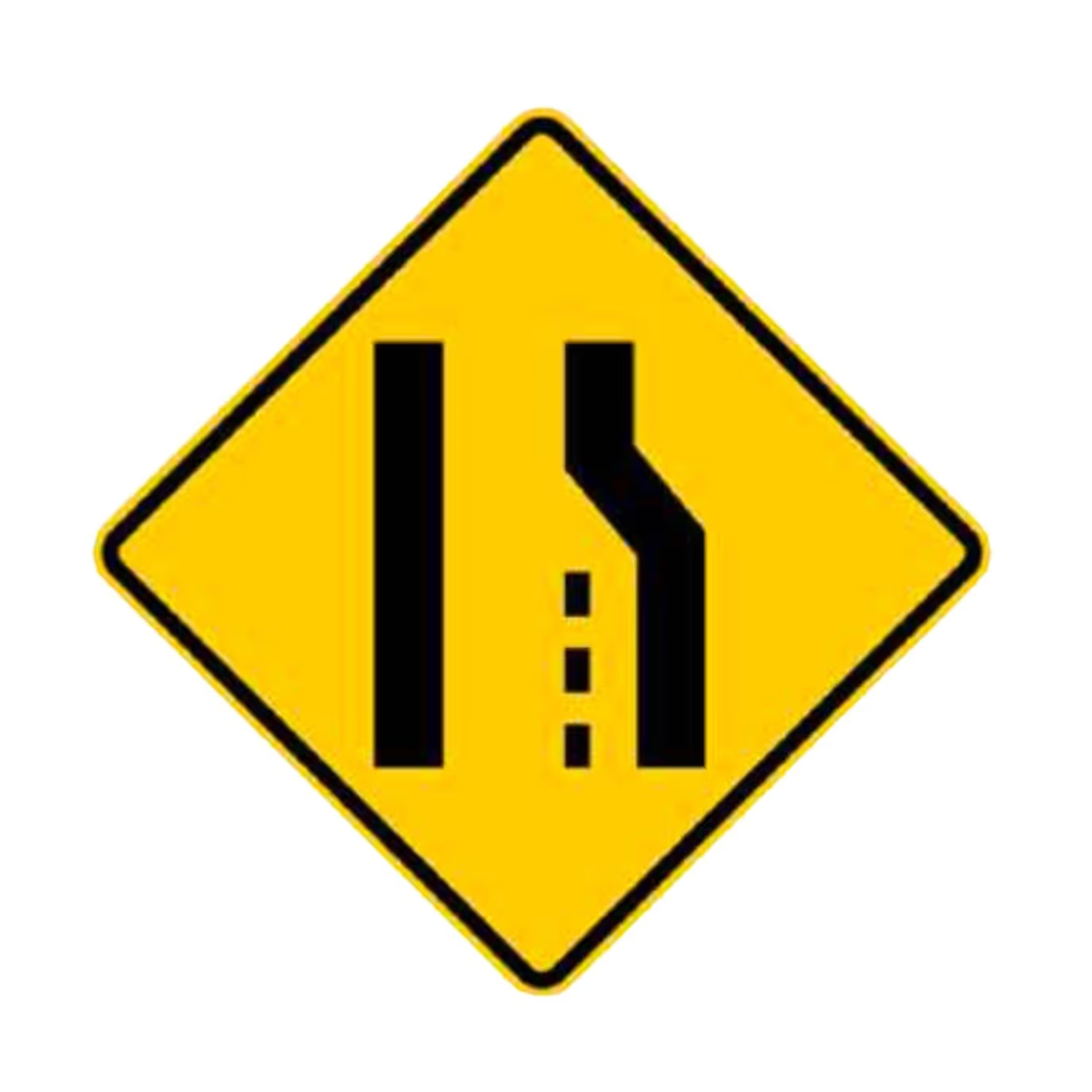
This sign indicates that the right lane will end ahead, requiring drivers in that lane to merge left. Drivers should be prepared to adjust their position on the road.
Key points to remember:

A cattle crossing ahead sign warns drivers to be alert for cattle crossing the road. Drivers should slow down and be prepared to stop if necessary.
Key points to remember:
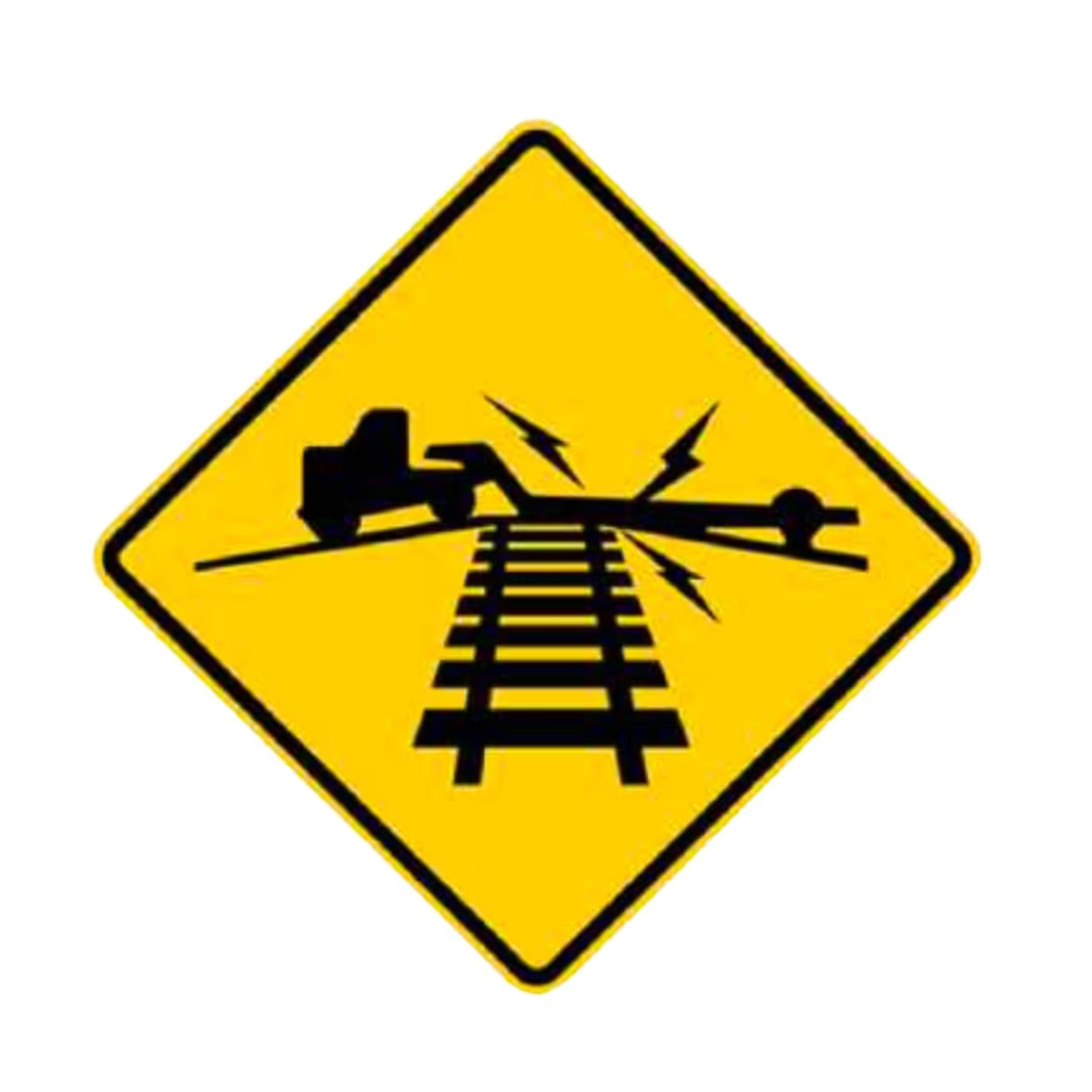
This sign indicates a raised railroad crossing where low-slung vehicles might get stuck. Drivers of low-clearance vehicles should approach with caution.
Key points to remember:
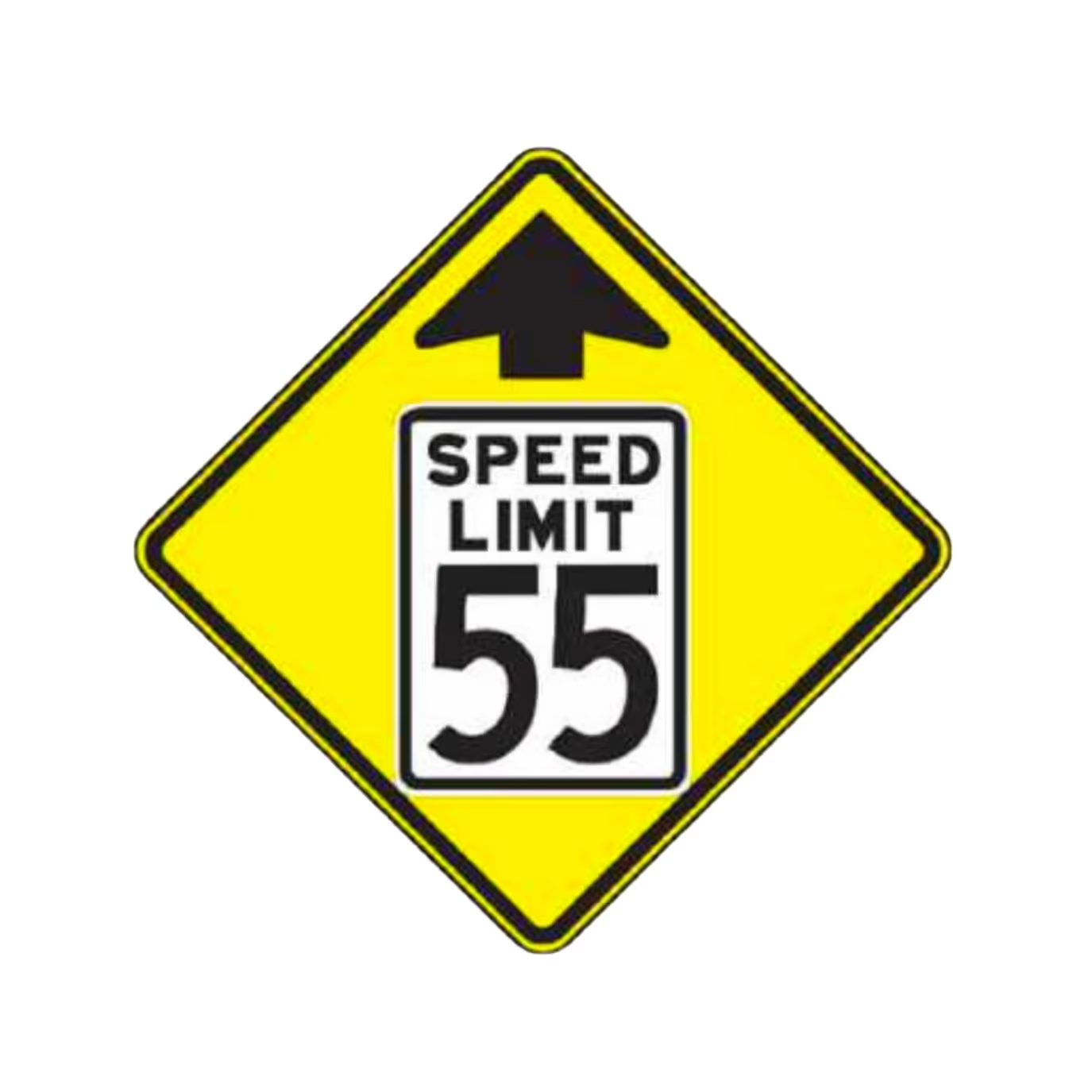
A speed change ahead sign indicates that the speed limit will be reduced ahead. Drivers should prepare to slow down to the new speed limit.
Key points to remember:
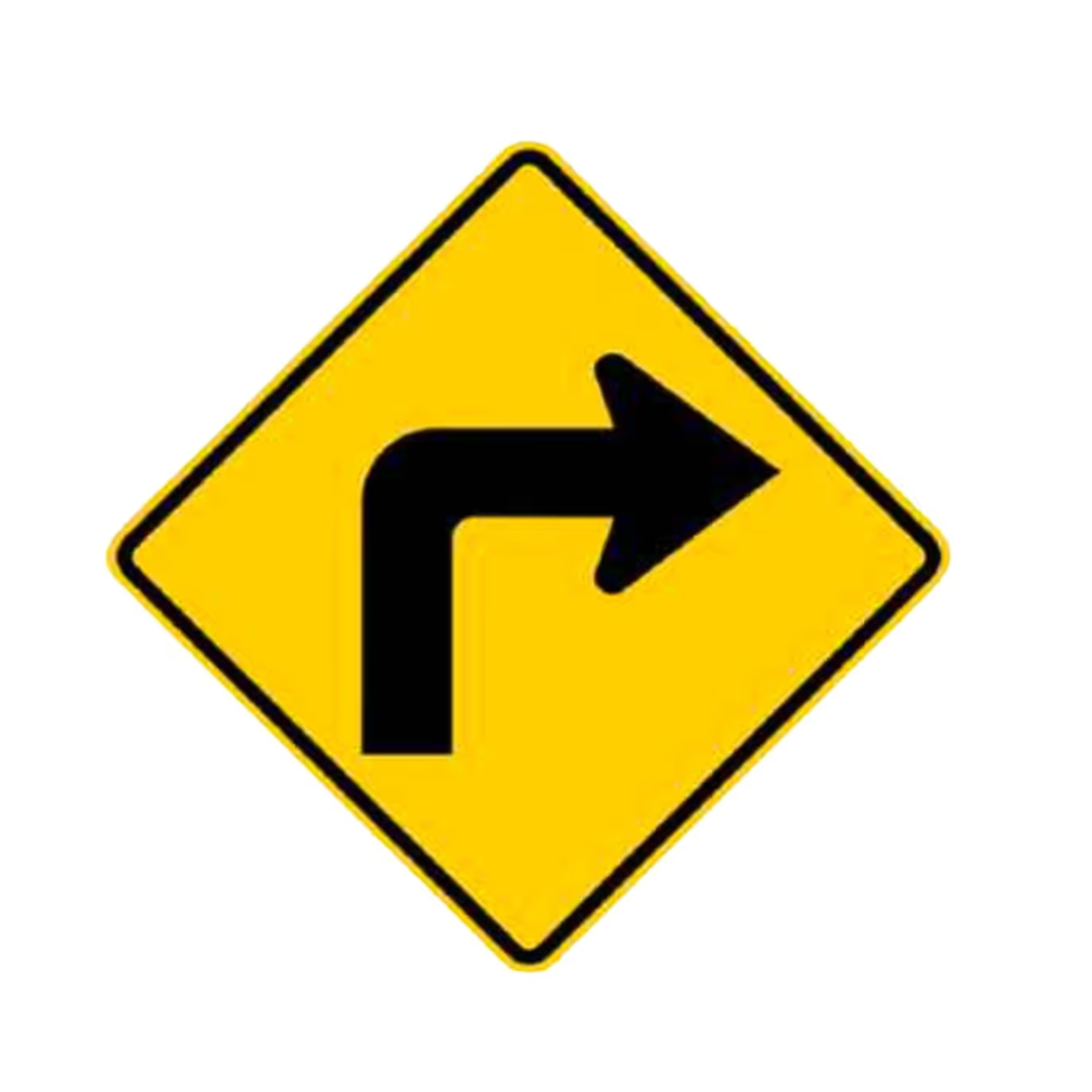
A sharp right turn ahead sign warns drivers that a sharp turn to the right is coming up. Drivers should reduce speed significantly and prepare to navigate the turn carefully.
Key points to remember:

This sign indicates that the road ahead will curve to the left. Drivers should slow down and prepare to navigate the curve safely.
Key points to remember:

A 270-degree loop ahead sign indicates that the road ahead will make a sharp loop, almost reversing direction. Drivers should slow down and proceed cautiously.
Key points to remember:
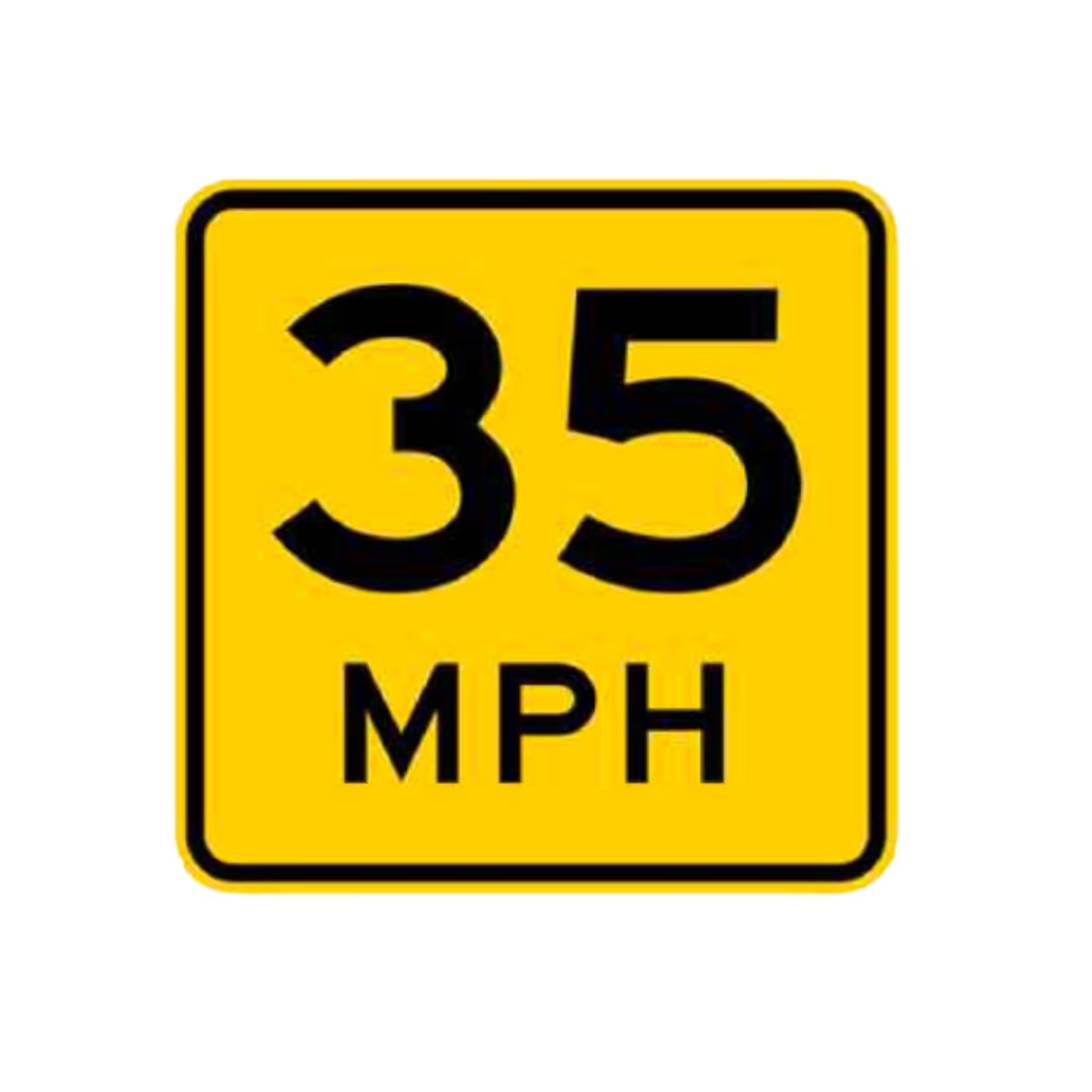
An advisory speed limit sign provides a recommended speed for a specific section of the road, such as a curve or entrance ramp. Drivers should adjust their speed accordingly for safety.
Key points to remember:
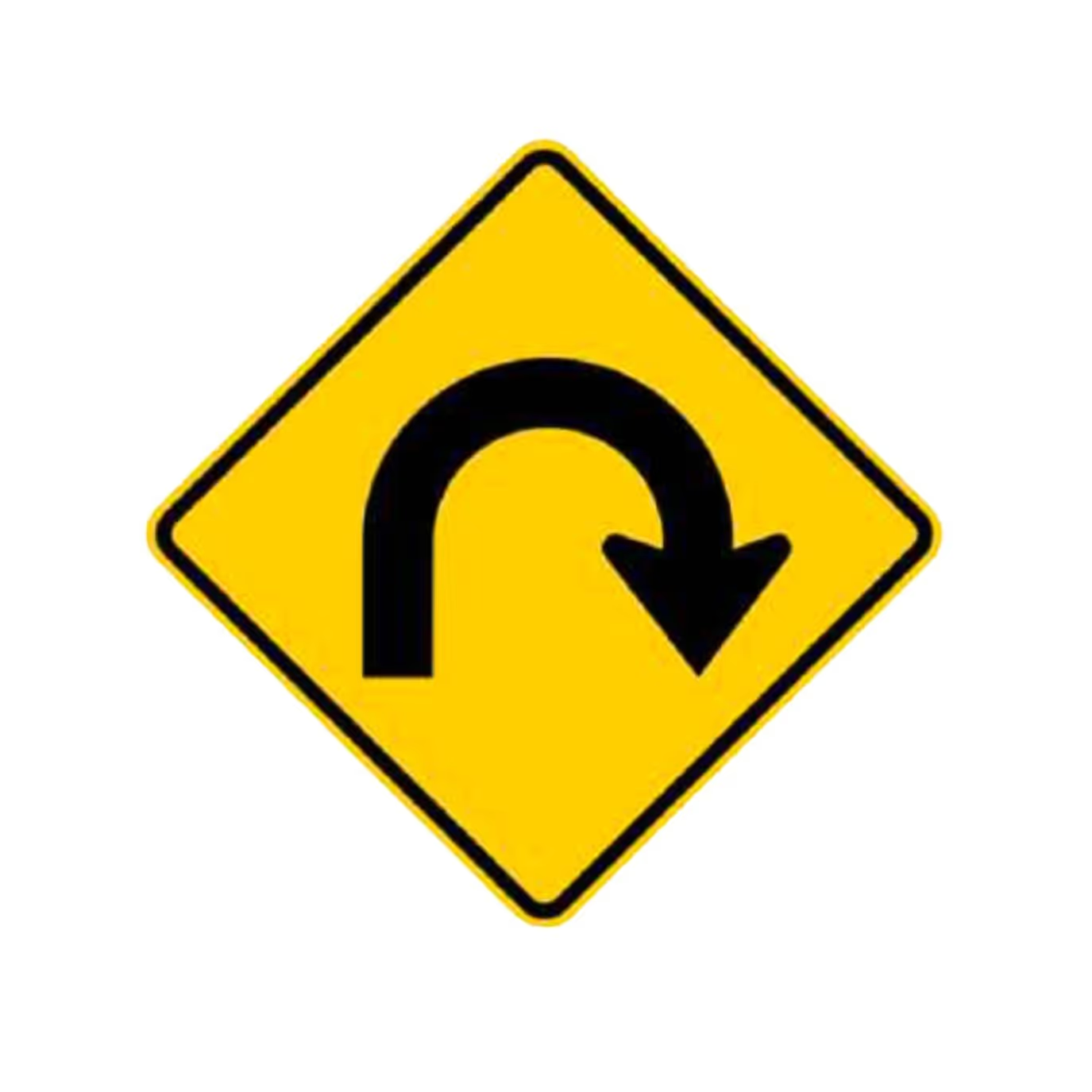
A hairpin curve ahead sign warns drivers of a very sharp curve that almost reverses their direction. Drivers should slow down significantly and navigate the curve with extreme caution.
Key points to remember:

A blind person area sign indicates that people with visual disabilities may be crossing the street or intersection. Drivers should slow down and be prepared to yield to pedestrians.
Key points to remember:

A watch for ice sign warns drivers of roadways that frequently become icy, especially during cold weather. Drivers should slow down and be cautious of ice on the road.
Key points to remember:

An object marker sign warns drivers of objects in the roadway or very close to the edge of the roadway. Drivers should be cautious and avoid striking the object.
Key points to remember:
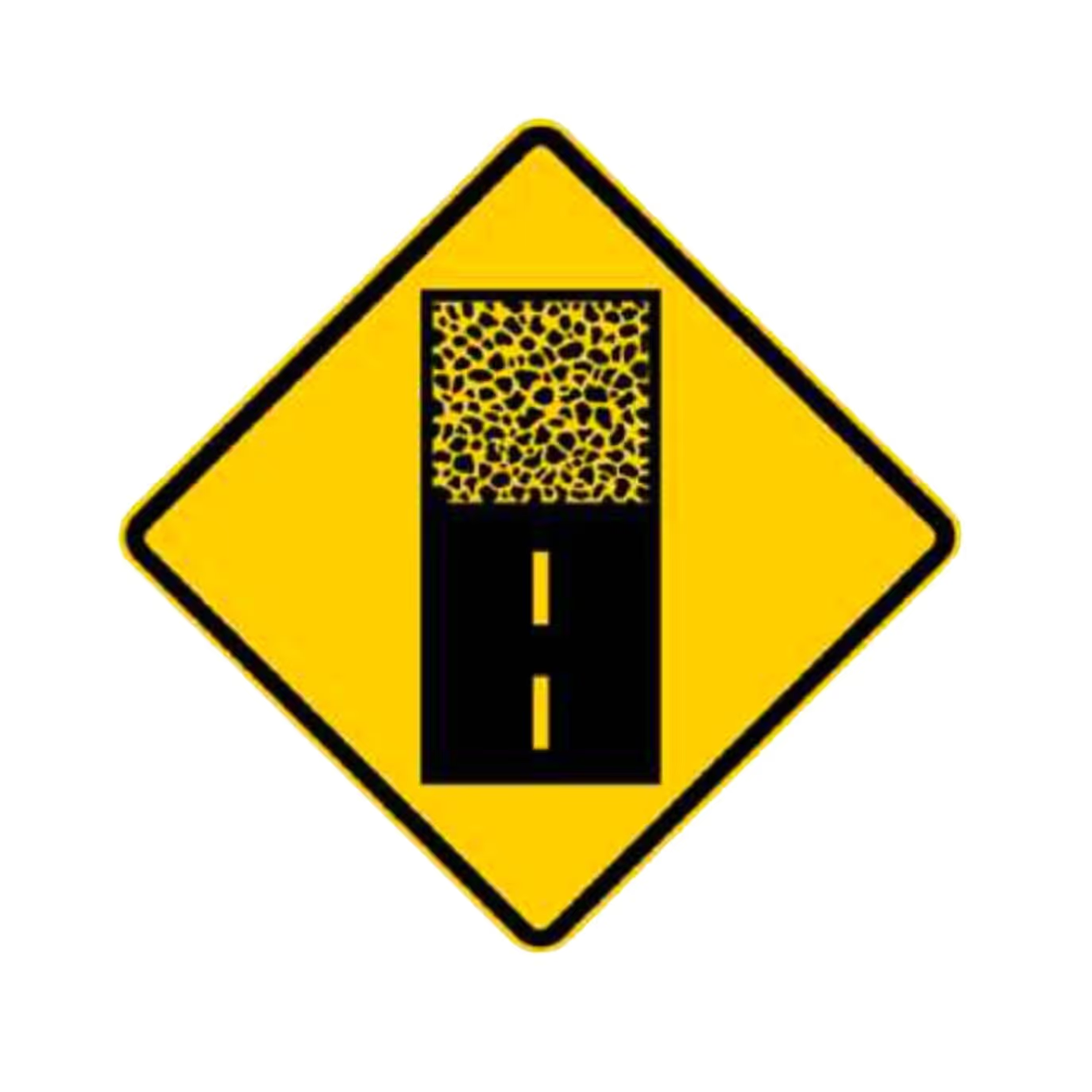
This sign indicates that the paved road will soon transition into a gravel or dirt road. Drivers should slow down and prepare for the change in road surface.
Key points to remember:

A work zone ahead sign is a temporary warning that alerts drivers to roadwork or construction zones. Drivers should slow down, be cautious, and follow any directions from workers or signs.
Key points to remember:
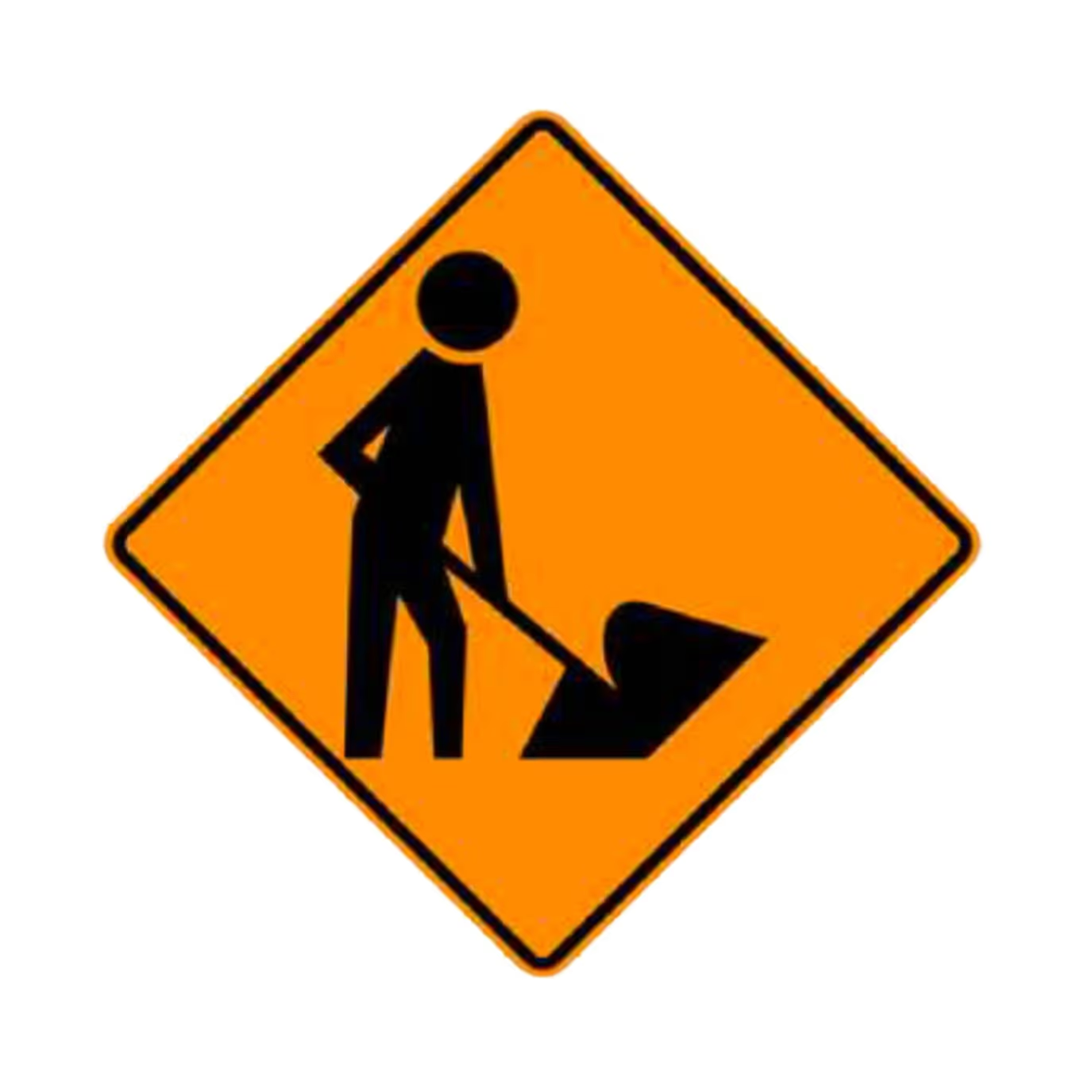
This sign indicates that workers are performing maintenance on the roadway ahead. Drivers should reduce their speed and change lanes if possible to provide extra space for workers.
Key points to remember:

A detour ahead sign provides an alternate route during road closures or construction. Drivers should follow the detour signs to navigate around the closed section of the road.
Key points to remember:

This sign warns drivers that a flag person is ahead directing traffic, often in a construction or maintenance zone. Drivers should be prepared to stop or follow the flag person’s instructions.
Key points to remember:
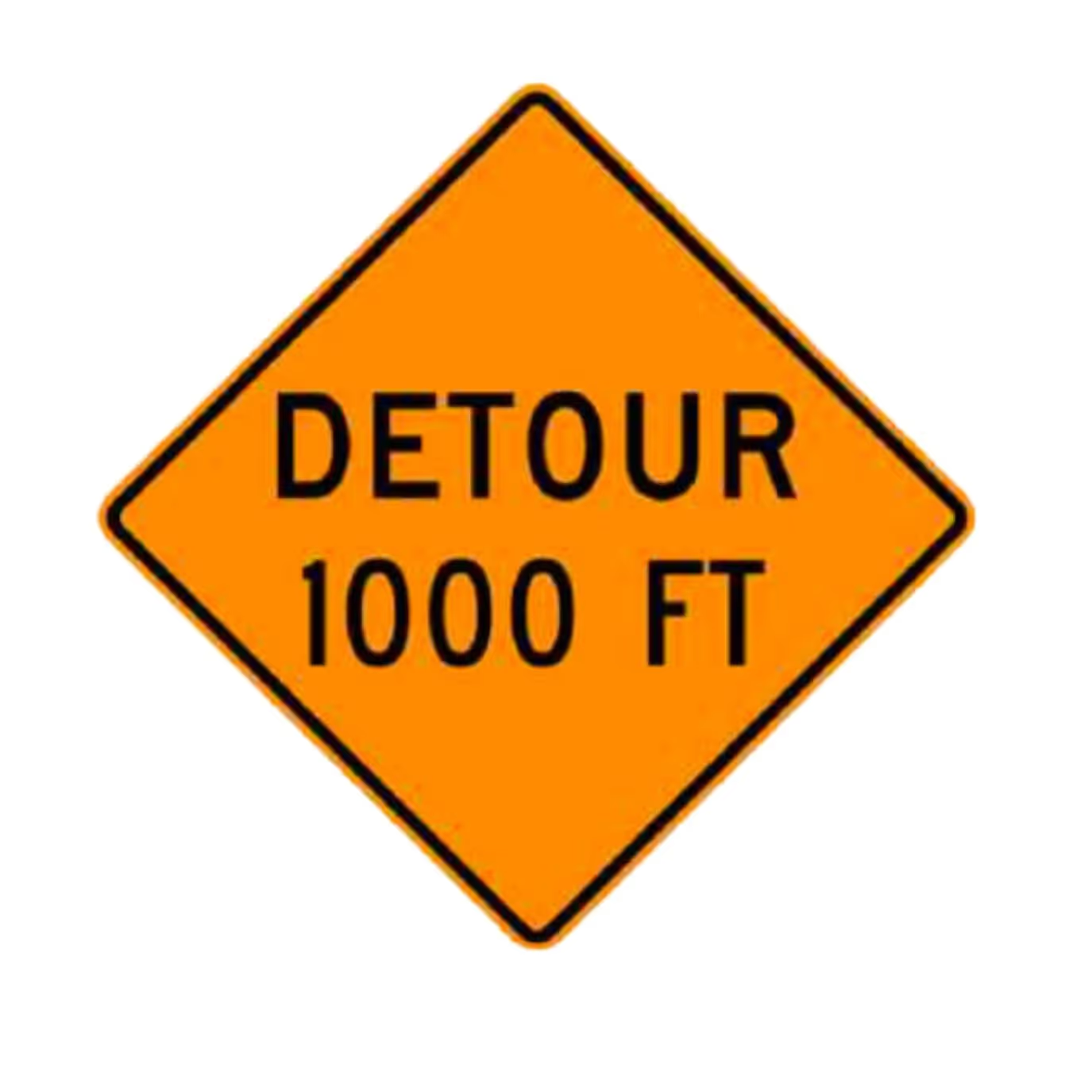
A road closure ahead sign indicates that the road will be closed at a certain point. Drivers should follow alternate routes or detour signs provided.
Key points to remember:
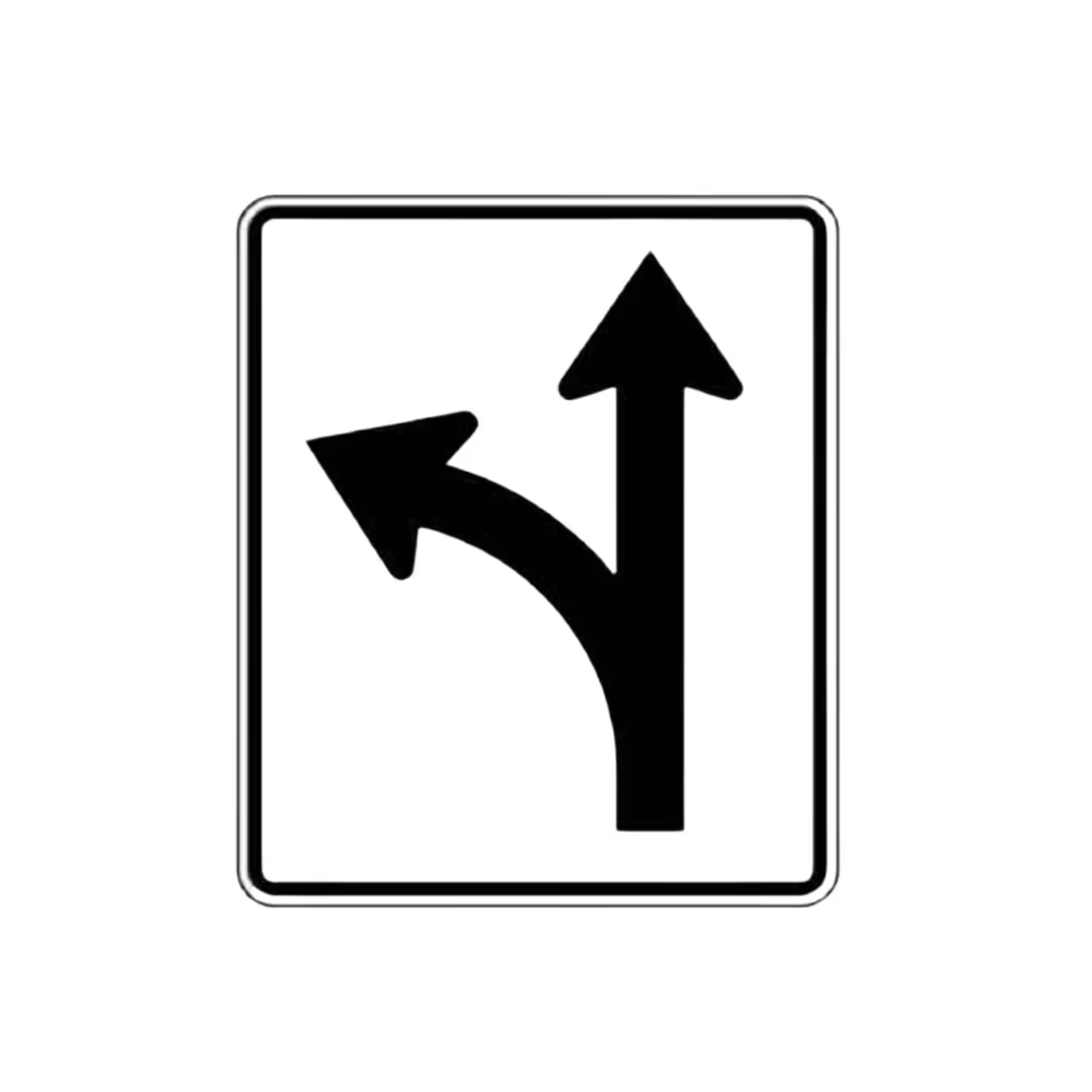
This regulatory sign directs traffic to either turn left or proceed straight through an intersection. It helps control the flow of traffic and prevents confusion at intersections.
Key points to remember:

Similar to the previous sign, this one directs drivers to either turn right or proceed straight through an intersection, ensuring smooth traffic flow.
Key points to remember:
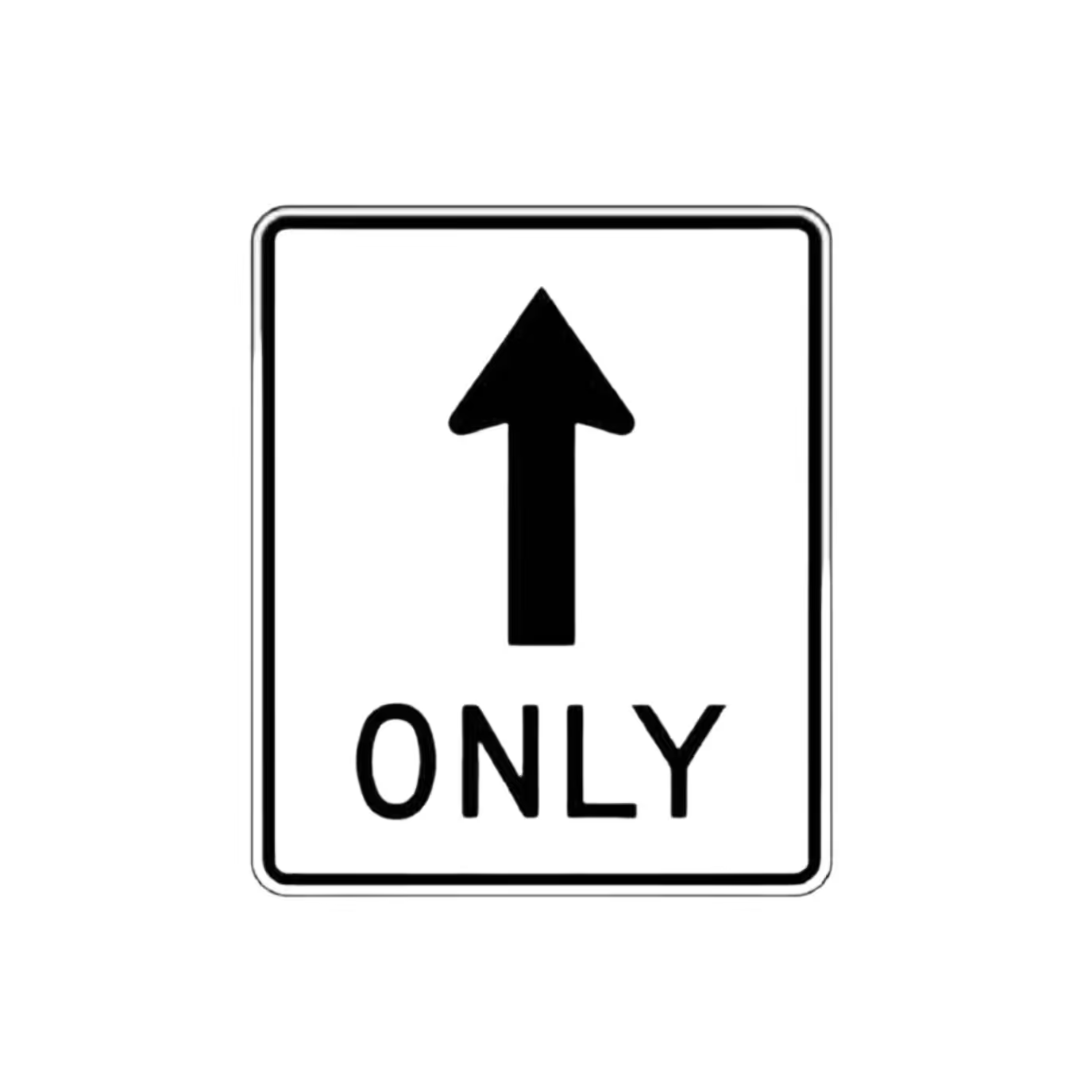
This sign means that no turns are allowed, and drivers must drive straight through the intersection. It is used to prevent illegal turns and keep traffic moving.
Key points to remember:
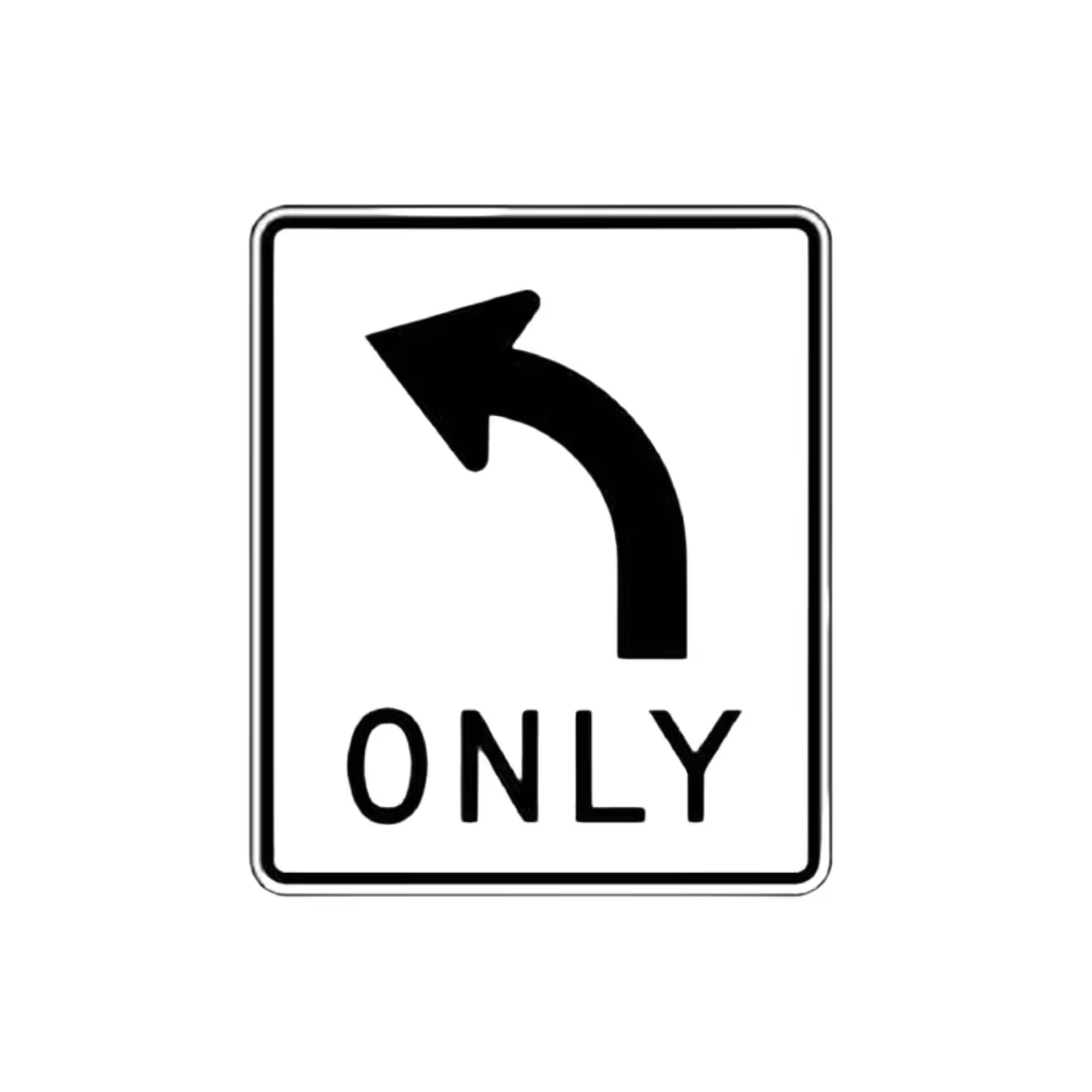
A left turn only sign indicates that all traffic must make a left turn at this intersection. It is used to control traffic flow and prevent accidents.
Key points to remember:

This sign indicates that vehicles in this lane must make a U-turn. It is used in specific areas where U-turns are necessary for proper traffic flow.
Key points to remember:

A right turn sign, often used with route markers, indicates that a right turn is necessary to continue on a specific route. Drivers should be prepared to turn right as directed.
Key points to remember:
.avif)
These lane direction signs tell drivers that they must follow the direction of the arrow for their lane. They help prevent accidents by guiding traffic in the correct direction.
Key points to remember:
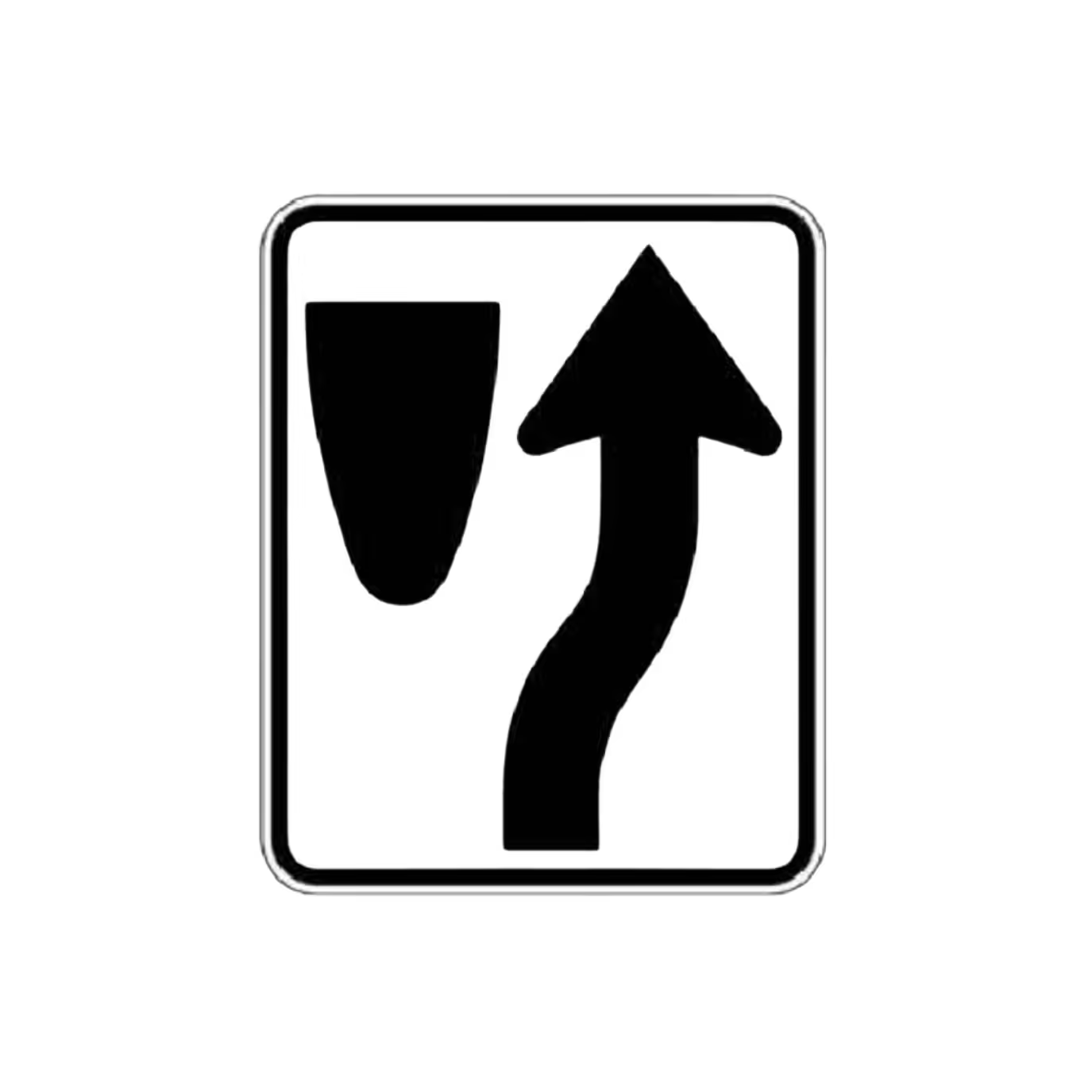
This sign indicates that the road or highway is divided by an island, and approaching vehicles must keep to the right. It helps prevent collisions by directing traffic correctly.
Key points to remember:

Similar to the previous sign, this one directs traffic to keep left of the traffic island. It ensures that vehicles travel in the correct direction and avoid collisions.
Key points to remember:

A one-way sign warns that traffic must move only in the direction indicated by the arrow. It is crucial for preventing head-on collisions in areas where traffic flows in a single direction.
Key points to remember:
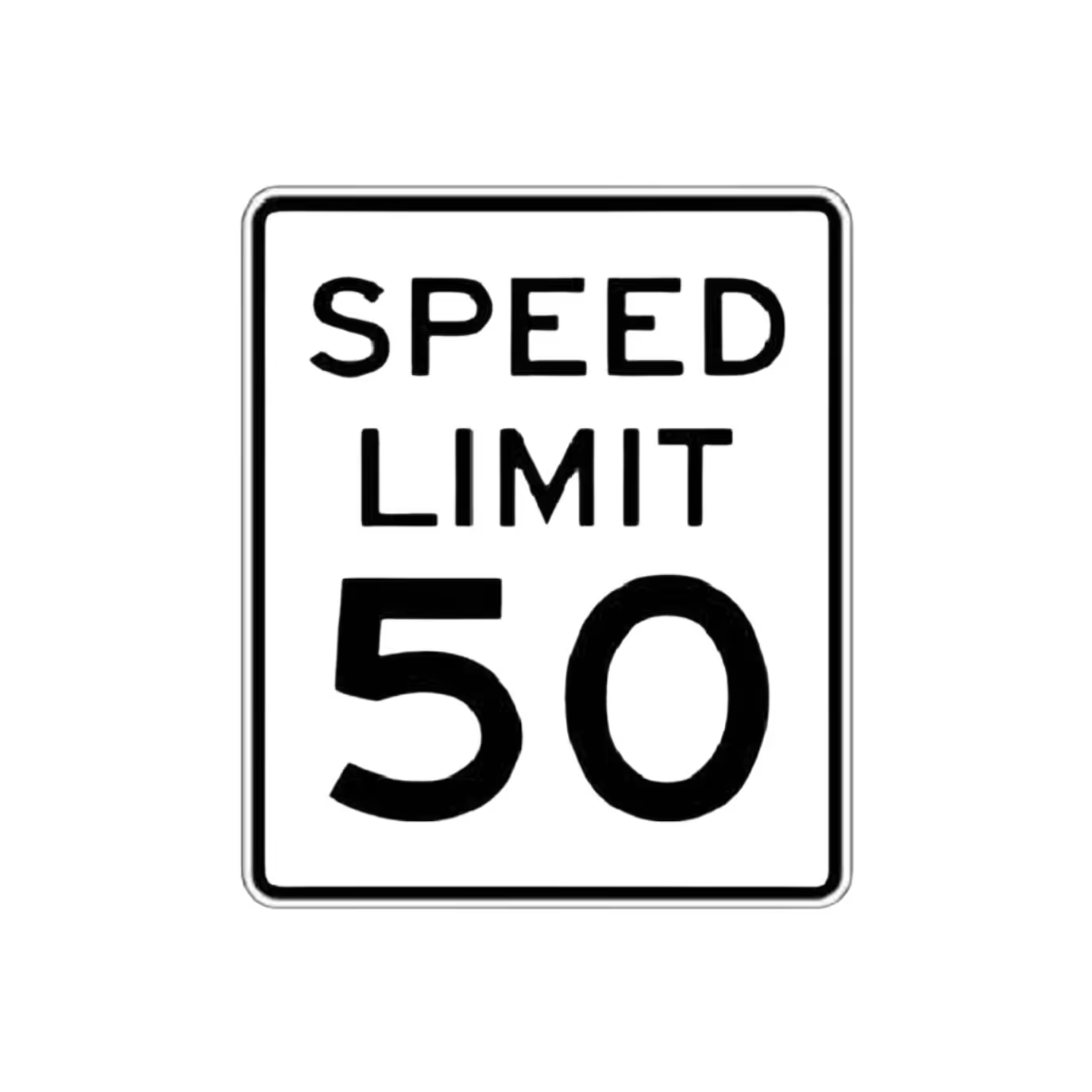
This regulatory sign indicates the maximum legal speed at which drivers can travel under ideal conditions. Obeying speed limits is crucial for road safety.
Key points to remember:
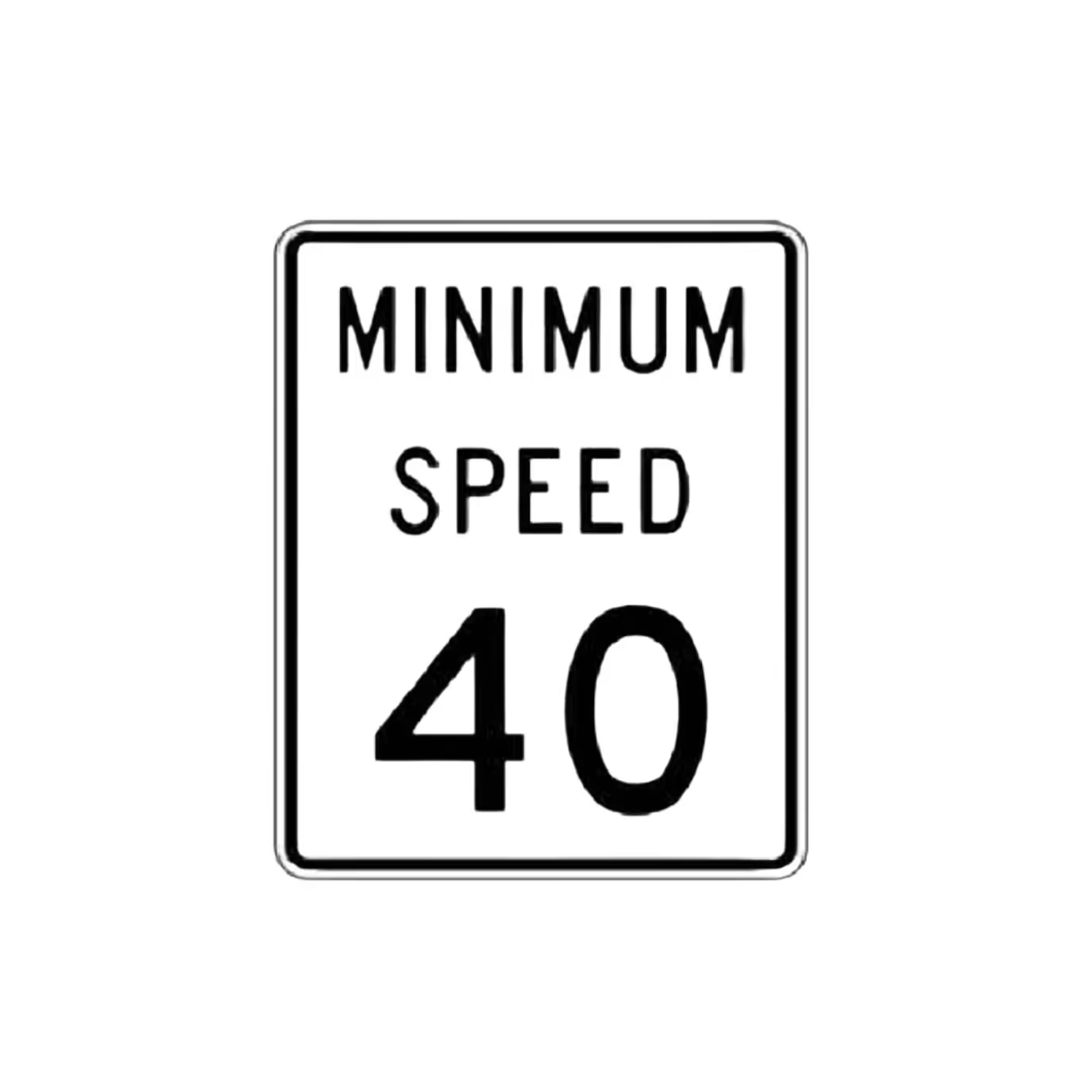
A minimum speed limit sign ensures that traffic flows smoothly by requiring drivers to maintain at least the indicated speed. It prevents slow-moving vehicles from disrupting traffic.
Key points to remember:
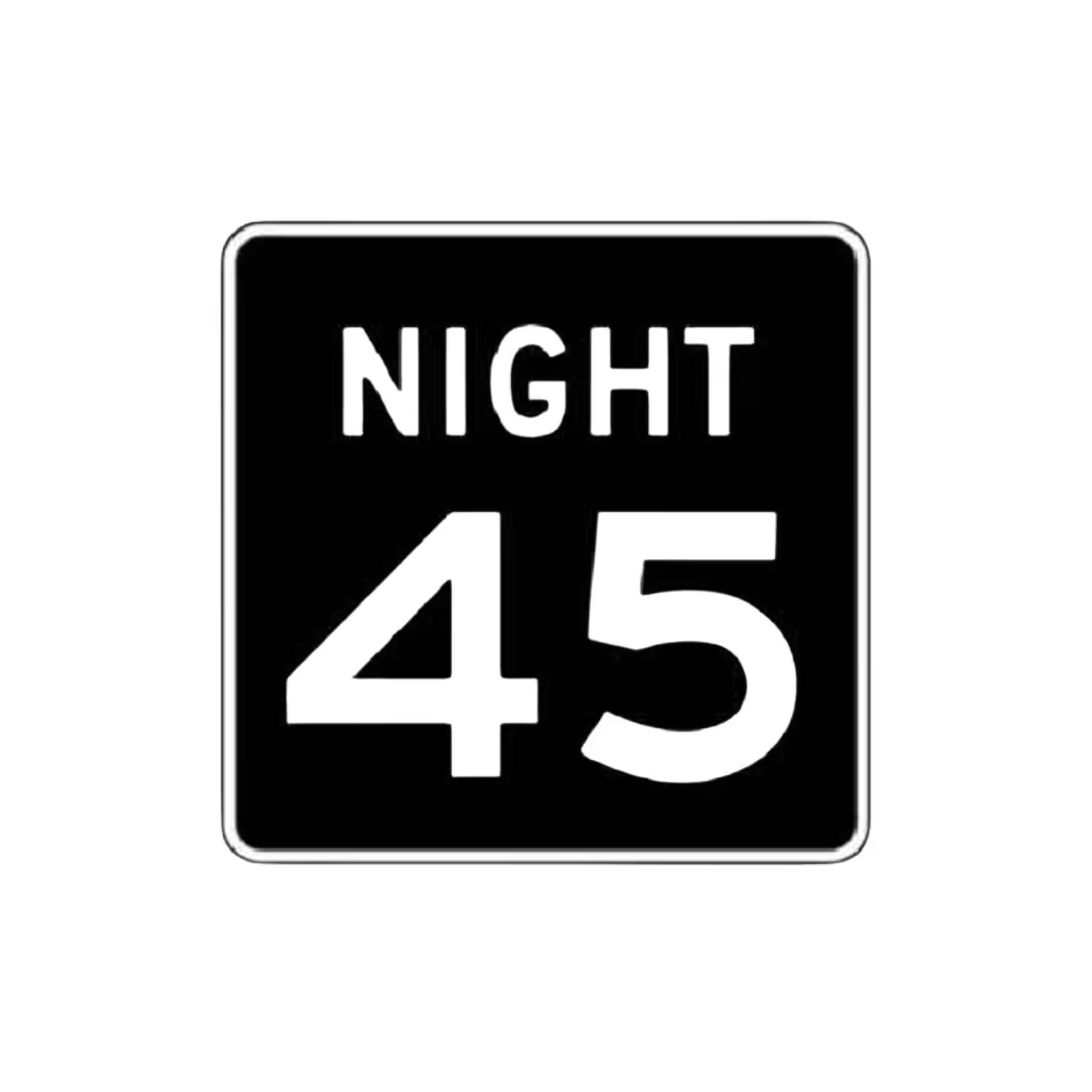
This sign indicates the maximum speed limit when driving at night. Drivers should adjust their speed to stay within the posted limit and ensure safety in low visibility conditions.
Key points to remember:
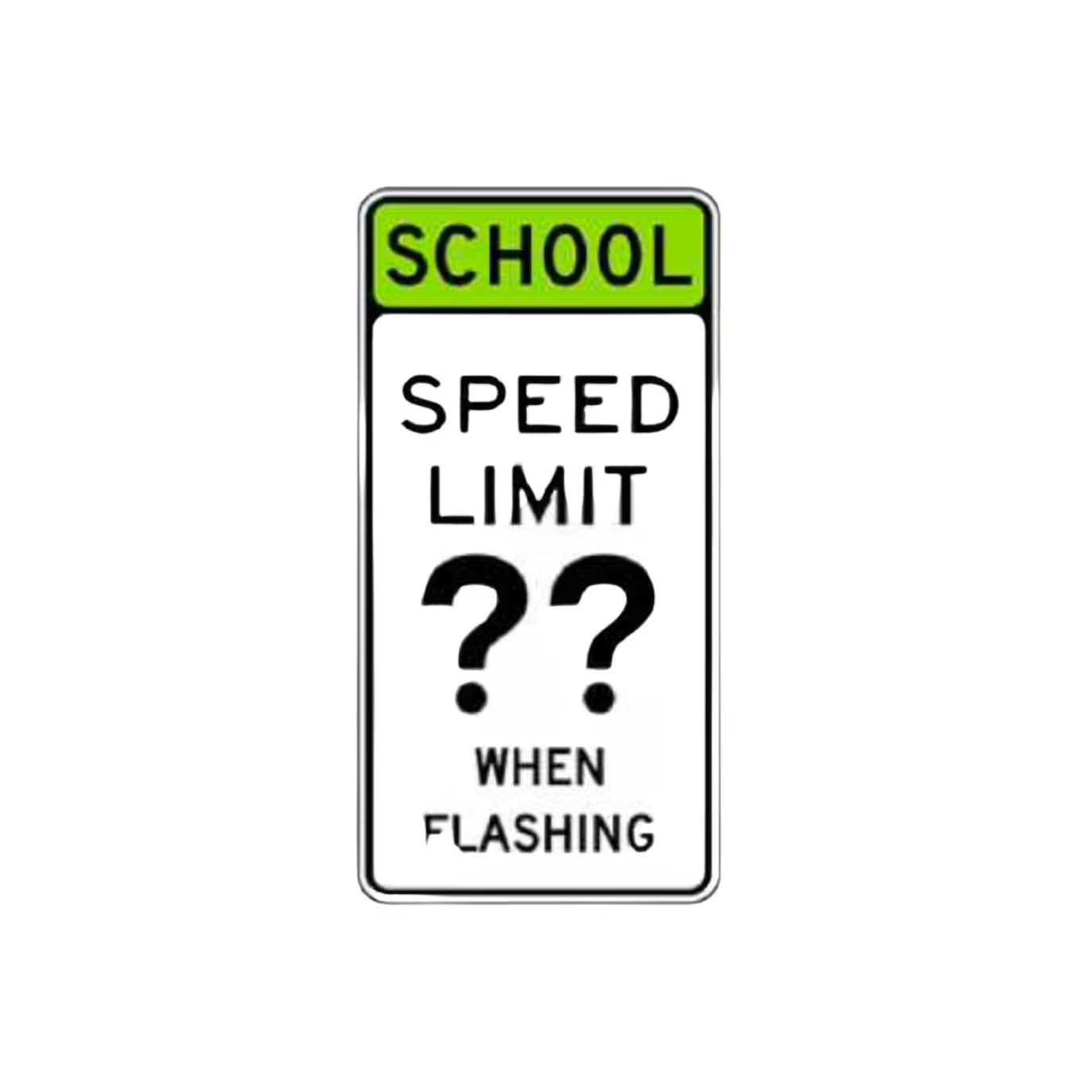
A speed limit near school sign indicates that drivers must reduce their speed when passing through school zones, especially during times when children are present.
Key points to remember:
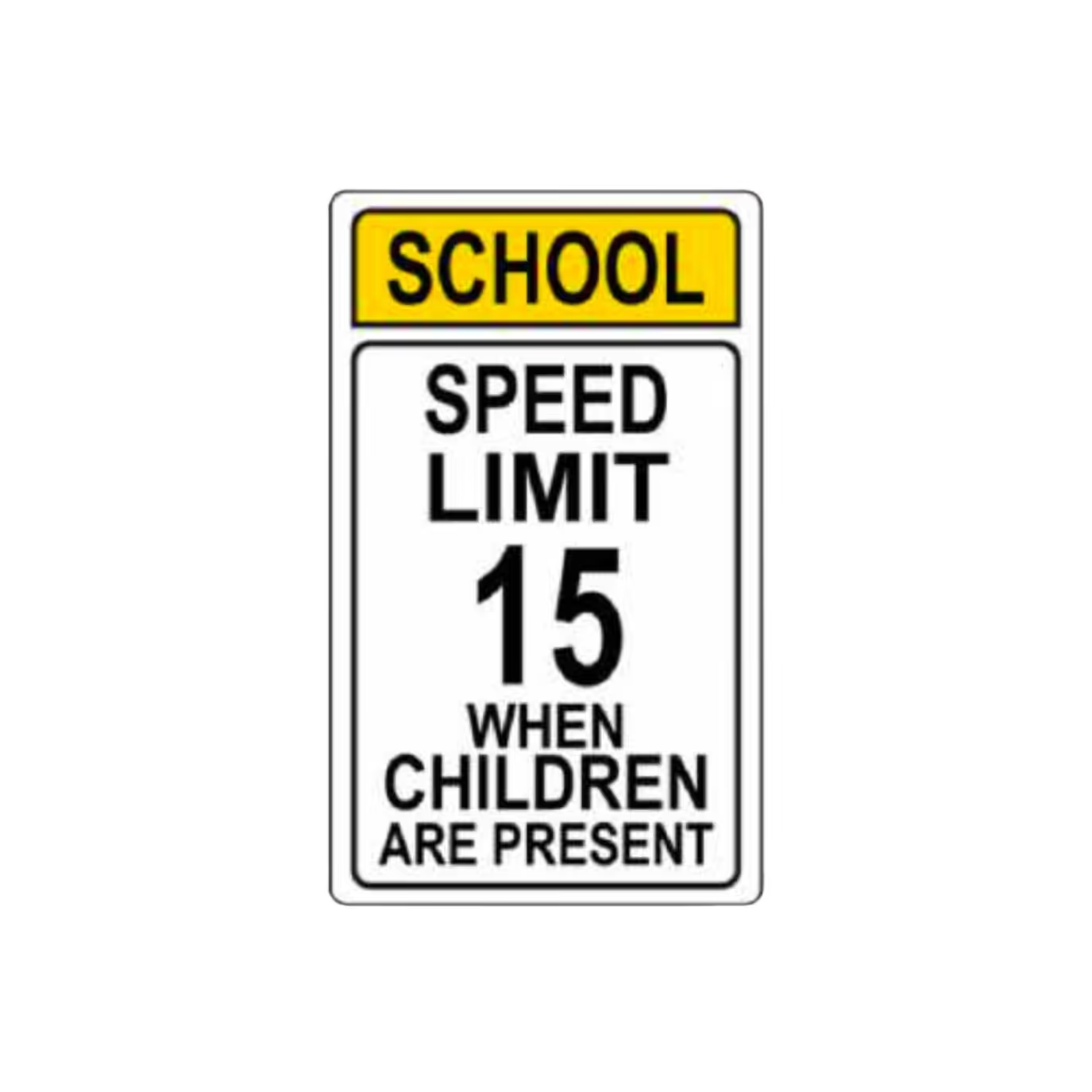
This sign indicates the maximum allowable speed when children are present, typically near schools or playgrounds. Drivers should slow down and be extra cautious.
Key points to remember:
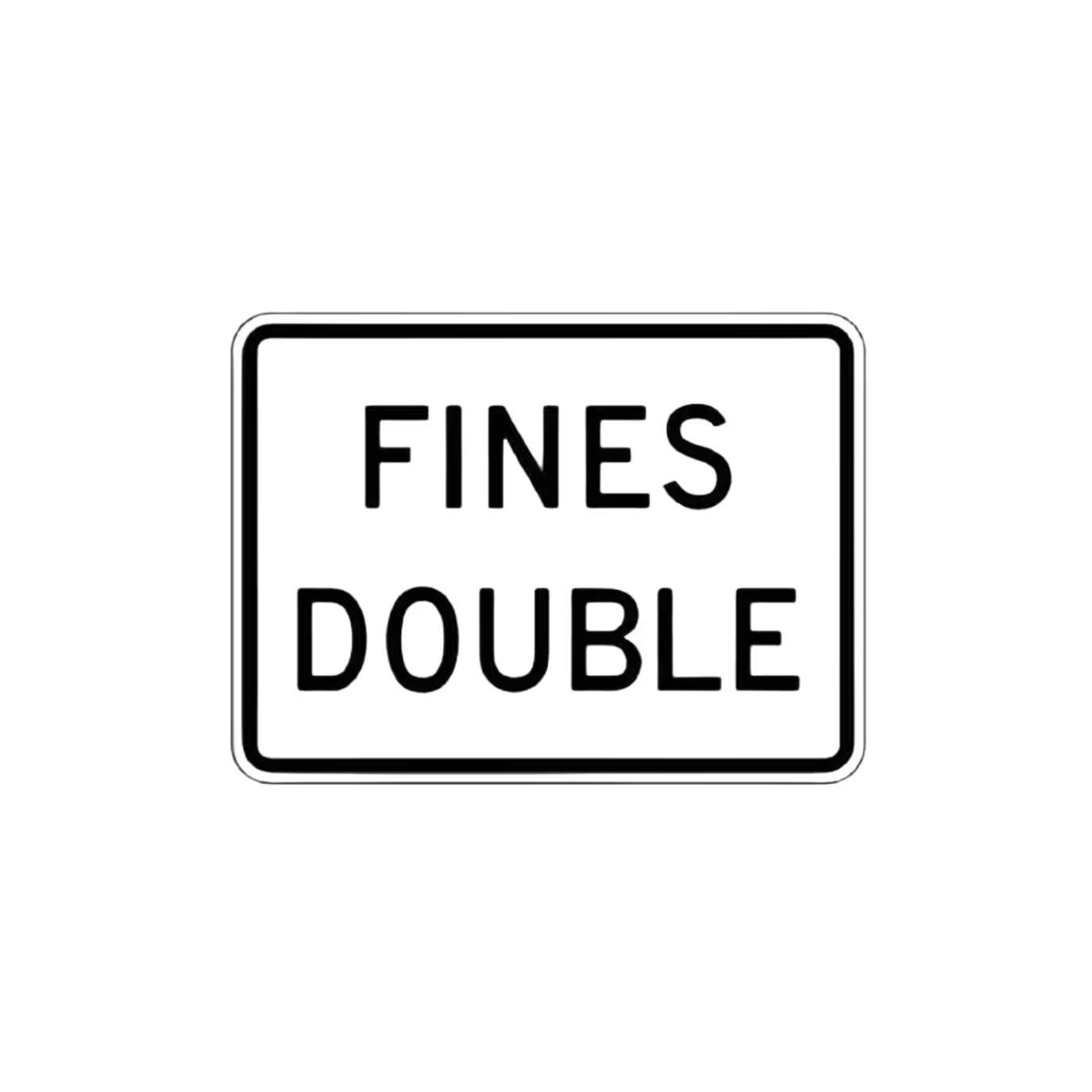
A fines double in work zones sign informs drivers that speeding fines are doubled in construction zones. It emphasizes the importance of obeying speed limits in these areas to protect workers.
Key points to remember:

This sign directs slower-moving vehicles to stay in the right lane, allowing faster traffic to pass on the left. It helps maintain smooth traffic flow and reduces congestion.
Key points to remember:
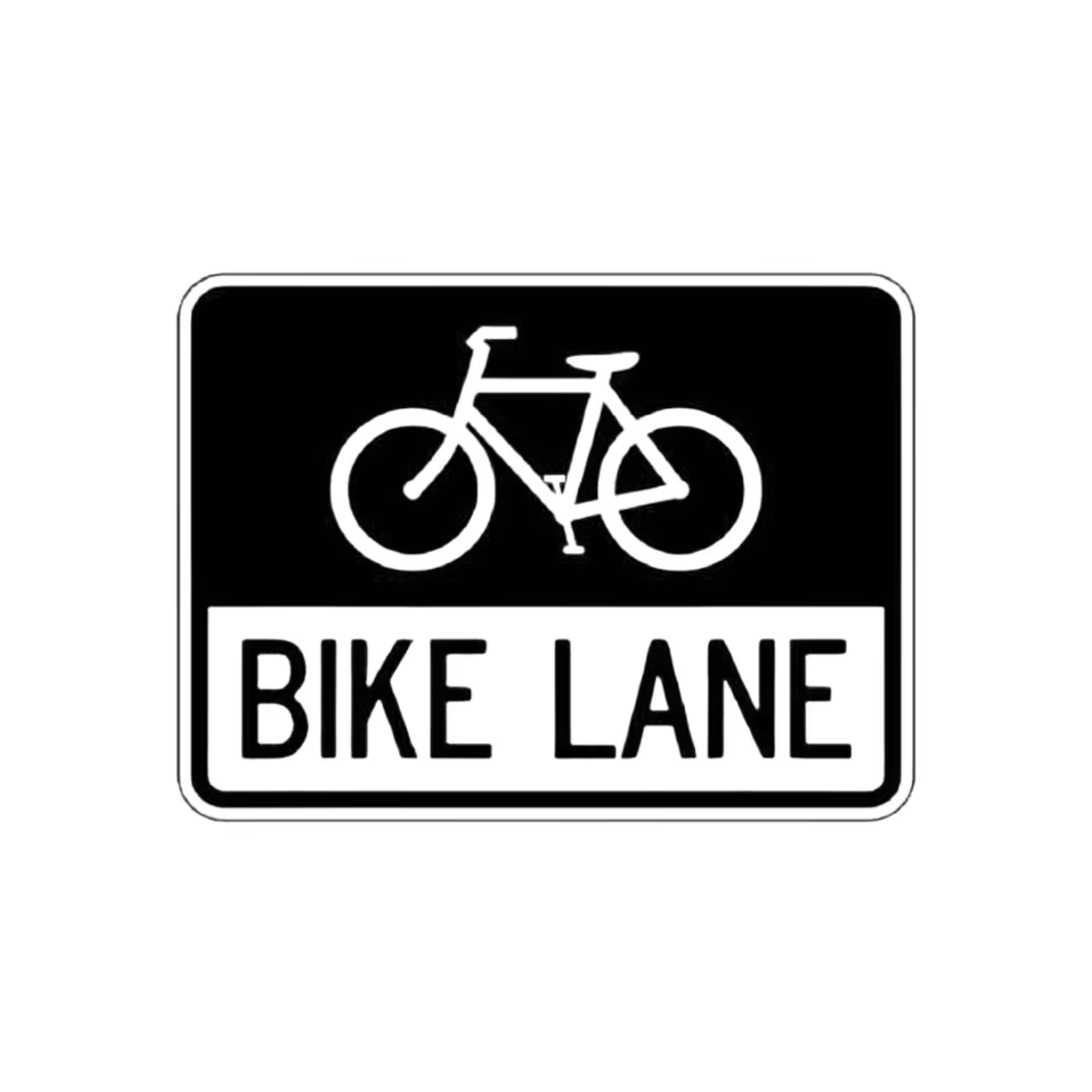
A bike lane sign marks a lane reserved for bicycles. Motorists should avoid driving in these lanes and be cautious of cyclists when turning or merging.
Key points to remember:
%20lane.avif)
An HOV lane sign indicates that the lane is reserved for vehicles with multiple occupants, such as carpools. It helps reduce traffic congestion by encouraging carpooling.
Key points to remember:

This sign indicates that a lane is reserved for buses or carpool vehicles during certain hours, typically during rush hour. Drivers should comply with the restrictions to avoid fines.
Key points to remember:
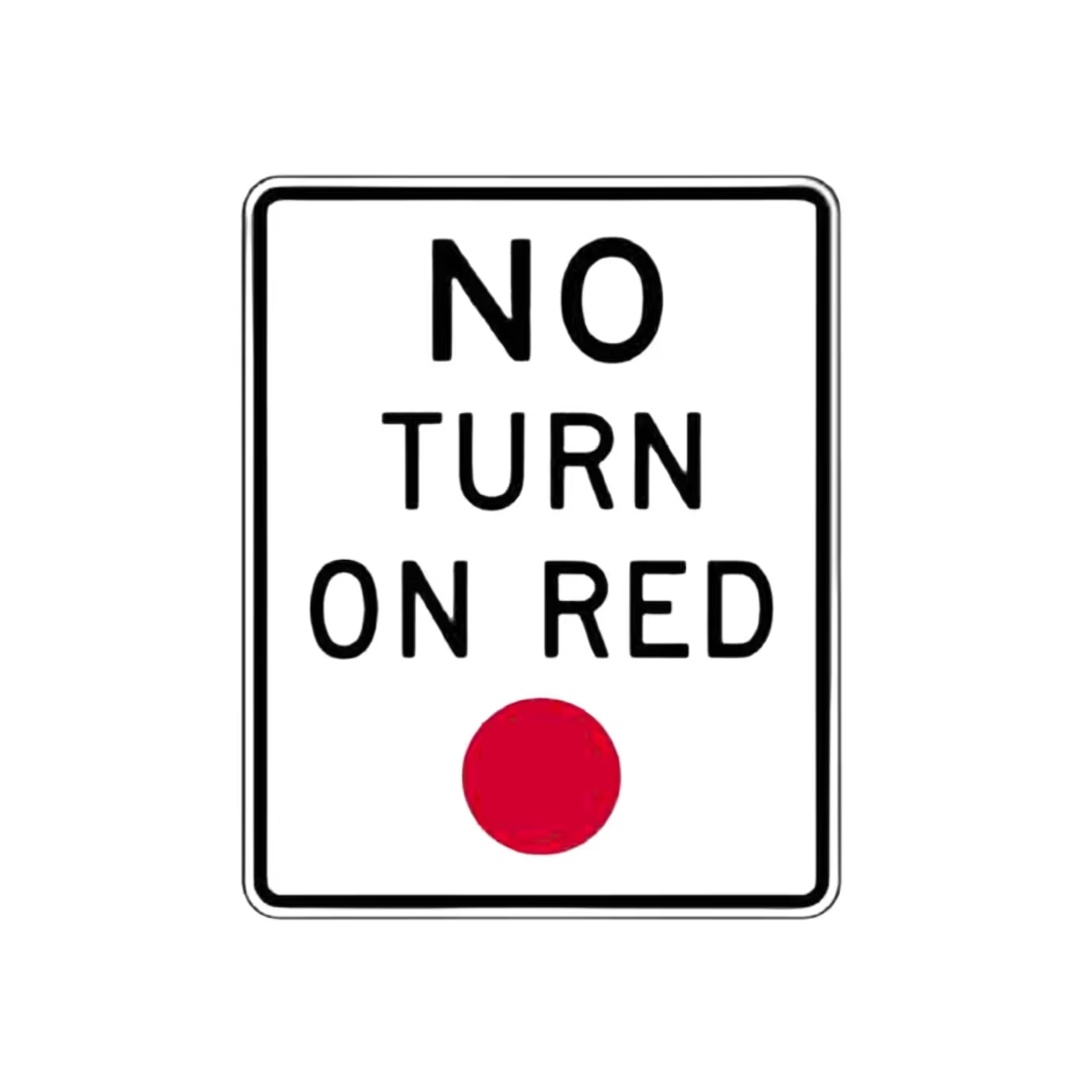
A no turn on red sign means that drivers must wait for the light to turn green before making a right turn. It prevents accidents at busy intersections.
Key points to remember:
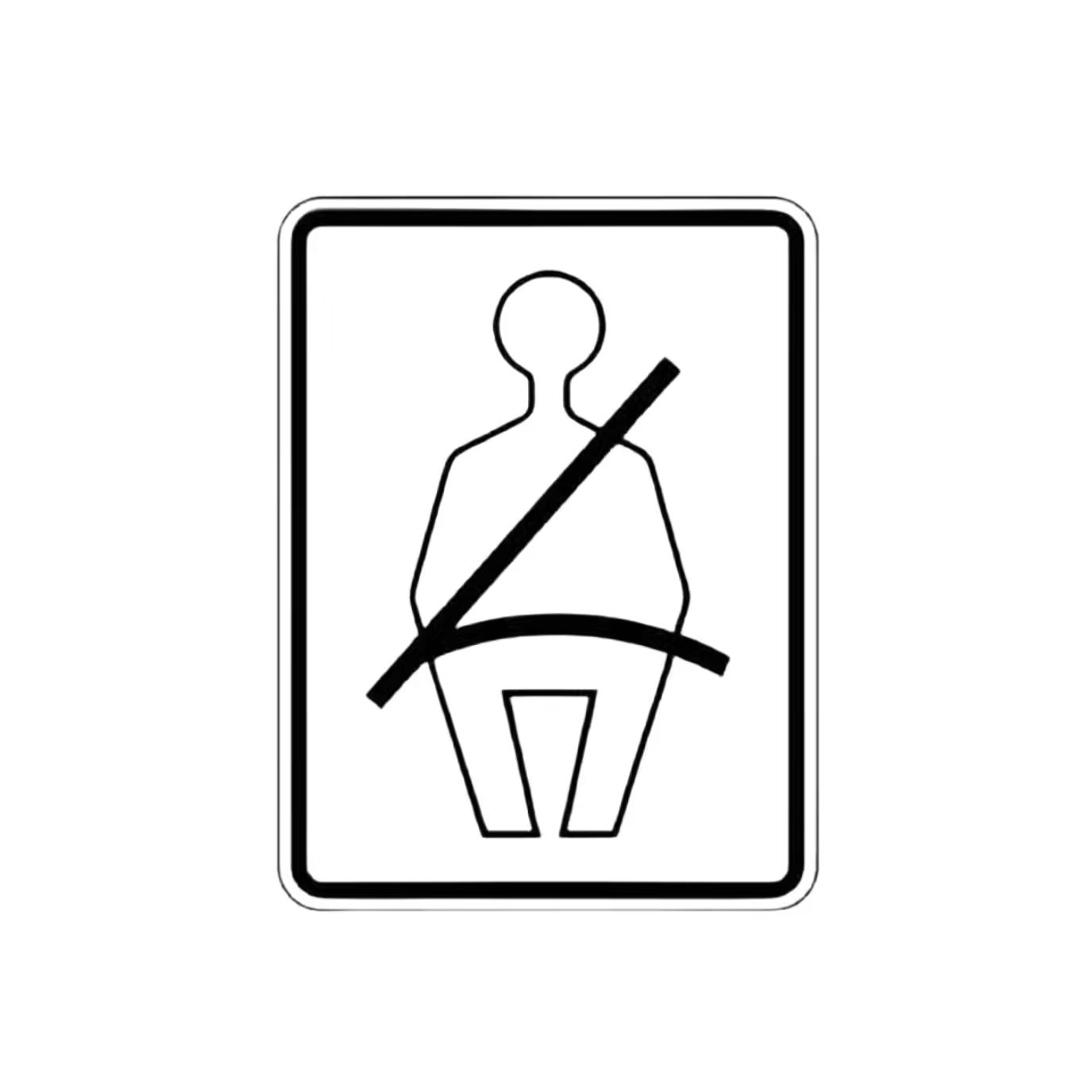
This sign reminds drivers and passengers that seat belts are required by law. Wearing a seat belt is one of the most effective ways to reduce injuries in a crash.
Key points to remember:

This regulatory sign indicates a railroad crossing ahead. Drivers should be prepared to stop, especially when trains are approaching. Trains have the right of way.
Key points to remember:

A roundabout sign indicates that a circular intersection is ahead. Drivers should slow down, yield to traffic already in the roundabout, and proceed when safe.
Key points to remember:

A do not enter sign indicates that drivers are not allowed to enter the roadway where the sign is posted. It is commonly used at one-way street entrances.
Key points to remember:

A stop sign requires drivers to come to a complete stop before the stop line, crosswalk, or intersection. Drivers must yield the right of way to other vehicles and pedestrians before proceeding.
Key points to remember:
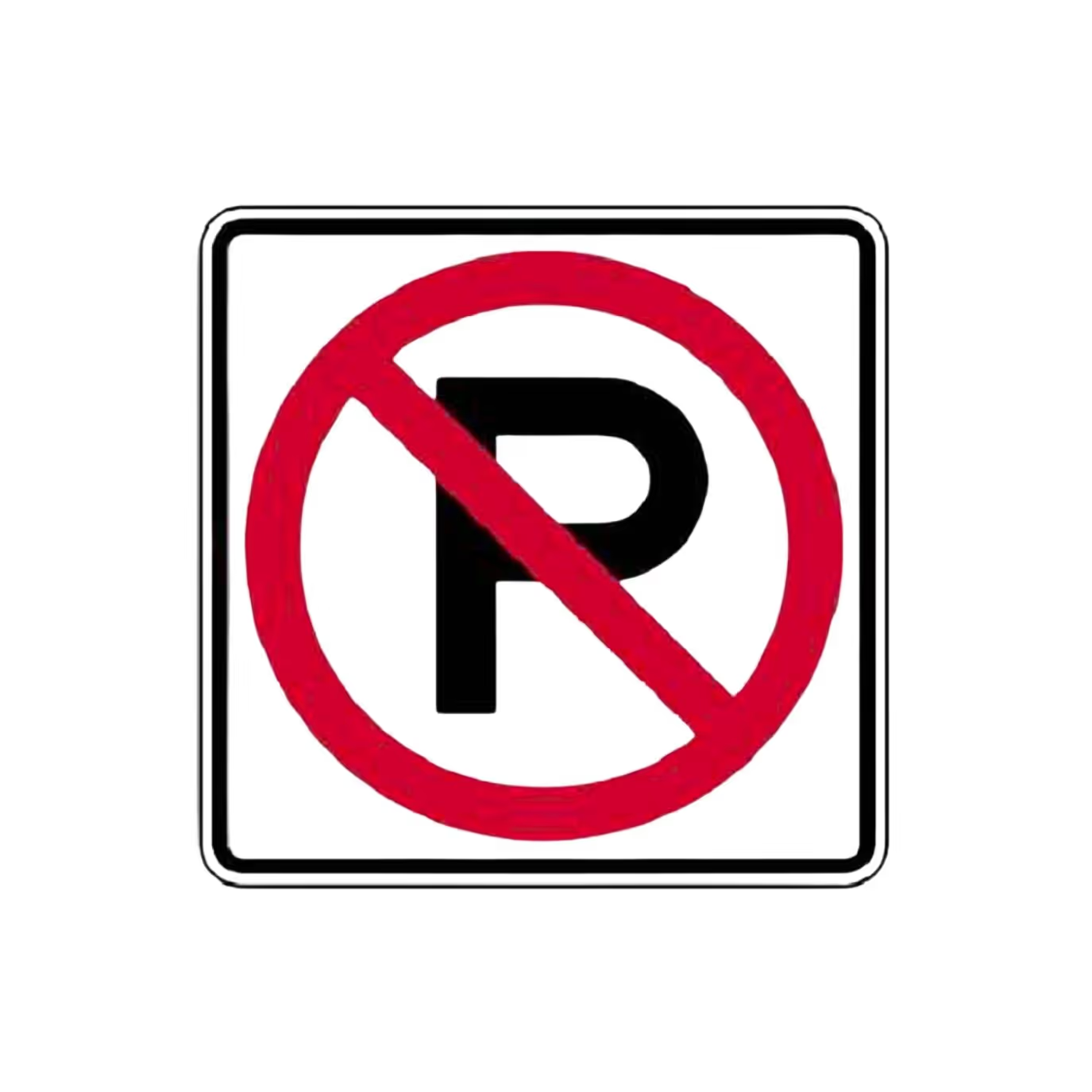
A no parking sign indicates that parking is not allowed in the designated area. It is often used to keep traffic flowing smoothly and prevent obstructions.
Key points to remember:
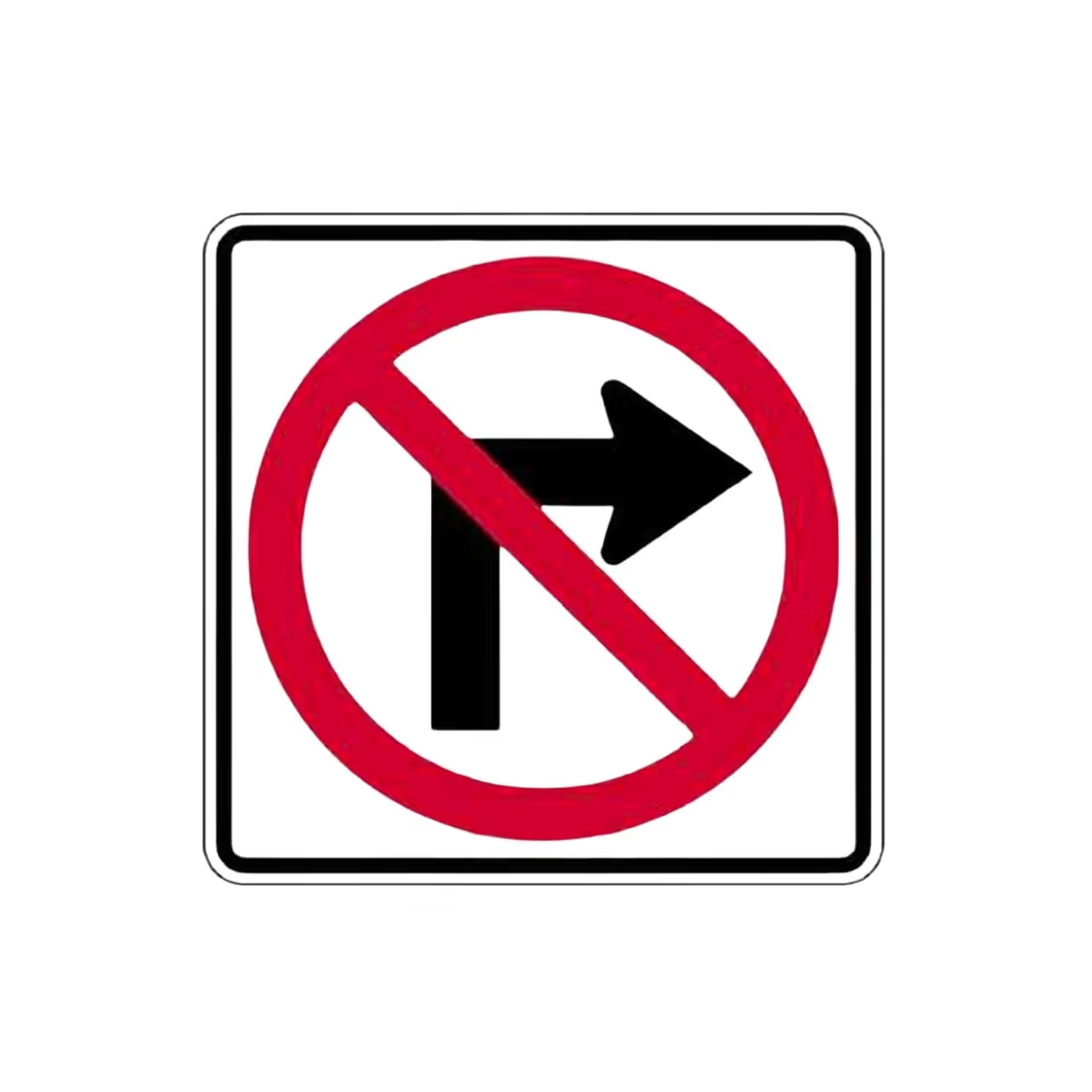
A no right turn sign prohibits drivers from making a right turn at the intersection. It is used to prevent dangerous traffic situations and maintain order.
Key points to remember:
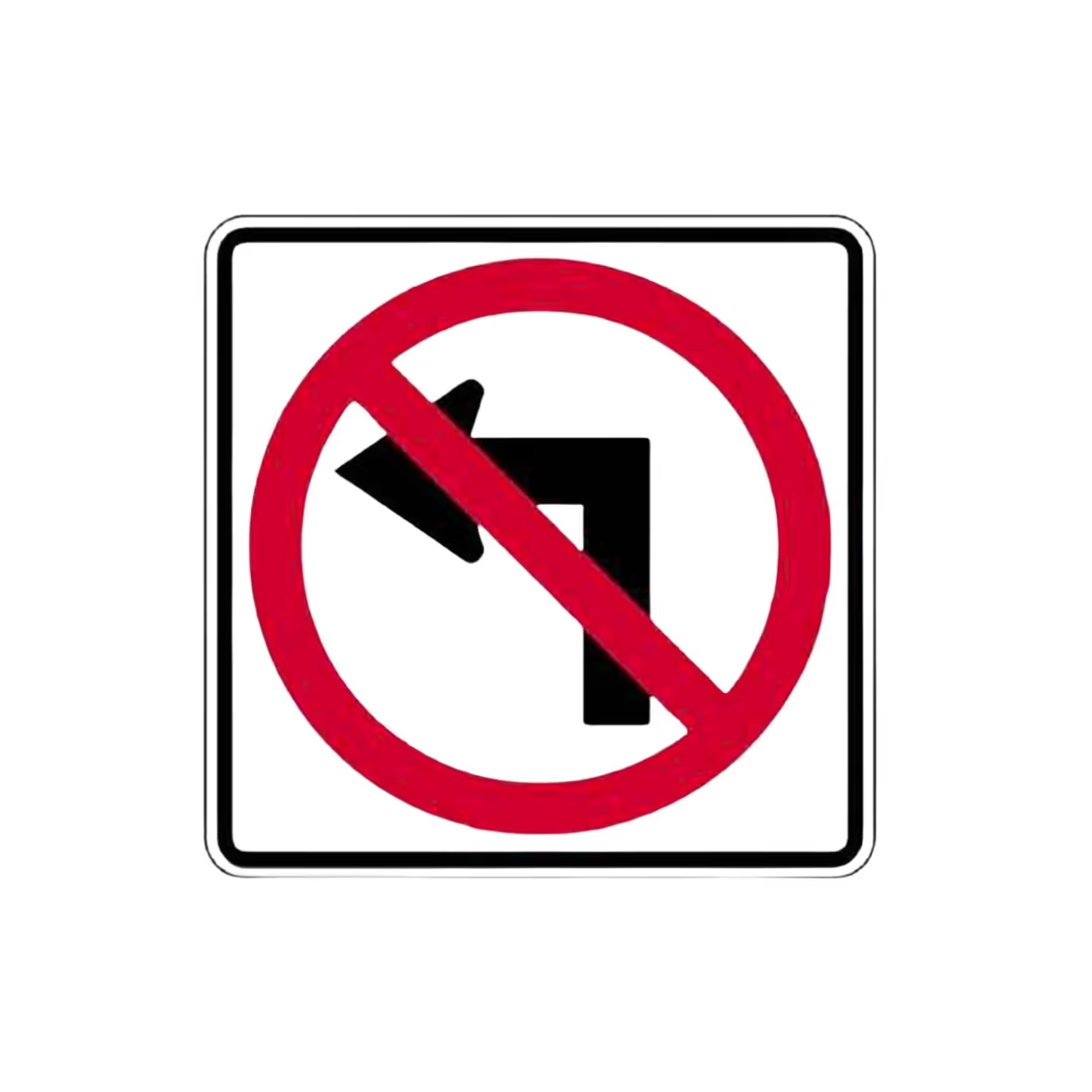
This sign indicates that left turns are not allowed at the intersection. It helps manage traffic flow and prevent accidents.
Key points to remember:
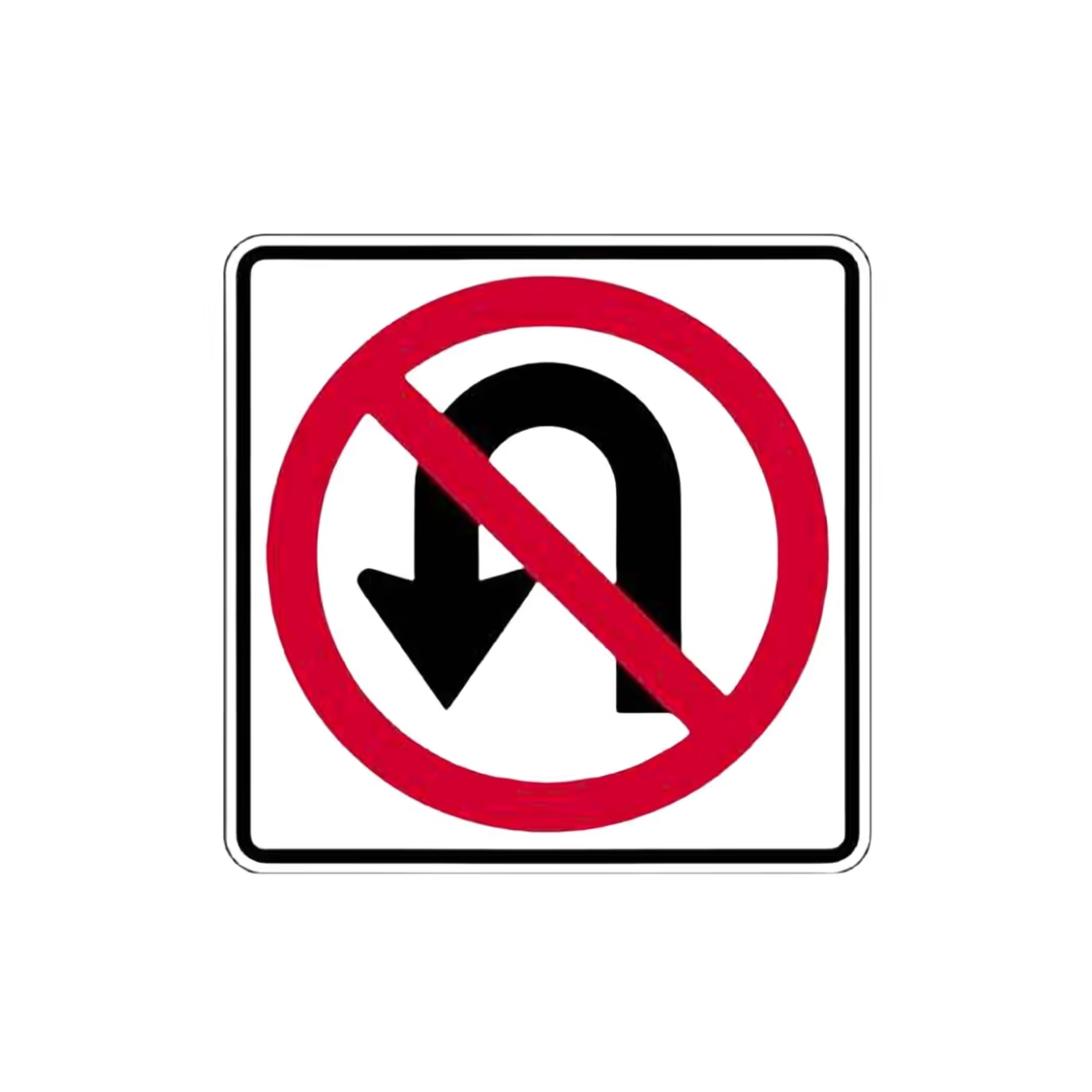
A U-turn not allowed sign prohibits U-turns at the intersection or location. It is used to prevent disruptions and maintain smooth traffic flow.
Key points to remember:
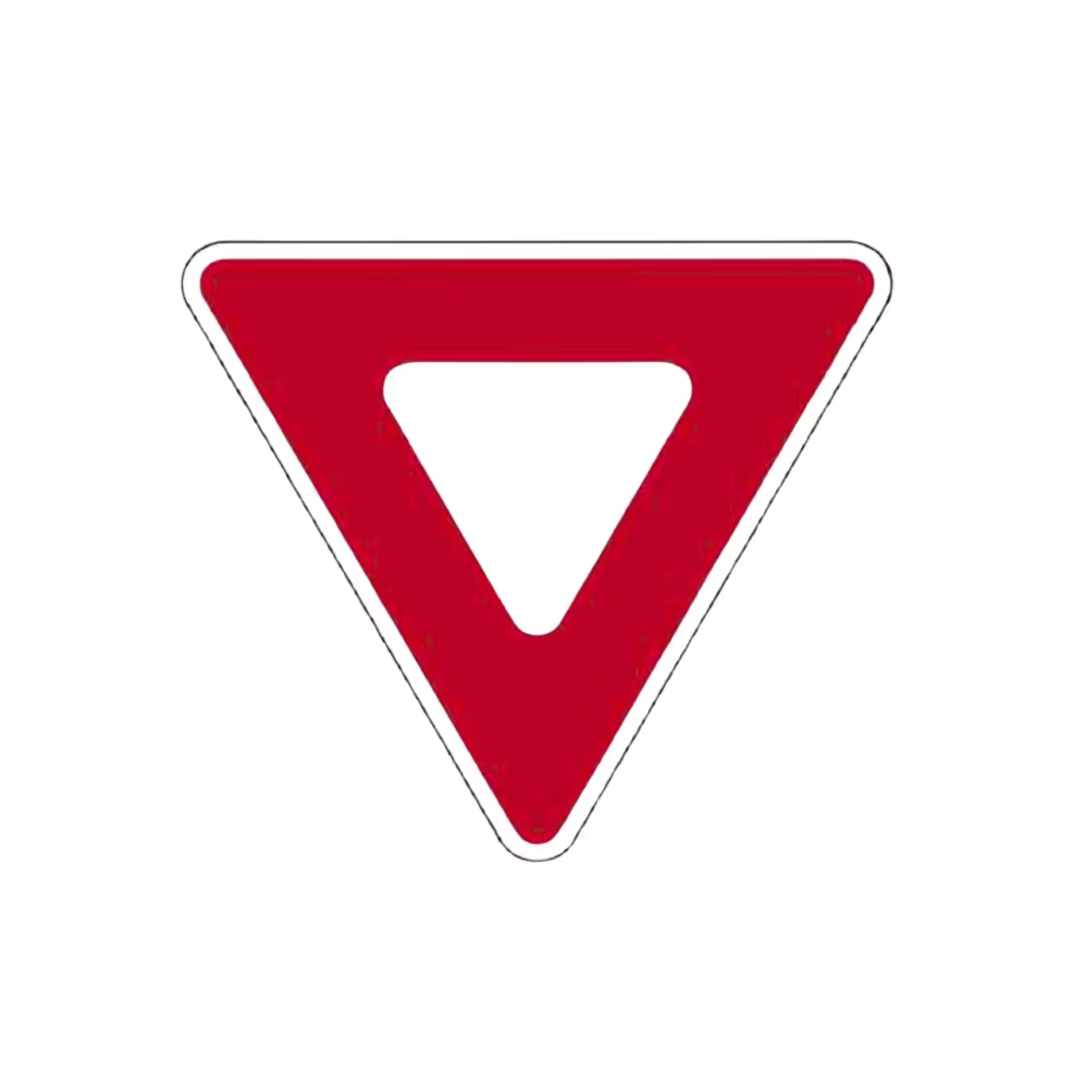
A yield sign indicates that drivers must slow down and yield the right of way to oncoming traffic. It is commonly used at intersections where full stops are not necessary.
Key points to remember:
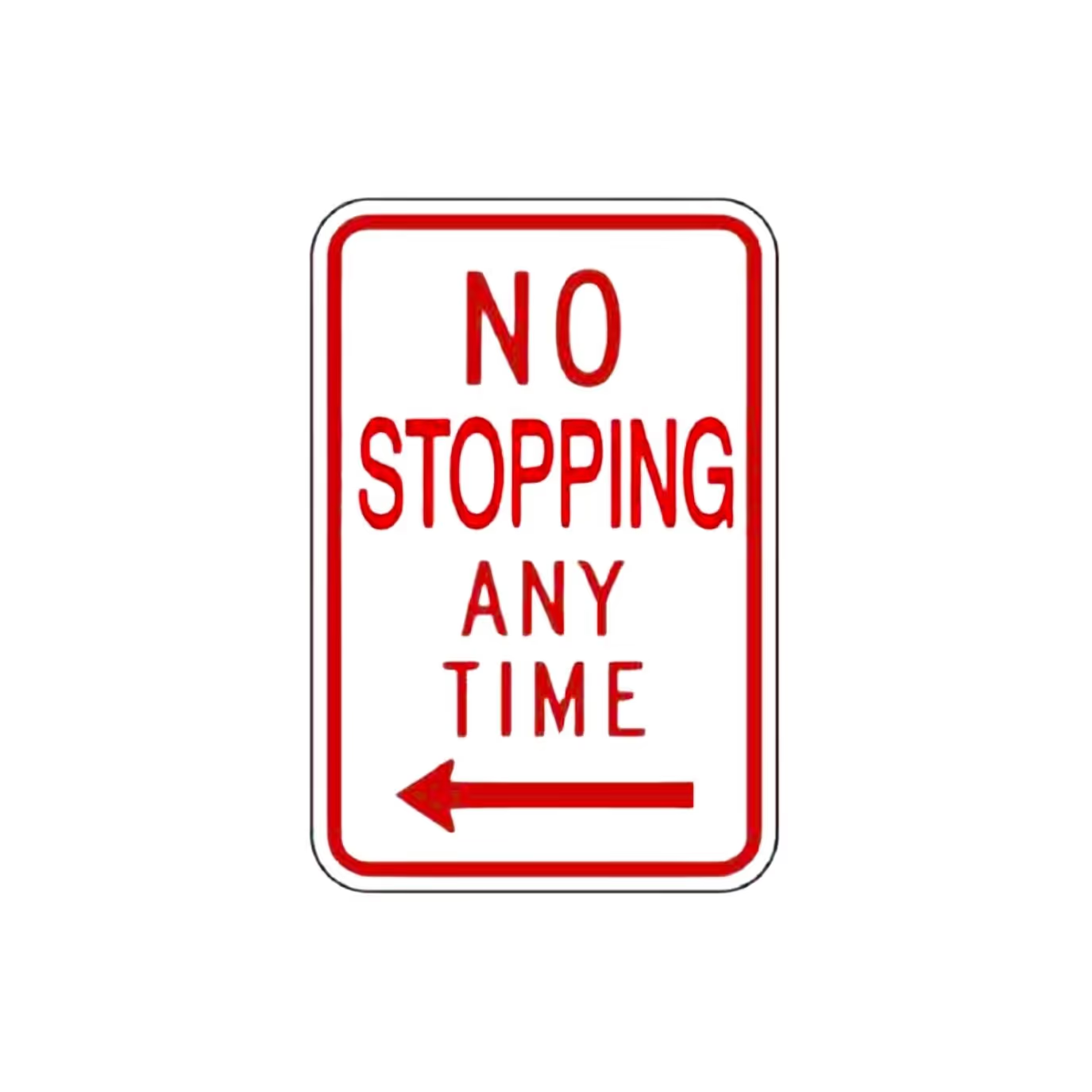
This sign prohibits stopping in the indicated area to keep traffic flowing smoothly. It is commonly used in busy urban areas or near intersections.
Key points to remember:
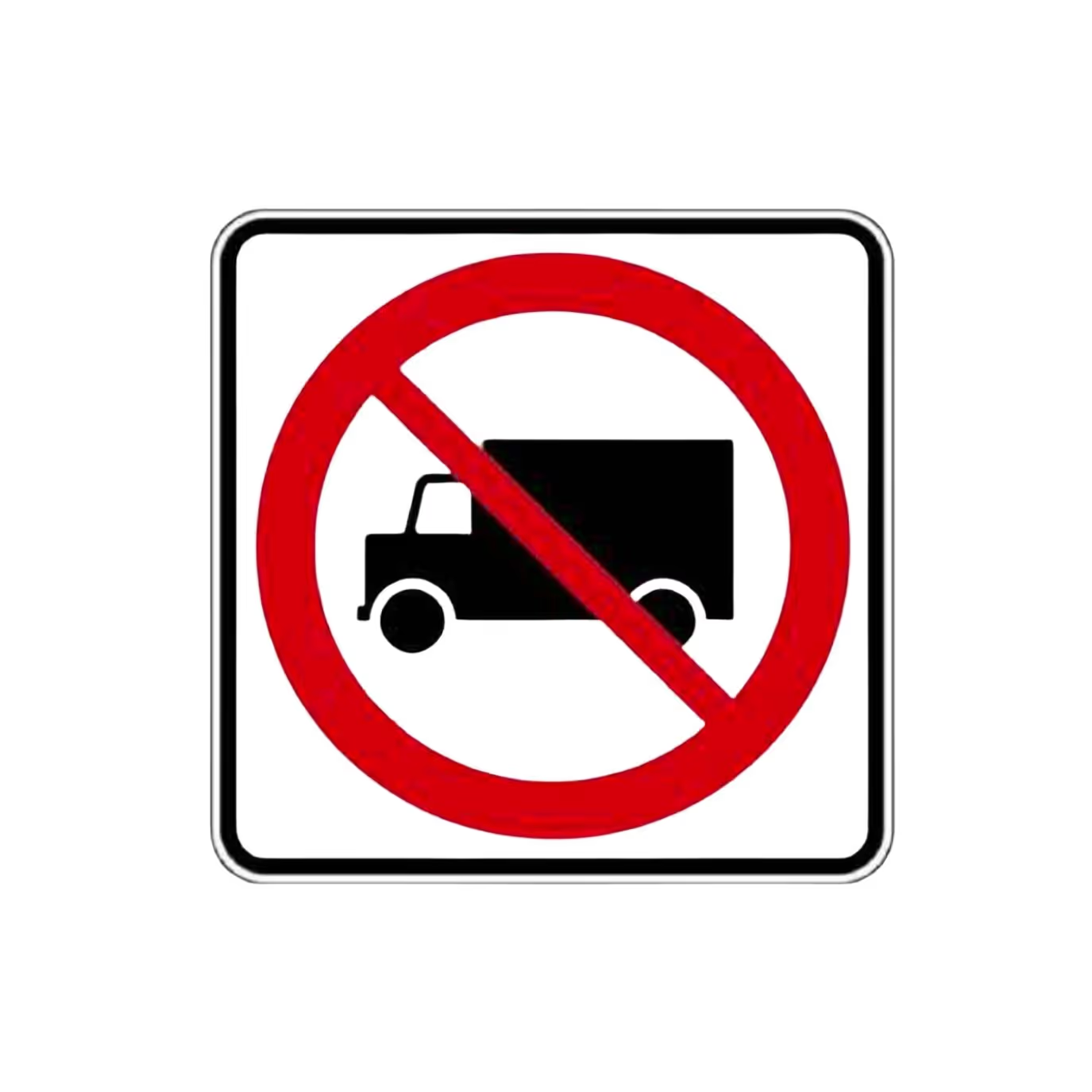
A trucks not allowed sign indicates that trucks are prohibited from using the road where the sign is posted. It helps protect smaller roads from heavy vehicles.
Key points to remember:
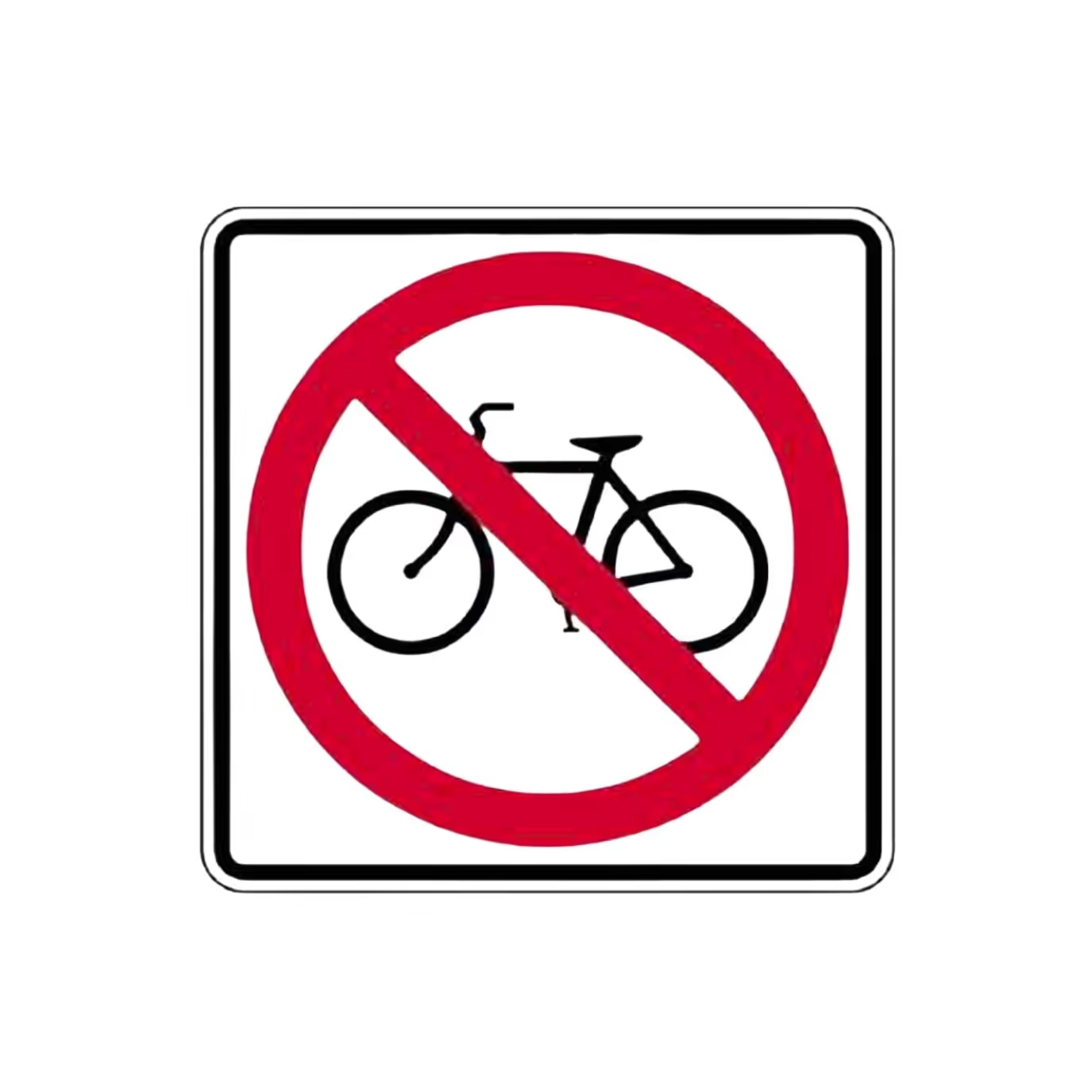
This sign indicates that bicycles are not permitted on the roadway where the sign is posted. It is used in areas where bicycle traffic may pose a safety hazard.
Key points to remember:

A pedestrians not allowed sign prohibits pedestrians from crossing or walking on the indicated road. It is used in areas where foot traffic is dangerous.
Key points to remember:
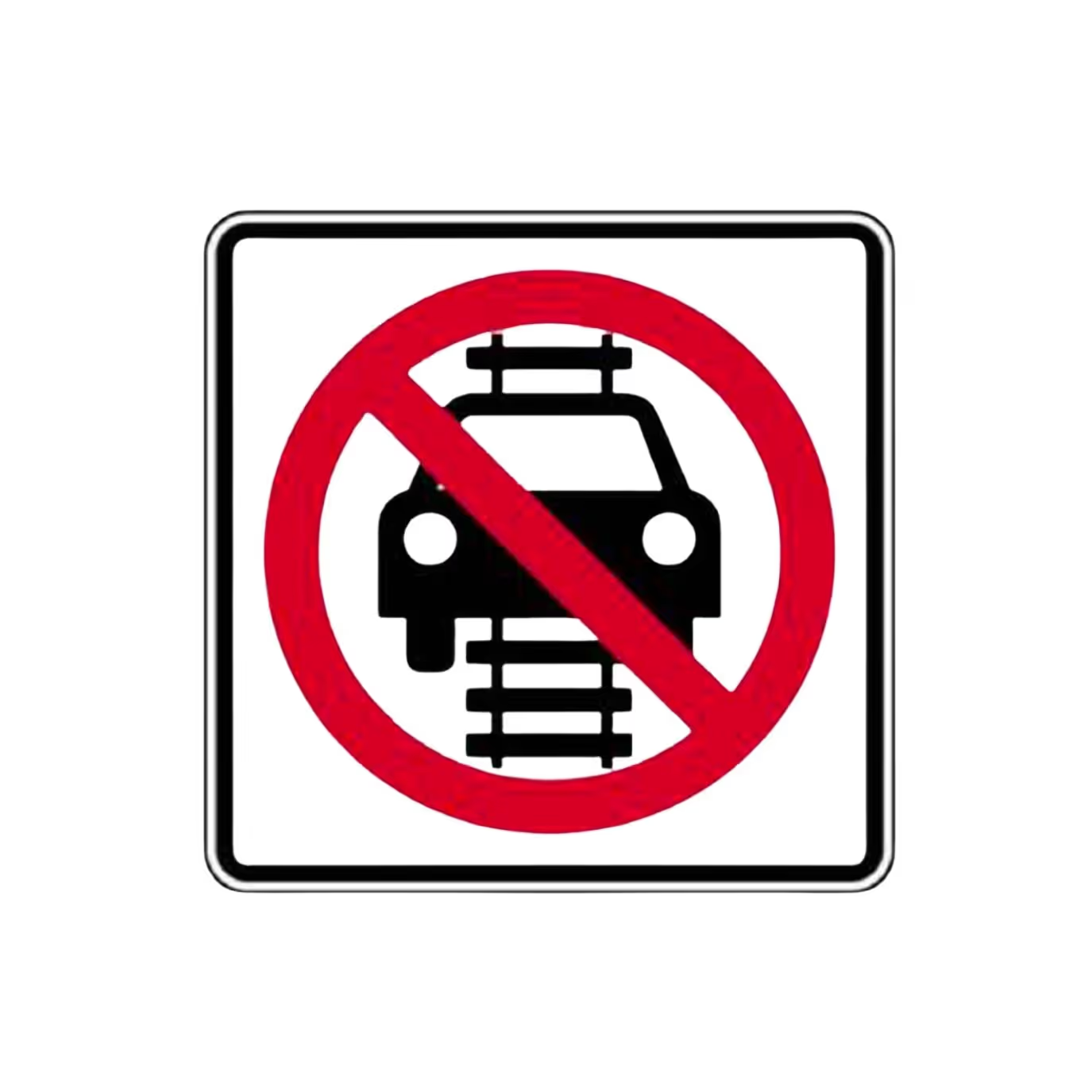
This sign indicates that vehicles are not allowed to drive on railroad tracks. It is used to prevent dangerous situations and collisions with trains.
Key points to remember:
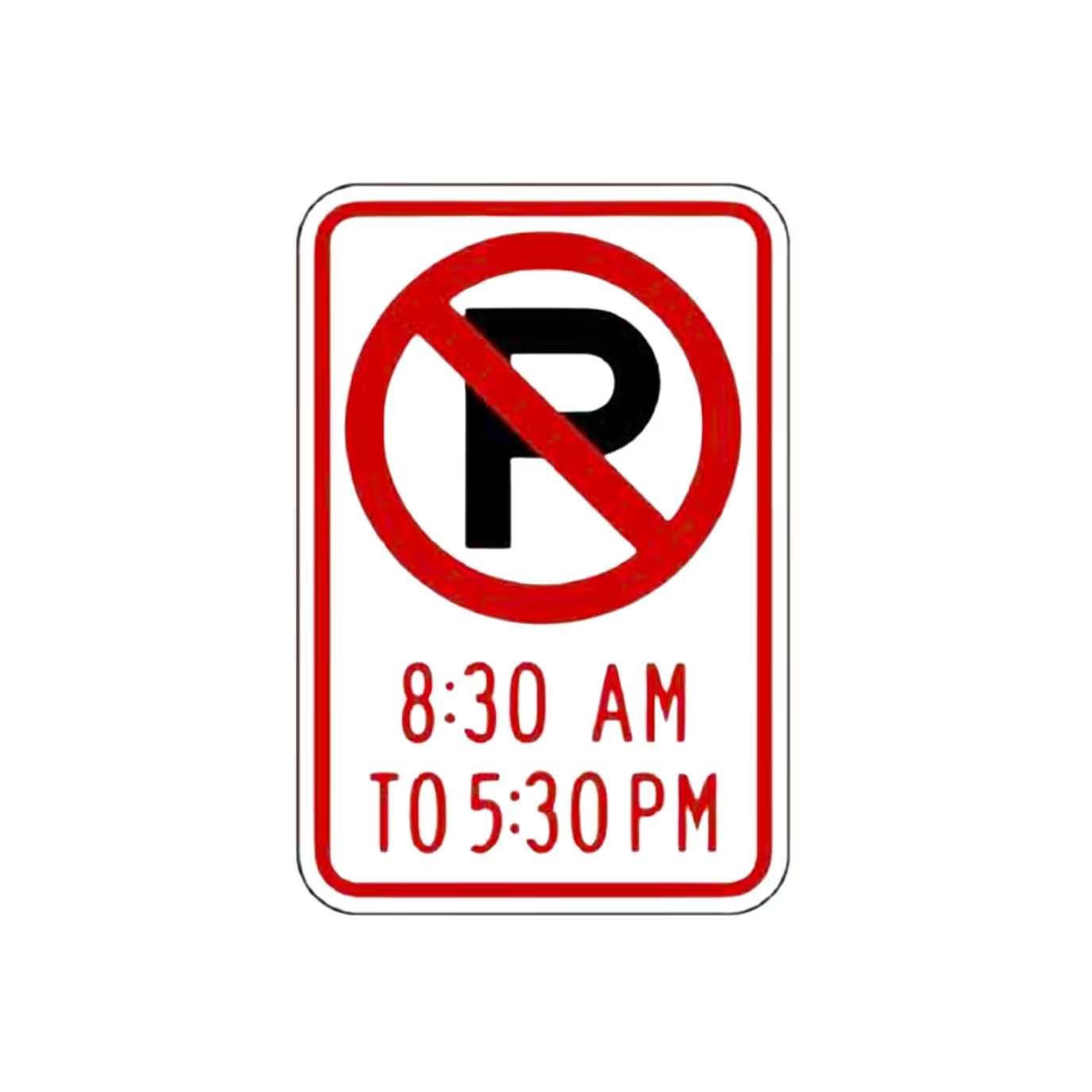
This sign restricts parking during specific times as indicated. Drivers should check the times and avoid parking during the prohibited hours.
Key points to remember:
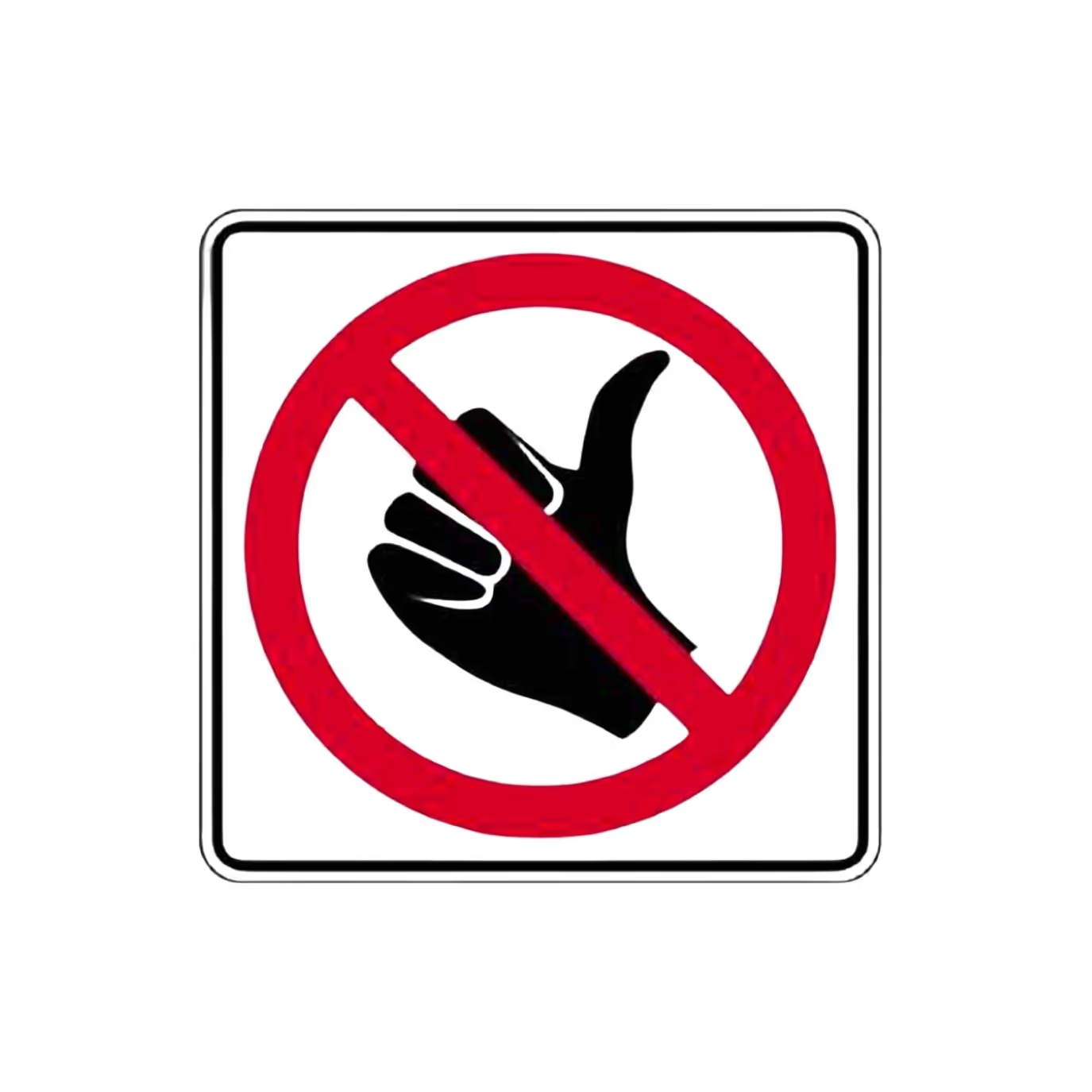
A no hitchhiking sign indicates that hitchhiking is not permitted in the designated area. It is used to maintain safety and order on busy roadways.
Key points to remember:

A no standing sign means that drivers may only stop momentarily to pick up or drop off passengers. It is used in areas where prolonged stopping would obstruct traffic.
Key points to remember:
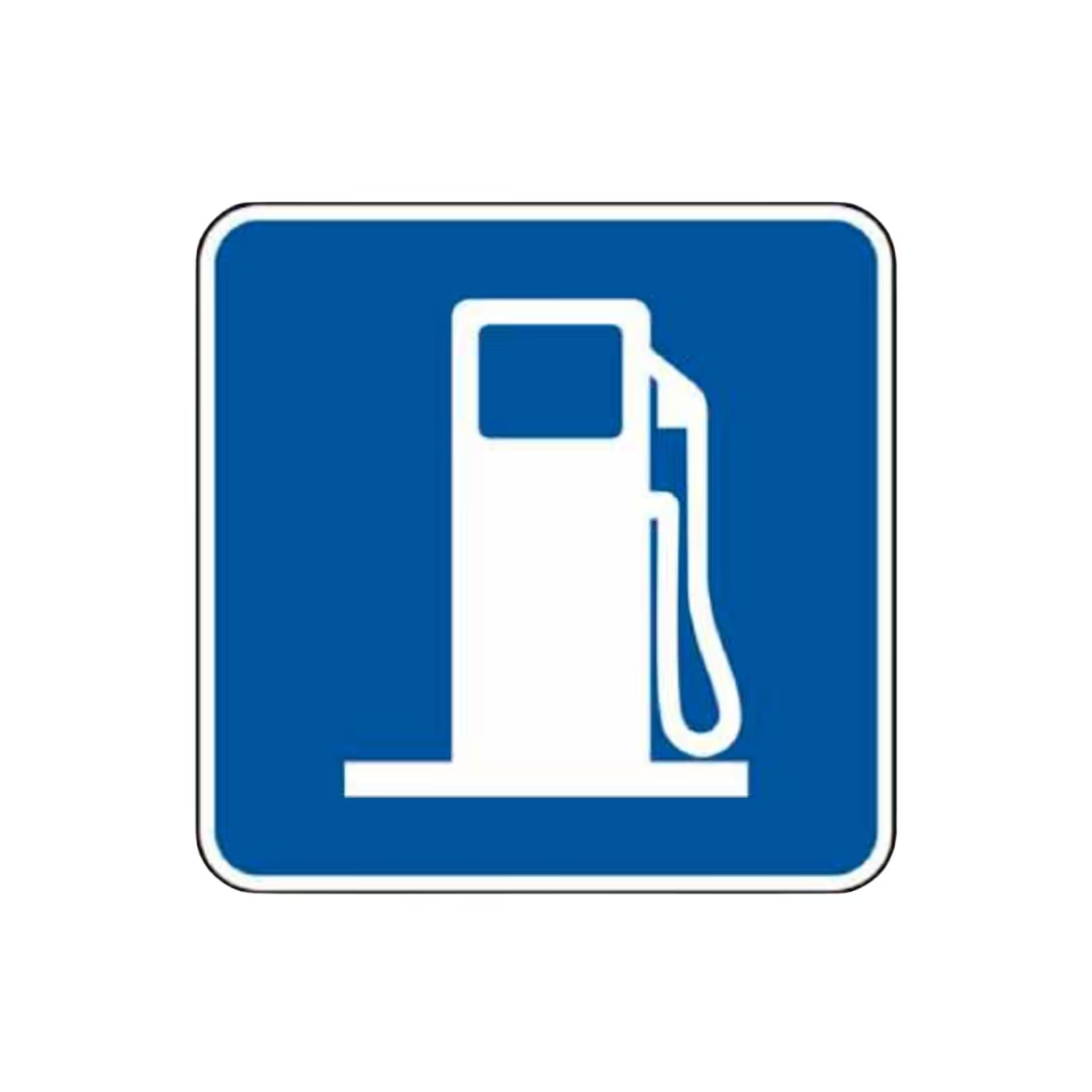
A gas station sign indicates the location of a gas station ahead. It is part of the informational signs that help drivers locate services.
Key points to remember:
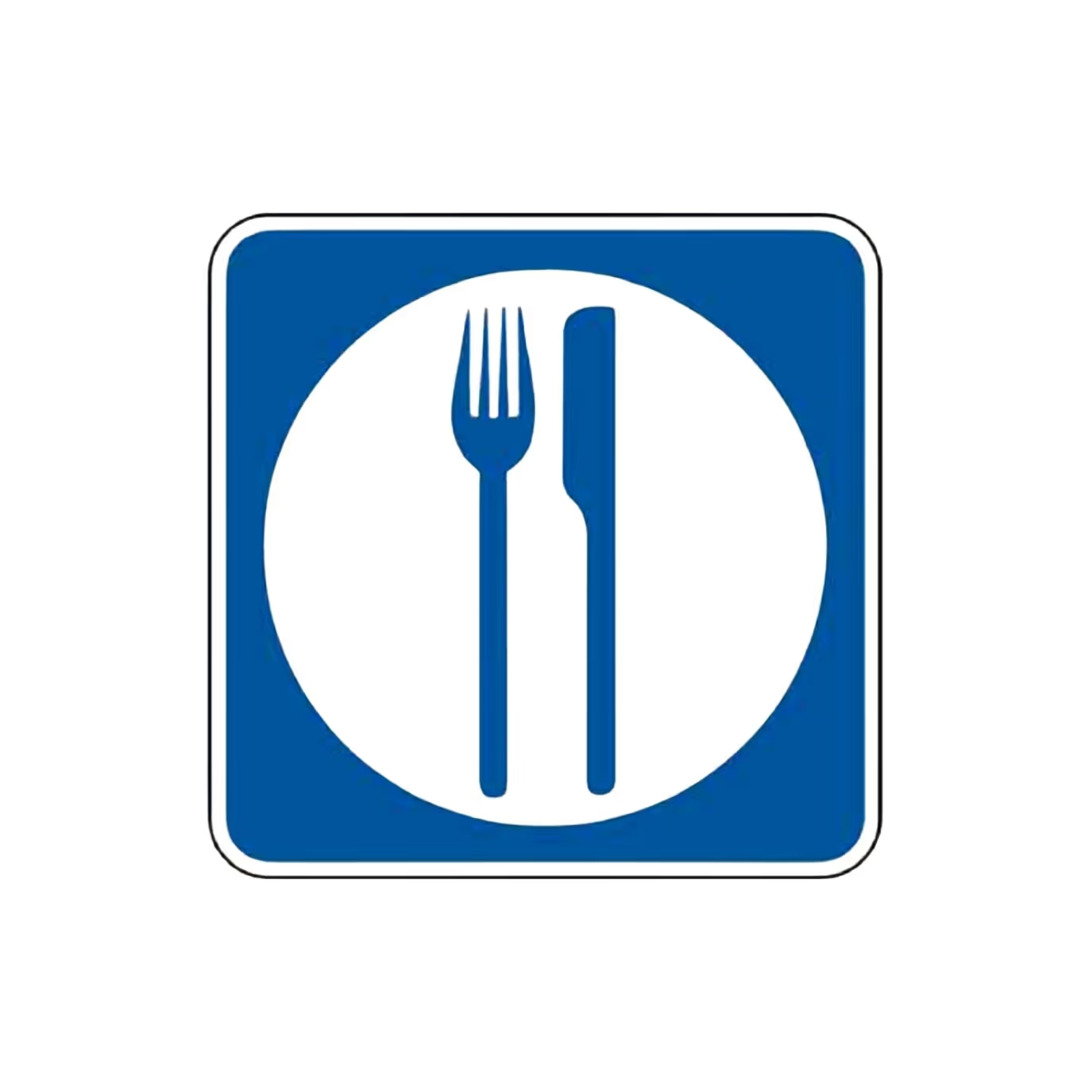
A food sign indicates the availability of food services ahead, helping drivers locate dining options during their journey.
Key points to remember:

A lodging sign indicates that there are accommodations available ahead. It is used to help travelers find places to stay during their journey.
Key points to remember:
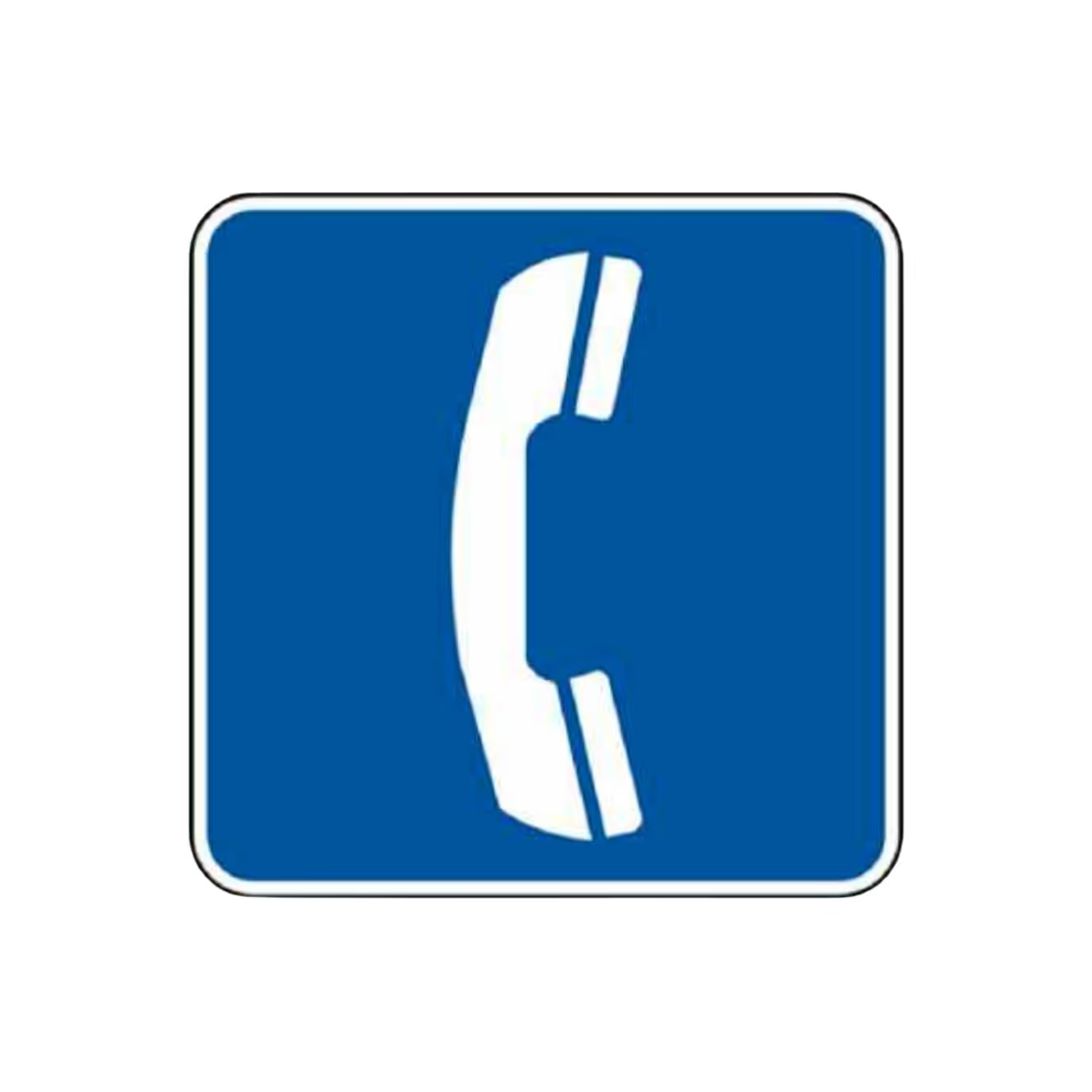
This sign indicates that telephone services are available ahead. It is particularly useful in remote areas where communication options may be limited.
Key points to remember:

A hospital sign indicates that a hospital is located ahead. It is used to guide drivers and emergency vehicles to medical facilities.
Key points to remember:
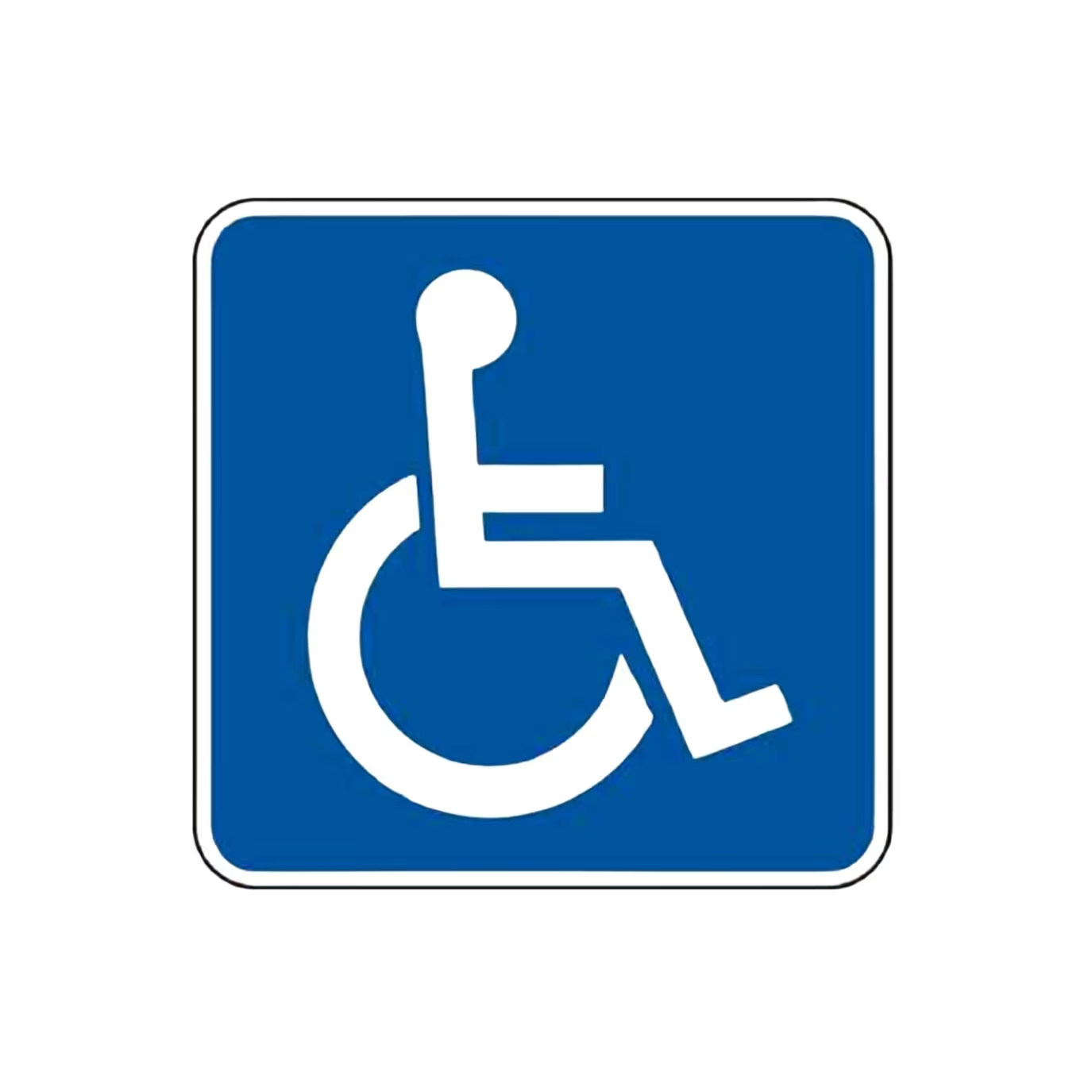
This sign indicates that parking is reserved for vehicles with appropriate handicapped permits. It ensures that parking spaces are available for those with disabilities.
Key points to remember:
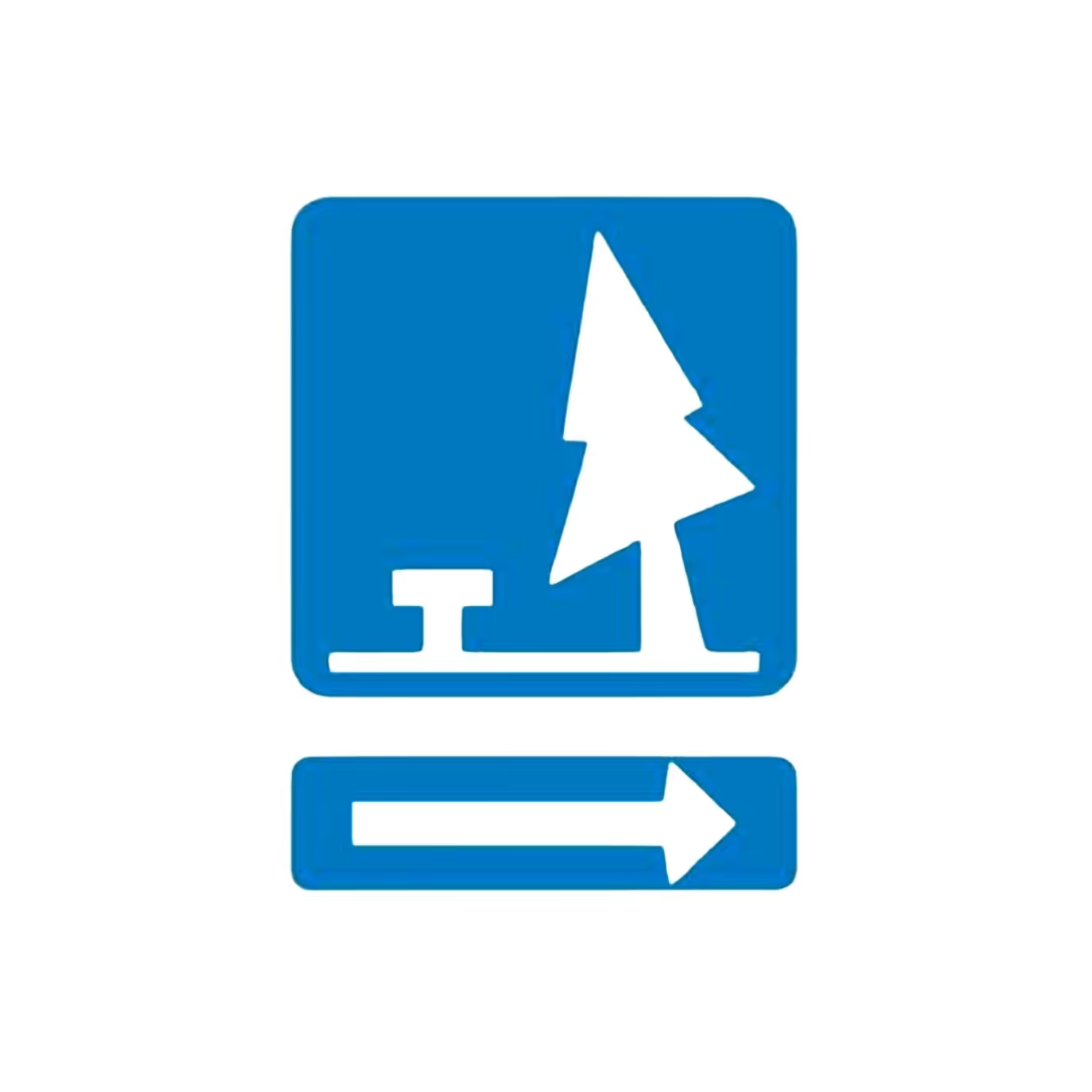
A rest area ahead sign indicates that a rest stop is available ahead on the highway. It helps drivers plan breaks during long trips.
Key points to remember:

This sign represents an interstate highway route number, helping drivers navigate and identify the highway they are traveling on.
Key points to remember:

A rest area sign indicates the distance to an upcoming rest area, typically one mile ahead. It helps drivers plan stops for rest or services.
Key points to remember:
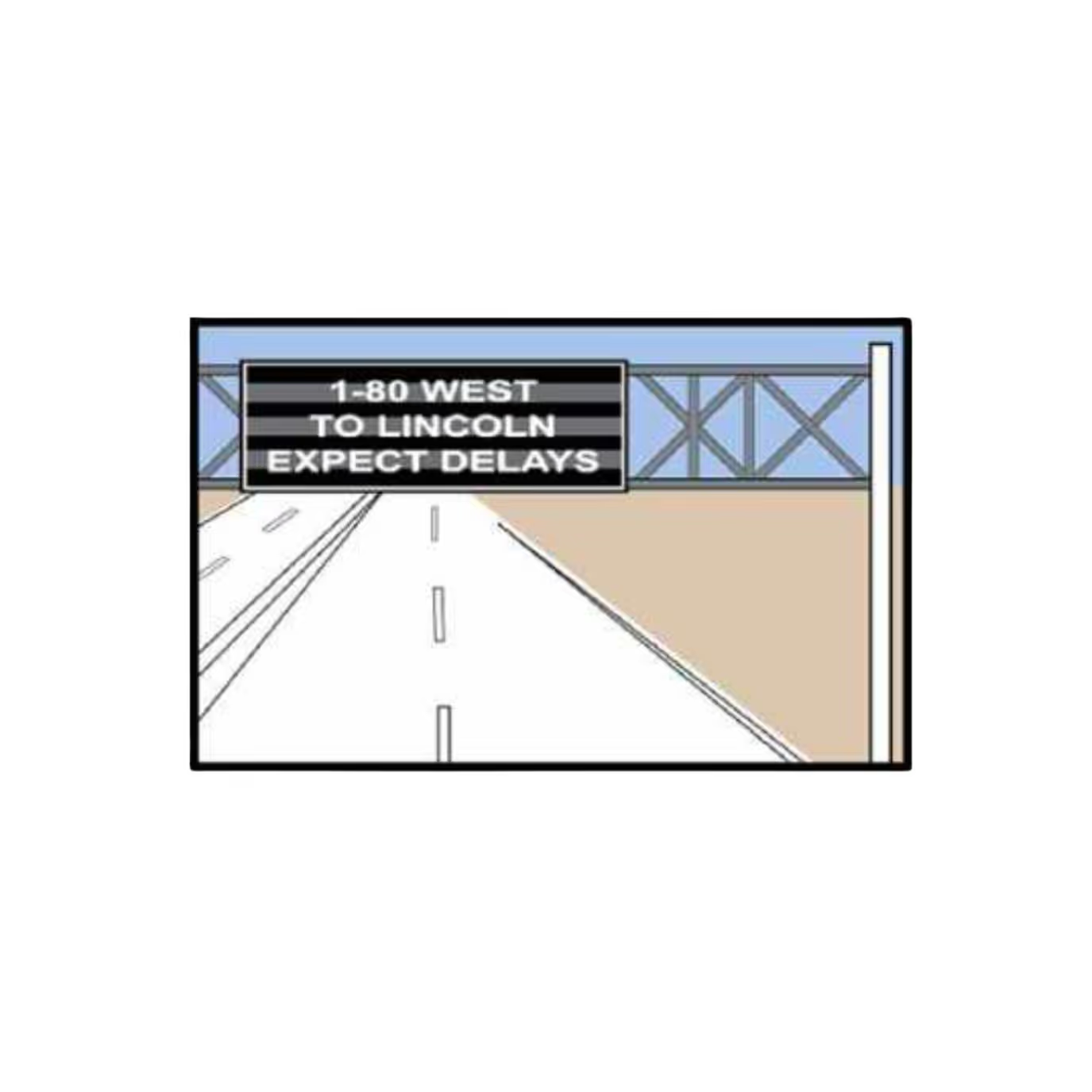
A dynamic message sign provides real-time information to drivers, such as traffic conditions, road closures, or weather alerts. It helps drivers make informed decisions while on the road.
Key points to remember:

An exit number sign represents a highway exit number, indicating the distance to the exit. It helps drivers navigate and plan their route effectively.
Key points to remember:
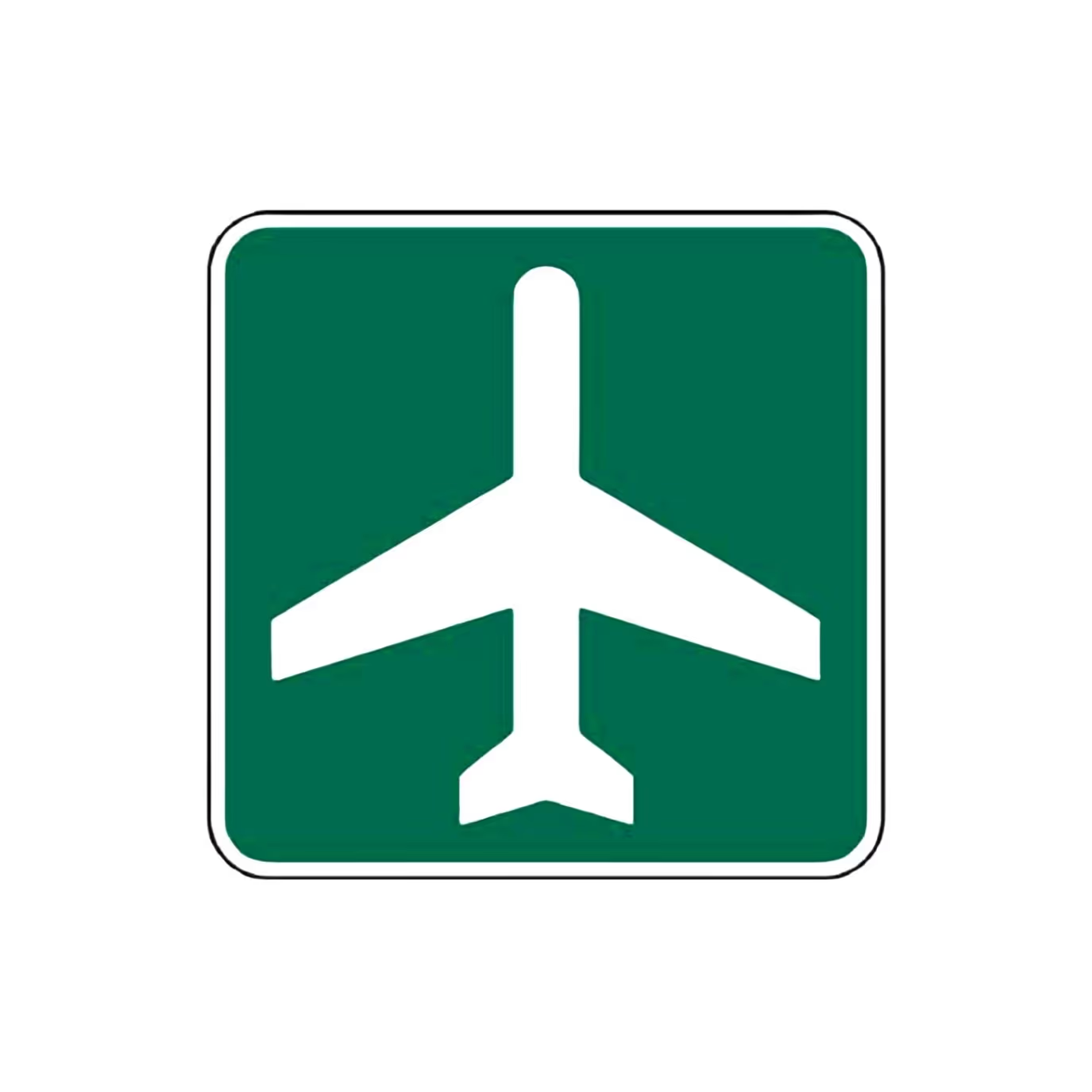
An airport ahead sign indicates that an airport is approaching. It helps drivers and travelers identify the location of the airport for pickups, drop-offs, or catching flights.
Key points to remember:

